34th Avenue Slow Street
34th Avenue Slow Street
2023 - $15,000 General Operating Support
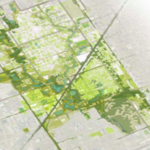
After Infrastructure
2015 - $8,000 After Infrastructure
Adi Shamir is an advisor, historical researcher and writer focused on historic conservation, land reclamation, ecology restoration and the re-purposing of urban infrastructure. She has served as a Dean at California College of the Arts and the Executive Director of the Van Alen Institute.
After Infrastructure, by Adi Shamir, is an ongoing project that researches the history of sewer and storm-water managements through case studies from ancient Rome’s public works to Germany’s reclamation of the Ruhr Valley brownfields. The research and subsequent book, After Infrastructure: The City as Frontier, is a reaction to Adi Shamir’s work in the post-industrial city of Detroit, where she helped develop the Bloody Run Creek Greenway project. This project will redesign the Bloody Run Creek and provide better water quality- through natural filtration of air pollutants, wetlands, and retention- as well as better air quality, restored wildlife habitats and economic benefits, such as increased property values.
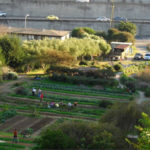
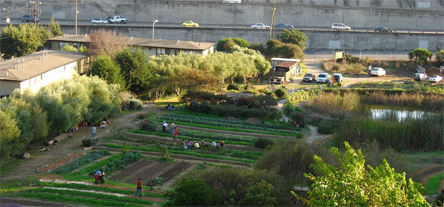
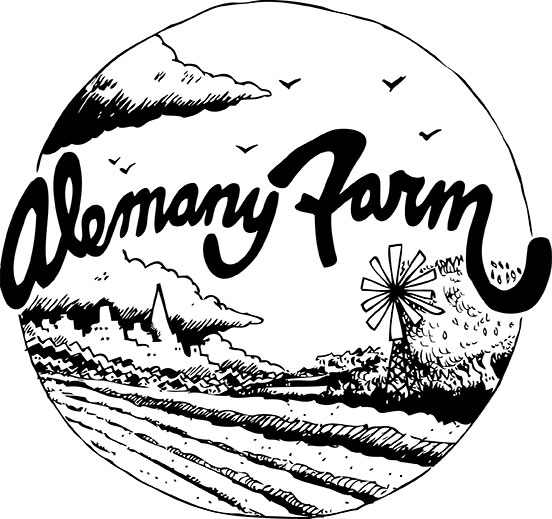
Friends of Alemany Farm
2007 - $2,500 General Support
Friends of Alemany Farm is a volunteer group that manages the horticulture, volunteer, and educational programs at Alemany Farm, a 4.5 acre organic farm ecosystem in southeast San Francisco.
Alemany Farm grows food and educates local residents about how they can become their own food producers and strive to increase ecological knowledge and habitat value, and to sow the seeds for economic and environmental justice. Strategies to further their cause include fostering environmental education by introducing children and adults to the idea that local food production can be part of a healthy ecosystem, inspiring visitors to start their own gardens at home, and promoting ecological-economic development by using urban agriculture as a way to develop green job skills.
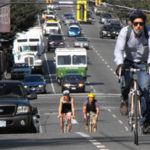
Alliance for Biking and Walking
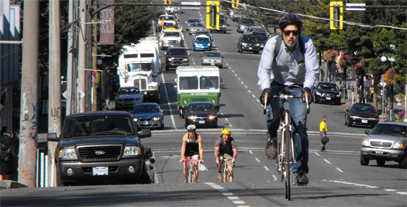
 Alliance for Biking and Walking
2013 - $8,000 Open Streets
2011 - $5,000 General Support
The Alliance for Biking & Walking creates, strengthens, and unites state and local bicycle and pedestrian advocacy organizations in every state, province, and major city in North America. These sustainable organizations are highly respected by the public, media, and policy makers. Their efforts in communities and their united strength at the national level have transformed cities into places where it is easy, safe, desirable and common for citizens to bike and walk.
Open Streets
Open Streets develops a curriculum for a comprehensive three-day open streets training for cities interested in starting or growing initiatives. Open streets (commonly called Ciclovías, Saturday Parkways, Sunday Streets, etc.) differentiate themselves from block parties and street fairs by promoting active living, healthy lifestyle choices and connecting neighborhoods. They are typically part of a broader effort to encourage sustained physical activity, redefine public spaces and increase healthy transportation options. By opening the streets to people, residents view and connect with the community in a whole new way. An exercise in community building and social engagement, open streets also provide free recreational opportunities and public space where people can meet, socialize and make new friends.
peoplepoweredmovement.org
Alliance for Biking and Walking
2013 - $8,000 Open Streets
2011 - $5,000 General Support
The Alliance for Biking & Walking creates, strengthens, and unites state and local bicycle and pedestrian advocacy organizations in every state, province, and major city in North America. These sustainable organizations are highly respected by the public, media, and policy makers. Their efforts in communities and their united strength at the national level have transformed cities into places where it is easy, safe, desirable and common for citizens to bike and walk.
Open Streets
Open Streets develops a curriculum for a comprehensive three-day open streets training for cities interested in starting or growing initiatives. Open streets (commonly called Ciclovías, Saturday Parkways, Sunday Streets, etc.) differentiate themselves from block parties and street fairs by promoting active living, healthy lifestyle choices and connecting neighborhoods. They are typically part of a broader effort to encourage sustained physical activity, redefine public spaces and increase healthy transportation options. By opening the streets to people, residents view and connect with the community in a whole new way. An exercise in community building and social engagement, open streets also provide free recreational opportunities and public space where people can meet, socialize and make new friends.
peoplepoweredmovement.org
 Amber Hasselbring
2011 Fellow
Amber Hasselbring is a San Francisco artist focused on exploring ecological relationships. Since 2004, she has produced collaborative, project-based works that involve participation by invited and circumstantial audiences. Hasselbring’s Mission Greenbelt Project (2007-present) explores themes of gentrification, education and urban ecology through performances and garden building efforts in San Francisco. The project is an ongoing urban earthwork of sidewalk gardens, planted with California native and other drought-tolerant plants. The gardens attract wildlife, relieve the city’s overburdened water treatment system and encourage volunteerism and cooperation. The proposed route connects Mission District parks and open spaces.
Amber Hasselbring
2011 Fellow
Amber Hasselbring is a San Francisco artist focused on exploring ecological relationships. Since 2004, she has produced collaborative, project-based works that involve participation by invited and circumstantial audiences. Hasselbring’s Mission Greenbelt Project (2007-present) explores themes of gentrification, education and urban ecology through performances and garden building efforts in San Francisco. The project is an ongoing urban earthwork of sidewalk gardens, planted with California native and other drought-tolerant plants. The gardens attract wildlife, relieve the city’s overburdened water treatment system and encourage volunteerism and cooperation. The proposed route connects Mission District parks and open spaces.
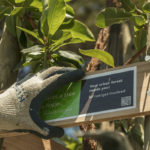
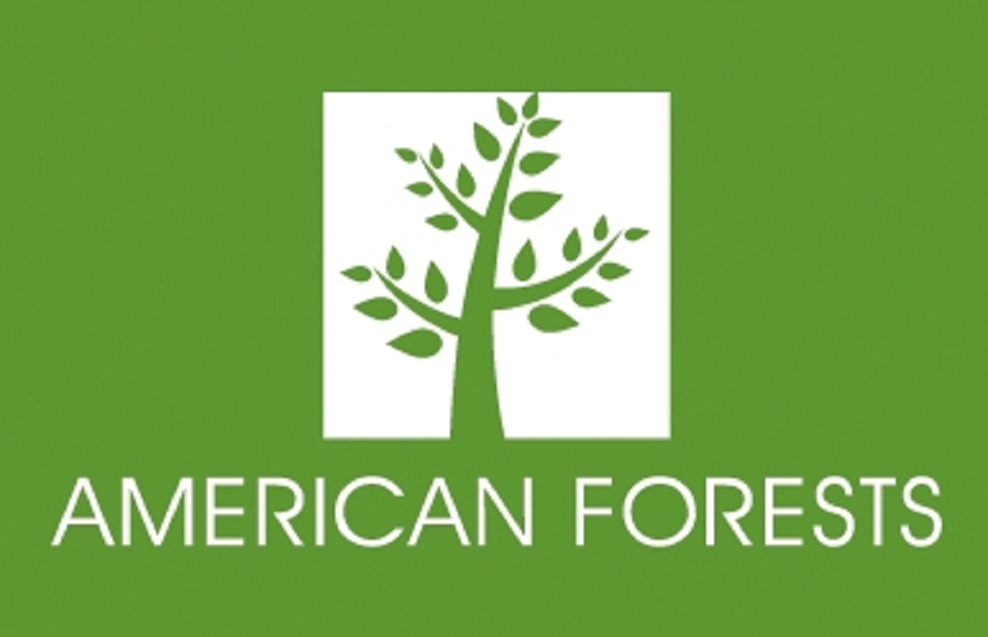
American Forests
2022 - $25,000 Cool Corridors
2021 - $20,000 Tree Equity
By piloting a new “Tree Equity Score” tool in the Bay Area, Seed Fund has laid the foundation for what has potential to become a revolution in greening cities nationwide. In part, Tree Equity Score is a way to build broader awareness that urban tree canopy is too often a map of income and ethnicity; as climate change worsens trees are becoming a critical life-saving and quality of life infrastructure. It is also a state-of-the-art platform that grounds this awareness in a simple metric, providing governors, mayors, city agencies, frontline organizations and residents a new way to mobilize action, attract resources, and track progress toward achieving Tree Equity in every neighborhood.
In 2019, the Doris Duke Charitable Foundation funded American Forests to develop some sort of a national GIS-based decision support tool to address this issue. Having pioneered such technology in the 1990s and 2000s, staff were all too aware that the field of urban conservation had become saturated with sophisticated mapping tools. Yet, that data was still not packaged in a way that told an effective story to generate and maintain momentum at the scale needed to substantively improve green infrastructure where it is most needed.
Seed Fund’s support to pilot a concept for a 0-100 scoring index down to the neighborhood level proved to be the perfect laboratory through which to develop and ground-truth an idea for a tool that could define a new, equity-focused narrative structure for urban forestry.
The first step was to develop the critical underlying methodology to measure how well a neighborhood or municipality is ensuring the benefits of urban tree canopy are reaching populations that are most vulnerable to climate change and public health impacts. The final factors, weighted equally against tree canopy and development density, were designed to be compared within a metro area but sought to avoid comparisons between different cities in vastly different ecoregions across the country. These datasets include:
If Tree Equity Score was to be a vehicle for a movement, it would need to provide more than a number. An online user experience that distills such complex information into a simple narrative for diverse audiences would be critical. The Bay Area pilot allowed for an iterative design process that included gathering feedback from local stakeholders like San Francisco’s Friends of the Urban Forest, Oakland’s urban forestry leaders and the California Urban Forestry Council. This process eventually led to what has become a very well-received mixture of design and function, as users have remarked at how much complex data is synthesized so clearly in the platform.
A mapping company called EarthDefine was so impressed with what they saw in the pilot phase they donated their own high-resolution national data layer to the project. Rather than spending a year developing such a layer, unique Tree Equity scores could be calculated and released in June, 2021 for more than 150,000 neighborhoods in 3,810 municipalities across all 486 urban areas of at least 50,000 people in the contiguous United States. These scores are accompanied by a suite of support tools. These include Vibrant Cities Lab’s Climate and Health Action Guide to help optimize urban forests to address climate change and public health issues, as well as the Community Assessment and Goal-Setting Tool that uses a separate gap score to guide stakeholders in structuring an inclusive, multi-organization urban forestry program.
Tree Equity Score and the critical issue it addresses has generated so much interest that American Forests was invited to co-author a New York Times data article to mark its nationwide release. With 522 million new trees needed to achieve Tree Equity nationwide, this level of visibility will be critical to contextualizing the large scale of investment needed from public, private and foundation sectors to grow this infrastructure that captures carbon, air pollution and storm water in the Bay Area and beyond.
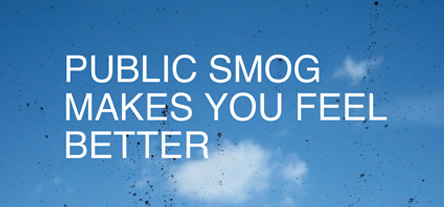 Amy Balkin
2010 Fellow
Amy Balkin is a cross-disciplinary artist working in San Francisco. Using a high level of research and social critique, Amy initiates critical conversations about the modern world in which we exist. Her recent projects include Public Smog, Invisible-5 and This is the Public Domain.
Public Smogis a park in the atmosphere that fluctuates in location and scale. The park is constructed through financial, legal, or political activities that open it for public use. Activities to create the park have included purchasing and retiring emission offsets in regulated emissions markets and making them inaccessible to polluting industries.When Public Smog is built through this process, it exists in the unfixed public airspace above the region where offsets are purchased and withheld from use. The park’s size varies, reflecting the amount of emissions allowances purchased and the length of contract, compounded by seasonal fluctuations in air quality. Public Smog opened over California's South Coast Air Quality Management District in 2004, and over the European Union in 2007.
Other activities to create Public Smog impact the size, location, and duration of the park. These activities include an attempt to submit Earth’s atmosphere for inscription on UNESCO's World Heritage List.
tomorrowmorning.net
publicsmog.org
Amy Balkin
2010 Fellow
Amy Balkin is a cross-disciplinary artist working in San Francisco. Using a high level of research and social critique, Amy initiates critical conversations about the modern world in which we exist. Her recent projects include Public Smog, Invisible-5 and This is the Public Domain.
Public Smogis a park in the atmosphere that fluctuates in location and scale. The park is constructed through financial, legal, or political activities that open it for public use. Activities to create the park have included purchasing and retiring emission offsets in regulated emissions markets and making them inaccessible to polluting industries.When Public Smog is built through this process, it exists in the unfixed public airspace above the region where offsets are purchased and withheld from use. The park’s size varies, reflecting the amount of emissions allowances purchased and the length of contract, compounded by seasonal fluctuations in air quality. Public Smog opened over California's South Coast Air Quality Management District in 2004, and over the European Union in 2007.
Other activities to create Public Smog impact the size, location, and duration of the park. These activities include an attempt to submit Earth’s atmosphere for inscription on UNESCO's World Heritage List.
tomorrowmorning.net
publicsmog.org

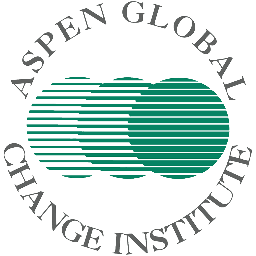
Aspen Global Change Institute
2017 - $15,000 The Adaptive Mind Project
Understanding and Building the Capacity to Deal with Constant,
Traumatic and Transformative Change
Climate adaptation professionals, resilience planners, and community leaders informing and implementing climate adaptation must perform their essential work in the context of accelerating change, disruption and the breakdown of interrelated life-support and human systems. The focus of this transdisciplinary project is to identify the components of psychosocial resilience in the face of constant, traumatic and transformative change – the Adaptive Mind – and develop support at scale for these leaders through training, peer support programs, and other resources.
Every day, scientific evidence and lived experience demonstrate the unfolding reality of accelerating, traumatic and transformational impacts of climate change. COVID-19, racial violence, economic disruption and increasingly apparent governance failures combine with climate crises to harshly convey the many and linked stressors that resilience-building efforts must address. Few, if any, in public offices, social and environmental service organizations and other institutions where the resilience workforce is situated have been formally trained to deal with these massive challenges and conditions of breakdown. And yet, accelerating change and disruption circumscribe the outlook for these professionals. Increasingly, the resilience workforce recognizes that we are headed into a world of (1) constant, accelerating change, marked by uncertainty, surprises and even outright not-knowing, (2) frequently direct or vicarious traumatic experiences, and (3) often transformational change (Moser et al. 2017). Grief, anxiety, fear, anger, depression, despair, overwhelm, and hopelessness vis-à-vis climate change are increasingly afflicting experts, communities and their leaders (Gilford et al. 2019). There is a pressing need to foster self-care and skill-building in the resilience workforce to support leaders as they lead their organizations and communities through transformational challenges (Moser 2020).
Our work, conducted with support from The Seed Fund prior to COVID-19, reveals already high percentages of respondents who are working in climate change adaptation reporting burnout (80% among surveyed practitioners). Responses also revealed widespread emotional distress and the impulse to leave these demanding jobs despite deep personal commitments to this work. The pandemic, its economic consequences and increased awareness of systemic racism are likely to have exacerbated this situation. The predominantly female resilience workforce is additionally burdened with child/elder care, already causing some to leave their jobs. Those who will be called on to lead and support communities in this uncertain future need insights, training and support to do so well while maintaining their humanity, especially as they may also live in the same communities they serve. By not addressing the role of psychosocial resilience or investing in professional training and peer support, organizations face decreased productivity, health impacts, staff attrition and weakened morale.
Additional work accomplished with initial seed funding include:
A 2-page Project Summary
A 2-page Hand-out with personal resilience resources
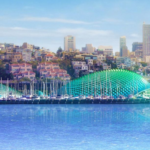
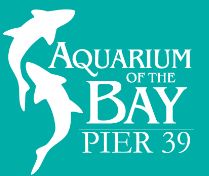
Bay.org
2016 - $10,000 Golden State Waters Action Summit
2015 - $10,000 EcoCenter at Heron’s Head Park
Golden State Waters Action Summit
Golden State Waters: San Francisco Bay and the World Ocean is the first Action Summit dedicated specifically to the protection of the waters where the San Francisco Bay (the largest estuary on the Pacific coast) meets the Ocean. The Summit convened top-level policy makers, government agencies, scientists, non-governmental organizations, and the private sector to participate in the development of actions to address important questions regarding the health of ecosystems in these waters and created an Action Agenda to address current and future issues. Key topics addressed were Climate Change Adaptation, Marine Debris, Marine Protected Areas, and Ocean Exploration and Technology. The Bay Institute is working with its partners to implement the Action Agenda.
EcoCenter at Heron's Head Park
bay.org’s mission is to change the relationship that people have with the Bay by protecting, restoring and inspiring conservation through its five unique divisions. One division is the EcoCenter at Heron’s Head Park, which is a certified LEED-Platinum building and living classroom that demonstrates how we can better use the Earth’s resources to sustain healthy people, economies and ecosystems in our local communities and beyond. Located in Bayview-Hunter’s Point, the EcoCenter provides elementary school through college programming, tours, seminars, workshops, and other events that are offered free of charge.
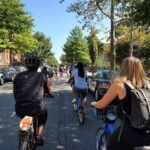
Bedford Stuyvesant Restoration Corporation
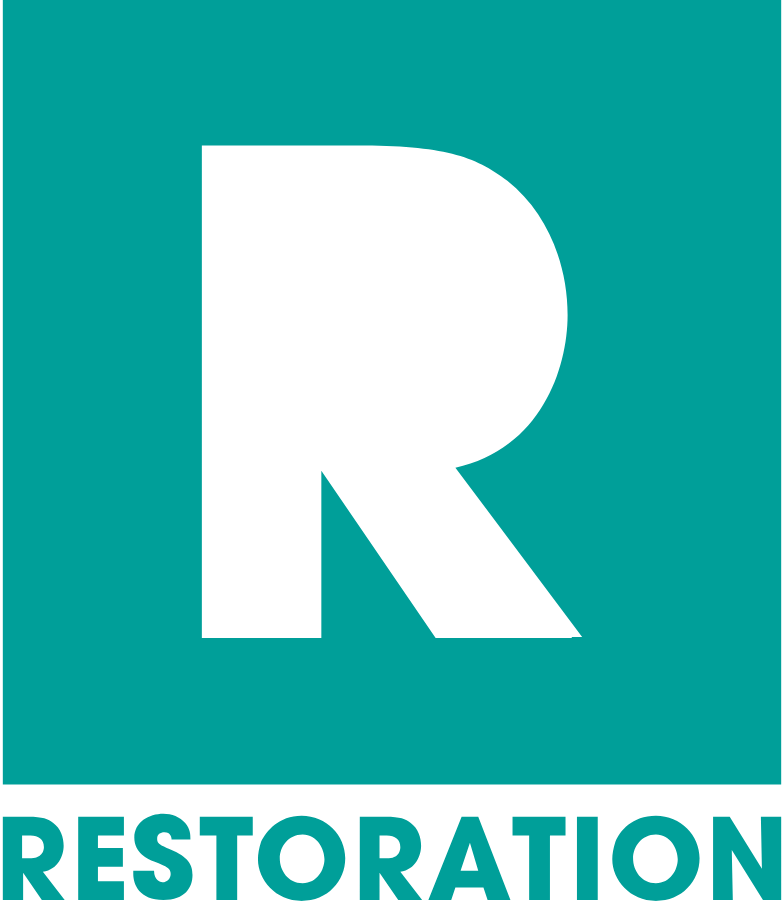
Bedford Stuyvesant Restoration Corporation
2021 - $10000 Micromobility As a Tool Towards Economic Equality
Bedford-Stuyvesant Restoration Corporation is the nation’s first community development corporation. Created in 1967 through grassroots activism and the bipartisan support of Senators Robert F. Kennedy and Jacob Javits, Restoration serves 50,000 people annually as an advocate, coalition-builder, and direct service provider. Based in Central Brooklyn, BSRC is rooted in the largest population of African-Caribbean diaspora in the United States where there is a convergence of economic, health, environmental disparities. Since 2015, Restoration has been a local, city-wide, and national leader in the bike share and micromobility sector.
BSRC’s mission is to disrupt and close the racial wealth gap to ensure all families in Central Brooklyn are prosperous and healthy. With a vision of a flourishing Brooklyn community consisting of strong families, businesses, and institutions and anchored in a culture of equity and inclusion, for over a decade their Center for Healthy Neighborhoods (CHN) aims to change the structural conditions that drive the inequities in chronic disease, focusing on policies, systems and environmental change within the food and transportation sectors.
Since Citi Bike’s further expansion into Bedford-Stuyvesant in 2015, BSRC has led the NYC Better Bike Share Partnership (NYC BBSP) to increase access to and usership of bike share in low-income communities of color in Brooklyn and throughout NYC. Restoration partnered with then Citi Bike operator Motivate, the NYC Department of Transportation (DOT), and NYC Department of Health and Mental Hygiene (DOHMH). The efforts of the partnership has resulted in the expansion of the $5 a month Reduced Fare Bike Share membership option to all SNAP recipients, the Citi Bike for Youth and Prescribe-A-Bike programs, the formation of Lyft’s Equity Advisory Board, and an increase in bike share access among low-income residents by over 77%.
The work of the NYC BBSP is centered on increasing access to active transportation options thereby, improving access to employment, education and other resources while increasing physical activity options in underserved communities. Ensuring that decisions around policies, investment and infrastructure in low-income areas are made by people with lived experiences in those communities will lead to better services and safer streets. This in turn allows for greater adoption of active transportation, and better access to resources that support health and economic opportunities.
With support from Seed Fund, BSRC is spearheading a multi-pronged initiative to increase employment and business opportunities, as well as representation of people of color from low income communities in decision-making positions within the micromobility sector. To accomplish this BSRC will:
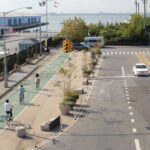

Brooklyn Greenway
2023 - $15,000 General Operating Support
Brooklyn Greenway Initiative (BGI) is committed to the development, establishment, and long-term stewardship of the Brooklyn Waterfront Greenway – a 29-mile protected and landscaped route for pedestrians and cyclists of all ages and abilities. When complete, the Greenway will connect Brooklyn’s waterfront, parks, and open space, commercial and cultural corridors, and new tech and innovation hubs for 2.65 million Brooklyn residents, over 1.1 million people who work in Brooklyn, and 15 million annual visitors from across New York City and around the world.
Since its founding in 2004, BGI has channeled more than $218 million in public and private investment toward implementation of the Greenway, leveraged public and private investment of $2.38 million toward the creation of the Naval Cemetery Landscape (NCL) as a new park-like space and memorial meadow adjacent to the Greenway, and conceptualized or supported the development and stewardship of other open spaces and public amenities along the Greenway. BGI hosts numerous public events and programs designed to activate the Greenway and NCL, foster critical support and stewardship for this vital public infrastructure, and build awareness and engagement of BGI as the organization dedicated to their long-term care.
Approximately 21 miles of the Brooklyn Waterfront Greenway are currently complete, and expansion projects are underway. While progress is encouraging, planning gaps remain, and resources for the Greenway’s ongoing maintenance and stewardship are severely lacking. New York City’s pandemic bikeboom (in 2020, bicycle use on the Greenway soared 3-5 times from 2019 and pedestrian use doubled) and increasing extreme weather have made it abundantly clear that the Greenway is essential intersectional infrastructure for public health and wellbeing, active transportation, and resiliency against the changing climate.
Due to the work of BGI and their partners, there is strong momentum to advance greenways in Brooklyn and across New York City. To make progress on this work, BGI is focusing on the following programs in 2024.
New York City Greenways Coalition: In 2021, BGI formed the New York City Greenways Coalition, a group of greenway-aligned partners focused on completion and continual enhancement of an equitable greenway network in New York City. The coalition has successfully advocated for a citywide greenways plan, in addition to federally funded greenway corridor planning across New York City. In the fall of 2024, Brooklyn Greenway Initiative is building support to host their second NYC Greenways Summit - a convening of greenway-invested stakeholders across sectors to share expertise on the need for comprehensive planning, implementation, and upkeep of a fully developed greenway network in NYC. Attendees of the summit will receive a greater understanding of New York’s City transportation policy and clear next steps for influencing policymakers to support greenway infrastructure.
Brooklyn Waterfront Greenway Advocacy, Community Engagement, and Stewardship: The Brooklyn Waterfront Greenway still has 8 miles to go to complete its 29 mile corridor from Greenpoint to East New York. In 2024, BGI will continue to build partnerships to advocate for completion and engage communities across Brooklyn in stewardship activities, bike rides, and other activities to increase awareness and use of greenways.
Brooklyn Waterfront Greenway User Study: To improve the greenway and advocate for completion, BGI needs to better understand who’s using it and how. In March 2023, BGI launched a 13-month study to measure use along 29 miles of the Brooklyn Waterfront Greenway. With our project partners, BGI installed 32 computer sensors along the corridor to measure the volume of use and mode of use (pedestrian, bicycle, skateboard, etc.) for 24 hours each day. In 2024, BGI will publish a report of the user study’s findings, along with fieldwork data that will work to inform the forthcoming Greenways Master Plan and the community based planning efforts happening concurrently. In addition to usership, BGI will have data to demonstrate the environmental impacts of the Brooklyn Waterfront Greenway and on reduced vehicle trips and carbon emissions.
Naval Cemetery Landscape Public Space: This 1.7 acre public space, pollinator meadow, and historic site is a place for respite and community on the Brooklyn Waterfront Greenway. Fully operated and funded through BGI and their supporters, the landscape is open year round for visitors and hosts dozens of public programs every year. Located in a community that is lacking in greenspace, It is a unique natural area and peaceful spot that welcomed over 14,000 visitors in 2023. In 2024, BGI will continue to maintain an expanded schedule of stewardship events to engage community volunteers in greening projects. BGI will work to develop dynamic public programs, events, and engagement opportunities with community, nonprofit, and corporate partners to grow in-person public engagement, education, nature, art, and wellness programs at the Naval Cemetery Landscape and on the Greenway.
More information about Brooklyn Greenway Initiative is at: brooklyngreenway.org; and the NYC Greenway Coalition, created and maintained by BGI, is here: greenways.nyc.

California Academy of Sciences

California Academy of Sciences
2018 - $10,000 Biodiversity Toolkit for Cities
2016 - $10,000 Citizen Science Program
2015 - $10,000 Citizen Science Program
2007 - $5,000 Capital Campaign, Green Roof
The California Academy of Sciences is a multifaceted scientific institution committed to leading-edge research, to educational outreach, and to finding new and innovative ways to engage and inspire the public. The Academy's mission - to explore, explain and protect the natural world - extends to all corners of the institution; from a research expedition in the highlands of Papua New Guinea, to a teacher training program in a California classroom, to an interactive game on the museum exhibit floor.
One of the highlights of the Academy of Science’s Museum is the living roof. The masterstroke of rooftop’s design lies in making the park's environment such a visible part of the building itself. The rooftop's seven undulating green hillocks pay homage to the iconic topography of San Francisco and blurs the boundary between building and parkland.
Citizen Science Program
Following the San Francisco Urban Biodiversity Summits in 2013 and 2014, the California Academy of Sciences has been leading charge in convening biodiversity leaders in the Bay Area and through their Citizen Science Program. In order to address the lack of knowledge on the biodiversity of California, the Academy aims to crowd-source data through observations of plants and animals by citizen scientists, encouraging people of all backgrounds to work together to build the data set of biodiversity required to make local and global conservation decisions.
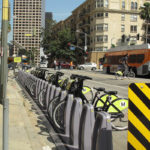

California Bicycle Coalition
2023 - $15,000 Climate Action Plan for Transportation Infrastructure
2021 - $10,000 Engaging with California Action Plan for Transportation Infrastructure (CAPTI)
2020 - $15,000 Toolkit for Temporary Road Closures/ Biking During COVID-19 Pandemic
2019 - $15,000 General Support
2019 - $10,000 General Support
The California Bicycle Coalition Education Fund (CalBike) advocates for equitable, inclusive, and prosperous communities where bicycling helps to enable all Californians to lead healthy and joyful lives.
CalBike is guided by a vision of California where:
Since 1999, CalBike has promoted sustainable transportation and healthy communities. They have organized trainings, conferences, workshops and direct support for bicycle and equity advocates, sharing best practices with local and state-level leaders. They have created toolkits and how-to guides to give local leaders the information they need to implement great bicycle infrastructure. They have succeeded in pressing Caltrans to greatly increase bike/walk infrastructure funding. They have shaped state-level guidelines to encourage protected bike lanes and intersections, making California a leader in the kind of people-friendly street design that encourages bicycling among people of all ages, cultures, genders, and income levels.
CalBike's focus is on the intersection of social justice and sustainable transportation, and their policy team works to redress the discriminatory transportation policies that have divided and polluted California's disadvantaged communities, especially where those policies have disadvantaged people who ride or want to ride bicycles. To that end, CalBike has succeeded in shaping grant guidelines and priorities to ensure that a majority of state bike/walk funds go to disadvantaged communities. They have pushed Caltrans to use highway maintenance funds to build Complete Streets, streets that serve all users, and pressed them to devote more safety funds to biking and walking, along the state highways that often serve as main streets in disadvantaged communities. They work with local community advocates in disadvantaged communities, offering training to help them access bike/walk infrastructure funding. They have worked to connect BIPOC transportation advocacy leaders with the skills and knowledge to effectively promote sustainable transportation policy, and to bring representation of BIPOC communities to the halls of power, including the California Transportation Commission.
CalBike works closely with advocates across the state and in Sacramento, collaborating with them on intersecting issues such as pedestrian access, transit and housing.
Complete Streets
All roads in California should be safe and inviting for people of all ages and abilities to bike, walk, or ride public transit. That’s the vision for CalBike’s Complete Streets Campaign. After significant pressure, Governor Newsom and Caltrans leadership have stated support for Complete Streets, and promised to implement them where appropriate. However, Caltrans has in the past instituted but failed to implement good Complete Streets policies. CalBike is acting as a watchdog, holding Caltrans and the governor accountable to their stated promise to prioritize Complete Streets.
Changing the Conversation Around Climate and Transportation
Currently, the state-level conversation about reducing transportation sector carbon emissions focuses on the transition from gas cars to electric ones. While this transition is necessary, it is insufficient to address the climate crisis, and ignores as well the hopeful possibilities for a just climate transition that includes and lifts up low-income people and people of color. CalBike works to influence policymakers and environmental organizations to ensure that bicycling, walking, transit, and in-fill housing are part of the conversation.
Shared Micromobility for Everyone
CalBike is working to save bike and scooter share from the unsustainable profit-centered model. They work to integrate public shared mobility into public transit systems so that users may access bikes and scooters on the same terms and in the same manner as public transit. Whether through a purely public service or a public-private partnership, this kind of support and integration is essential to accomplishing our goal of affordable and healthy mobility for all Calfornians, including those who live in low-income neighborhoods.
Quick-Build Toolkit and "Slow Streets" How-To
CalBike created two guides to respond to the increase in bicycling under the pandemic. The Slow Streets How-To Guide offers communities best practices on how to implement Slow Streets—streets closed to through traffic, where people walking and biking can have plenty of room to have fun, get exercise, and get where they need to go safely. CalBike's Quick-Build Toolkit, created in partnership with Alta Planning + Design, is a comprehensive guide to quick-build bicycling infrastructure. Quick-build is a method of building bike and pedestrian safety improvements—protected bike lanes, pedestrian crossings, slow streets, parklets, and more—now, within a tight budget. In challenging times, quick-build projects are crucial to building trust in the government’s ability to deliver public benefit. And quick-build infrastructure can engage the public better than ever, and be more inclusive and equitable than traditional infrastructure. With support from the Seed Fund and in collaboration with Alta, CalBike created a 4-page brochure to convince policymakers to push for quick-build. The full 77-page Toolkit tells city planning departments step by step how to implement quick-build projects.
Emergency COVID Bicycling Resources
CalBike quickly responded to the pandemic and the resulting surge in bicycling with a host of online resources for those new to bicycling, as well as people who were already biking but had questions about how to ride safely under COVID.
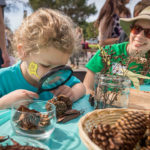
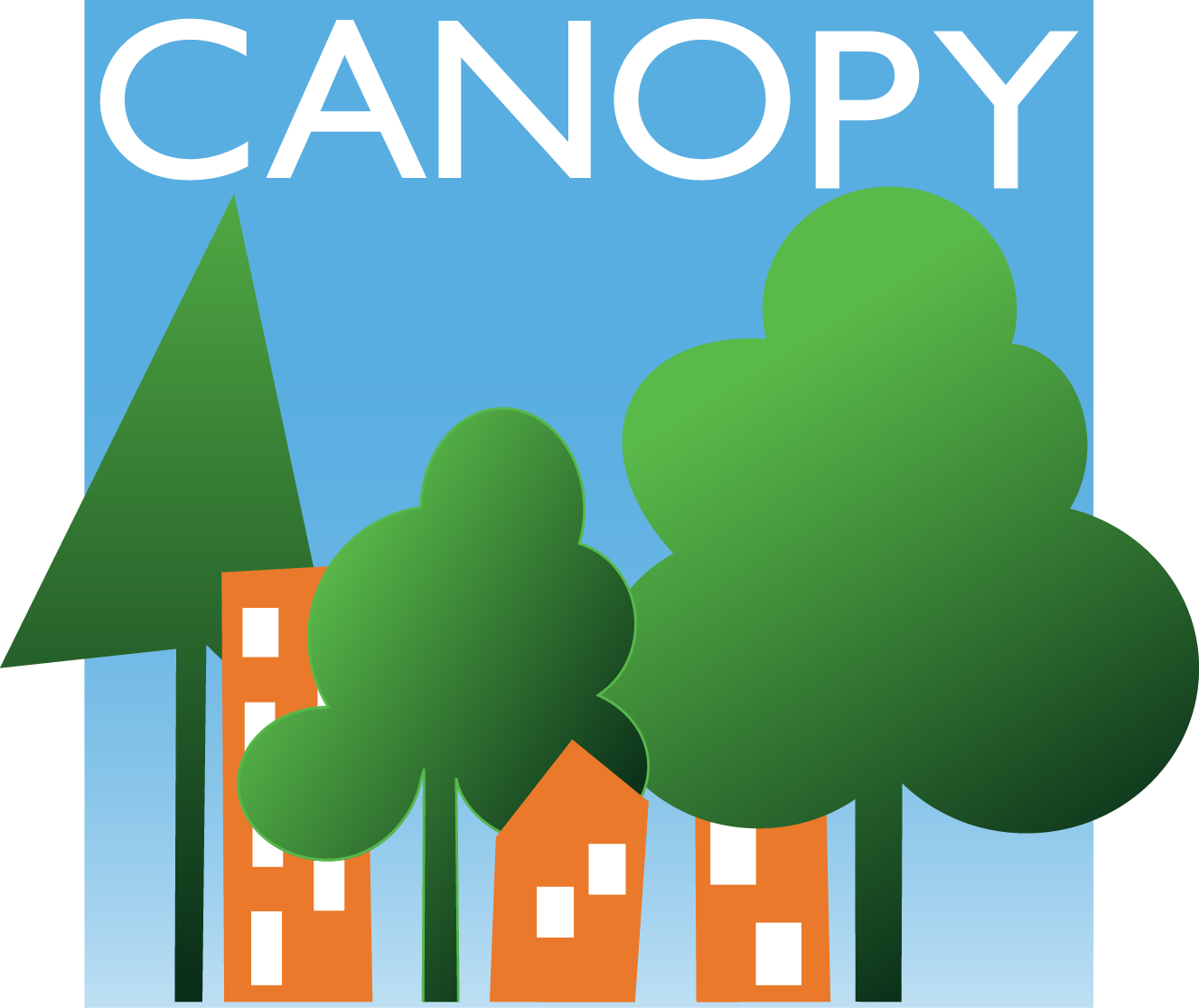
Canopy
2019 - $15,000 Tree Inventory Project in East Palo Alto
For over two decades, Canopy has been the leading voice for trees in San Francisco Midpeninsula communities, using trees as change agents to mitigate climate change, advance environmental justice, and transform neighborhoods. Each year Canopy engages thousands of local families, volunteers, and students in planting trees and stewardship at parks, school campuses, and neighborhoods. Canopy carefully selects the “right tree for the right place” to ensure long-lived trees that deliver maximum community benefit. The trees provide shade for streets and buildings, reduce urban heat island effect, store and sequester carbon long-term, beautify neighborhoods, and support local ecosystem functions and a diverse web of native wildlife.
Canopy also equips hundreds of K-12th grade students with hands-on environmental science lessons and urban forestry internships, sparking their curiosity about nature and empowering youth to make a difference in their community. The growing scale and complexity of the environmental issues we face, from climate change to pollution to loss of biological diversity, demands an environmentally literate public that is inspired to act as stewards of the earth and apply practical environmental know-how to support an improved quality of life. That is why Canopy starts with youth environmental education as an entry point to develop the next generation of environmental stewards who will contribute to the growth of urban tree canopy and our future of climate resiliency.
Creating a healthy urban forest takes much more than planting trees. Without smart policies and long-term investment, urban trees and green spaces are vulnerable to drought, development, poor planning, and inadequate care. Canopy has successfully made the case for investing in community trees, with far-reaching impact in local communities and beyond.
Founded in 1996, Canopy was created to support the City of Palo Alto’s urban forestry programs and educate residents about the value of trees and their care. In 2006, Canopy began partnering with the community of East Palo Alto to address environmental equity and public health issues in their city, particularly those associated with unequal canopy cover and lack of access to urban nature.
In 2017, Canopy further expanded to meet growing demand for programs in Belle Haven, Mountain View, North Fair Oaks, and Redwood City. Today, Canopy is a regional and sector-leading organization with active programs in five Midpeninsula cities and counting.
Canopy’s mission to grow urban tree canopy in Midpeninsula communities is accomplished through three interconnected core programs:
Trees: Canopy takes direct action to grow tree canopy cover and enhance green spaces by engaging volunteers and partners to plant hundreds of trees and steward thousands of trees every year in their communities.
Education: Through K-12 programs, High School Internships, and Adult Education programs, Canopy leads communities to the knowledge, attitude, skills, and actions that support the urban forest.
Advocacy: Through advocacy at various jurisdiction levels, Canopy steps up to help partners adopt tree-friendly policies and practices, and ensure adequate funding for tree programs in the Midpeninsula.
By growing local urban forests, Canopy creates urban environments that restore community health and invigorate natural ecosystems. And by empowering youth and residents, Canopy plants the seeds of community connection and long-lasting change.
Canopy’s The Great Oak Count Project Report
The Great Oak Count is a citizen science survey of native oaks in Palo Alto using state-of-the-art online digital mapping technology. Twenty years ago, Canopy engaged volunteers in the “Oakwell Survey” of 9,000 native oaks on public and private property in Palo Alto, the only known comprehensive oak dataset. The city was losing its iconic mature oaks at an alarming rate and the City Council had just adopted its first tree protection ordinance. In 2017, Canopy launched The Great Oak Count to engage volunteers in a new survey of the native oaks to create an updated geolocated inventory and map.
Native oaks play a unique role in improving critical urban functions, and as the state of our environment becomes more precarious these trees will enhance the capacity of cities to adapt to a changing climate.
The Great Oak Count is the first program that implements San Francisco Estuary Institute’s Landscape Resilience and Re-Oaking principles. The Great Oak Count fills a key gap in urban forestry research by providing information about tree population dynamics on private lands, which comprise the majority of urban forest canopy. The Great Oak Count data is unique, and can help researchers understand regional urban oak population changes, assess the effectiveness of tree protection ordinances, and make informed resource management decisions.
Funding from the Seed Fund helped Canopy assemble a nimble team of Palo Alto volunteers to survey and map the native oaks throughout the city. Canopy’s project lead is an oak expert and has guided the volunteer team to survey over 2,000 native oaks in nine neighborhoods. The project lead is responsible for recruiting and conducting training sessions with volunteers, organizing volunteer teams to survey, and tracking progress with the Tree Plotter mapping tool. Funding from the Seed Fund also helped Canopy to create materials to promote the survey project, and purchase tablets and data plans to bring the training into the field.
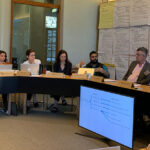
Carbon Neutral Cities Alliance
Carbon Neutral Cities Alliance
2022 – $25,000 Embodied Energy
The Carbon Neutral Cities Alliance (CNCA) is a global network of cities working strategically and urgently toward a carbon neutral future within the next 10 to 20 years—the most ambitious and comprehensive GHG emission reduction targets undertaken by any cities across the globe. Created in 2015, CNCA supports leading cities worldwide that are working aggressively toward a zero-carbon future to advance their own transformational efforts, collaborate with each other and key partners to overcome barriers, foster innovative approaches, and share lessons with other cities ready to pursue similar goals.
CNCA’s mission is to mobilize transformative climate action in cities in order to achieve prosperity, social equity, resilience and better quality of life for all on a thriving planet.
CNCA’s Approach
CNCA mobilizes transformative, game-changing climate action through the following seven strategic focus areas:
Climate Justice
CNCA is committed to advancing a just carbon neutral future through approaches that recognize and redress the disproportionate burdens and the disproportionate benefits of the fossil fuel economy by prioritizing climate action that advances the well-being of low-income people, Indigenous Peoples, communities of color, immigrants and refugees and other historically marginalized communities. CNCA’s approach to climate justice is outlined in the Climate Justice Statement and related work includes learning and grant opportunities to support local climate justice through collaborative projects with these priority communities.
Dramatically Reducing Embodied Carbon in Europe
Reducing embodied carbon in the built environment is one of CNCA’s strategic program areas. Published in 2020, one key outcome of this work to date is the City Policy Framework for Dramatically Reducing Embodied Carbon, which documents in detail a set of 52 policies that cities can enact to reduce embodied carbon. Policy interventions are identified across five areas of city influence: Zoning & Land Use, Building Regulations, Procurement, Waste & Circularity, and Financial Policies. Each policy has been evaluated by experts for potential carbon reduction impact, cost efficiency, ease of implementation and enforceability. The framework was developed in partnership with One Click LCA, and Architecture 2030.
In 2021, CNCA launched an exciting new project Dramatically Reducing Embodied Carbon in Europe, a three-year project in partnership with Built by Nature and the Laudes Foundation which aims to foster widespread adoption of ambitious local, national and regional policies that will reduce embodied carbon and increase the uptake of bio-based materials in the built environment in Europe.
By delivering technical support, engaging communities and industry stakeholders and facilitating peer learning, CNCA is creating the conditions for eleven European cities to lead in the development and implementation of innovative policies that will transform the built environment. As we close out year two of the project important results are clearly visible.
Technical assessments conducted with partner One-Click LCA in the first half of the project allowed city teams to identify the most promising policy levers at their disposal to reduce embodied carbon and promote the use of bio-based materials. All eleven cities are now at work developing and implementing tailored policy interventions that will lead to implementation in the final year of the project.
Some of the most ambitious policies range from carbon scoring land sales and setting carbon benchmarks for buildings to density bonuses and innovative methods to track the carbon savings from the reuse of construction materials in new builds and renovations.
Building the narrative around the many co-benefits of low-carbon buildings and bio-based materials is essential for cities to both advocate internally and engage stakeholders. Capacity building sessions are helping cities break down silos by working across departments in policy development and implementation. CNCA is also helping cities elevate success stories through communication materials and policy guidelines, demonstrating the potential and making embodied carbon and bio-based materials more accessible to communities.
Success at the city level is helping drive change at the national levels and in the European Union. The project has seeded the growth of national coalitions in Finland, the UK, France and Spain. These coalitions are actively advocating for national policy that better enables cities to reach their embodied carbon targets and to eliminate regulatory red tape that hampers the uptake of bio-based materials.
Year two has also seen CNCA, together with partner Eurocities, extensively advocate for change at the European level, where a unified approach to accounting for whole-life emissions has yet to be introduced in EU legislation.
In 2022 the focus has been on helping shape the revision of the Energy Performance and Buildings Directive (EPBD) and the Construction Products Regulation (CPR). Recommendations integrating the concepts of whole life carbon, embodied carbon, and bio-based materials were transmitted through bilateral exchanges with MEPs, rapporteurs and shadow rapporteurs of the EPBD and CPR policy files. In 2023 focus will shift to the upcoming Revision of the Waste Framework Directive.
Interest in the project is steadily increasing as CNCA continues to share learnings from the project widely. In 2022 CNCA presented progress at the Klosters Forum (TKF22), the Berlin Sustainable Built Environment Forum, the Barcelona Smart City Expo and at events with Energy Cities and the World Green Building Council.
2023 is set to be an exciting year with cities ramping up implementation, success stories proliferating and awareness of the role of bio-based materials increasing across Europe. A new phase of work, supported by the Seed Fund, will explore opportunities to reduce greenhouse gas emissions from the design, construction and operation of buildings, public space and infrastructure while also reducing the adverse impacts of such processes on frontline communities. CNCA will engage built-environment experts across the field to explore how North American cities can best advance this vision through the infrastructure they build and the codes and regulations that influence private construction, developing.
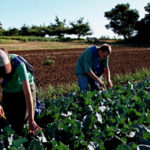
Center For Agroecology, UC Santa Cruz
![]()
Center For Agroecology, UC Santa Cruz
2009 - $10,000 Publication Feasibility Study
2007 - $10,000 General Support
The mission of the Center for Agroecology & Sustainable Food Systems is to research, develop, and advance sustainable food and agricultural systems that are environmentally sound, economically viable, socially responsible, non-exploitative, and that serve as a foundation for future generations. The Center is within the Division of Social Sciences at UC Santa Cruz, and undertakes projects in many disciplines working with faculty, staff, and students from throughout the university. Beyond the campus, the center collaborates with non-governmental organizations, growers, community members, visiting students and researchers, as well as state and federal agencies. The Center's work includes both theoretical and applied research; academic education and practical training; and community outreach and public service for audiences ranging from local school children to international agencies.
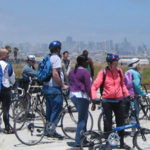
Center for Creative Land Recycling

Center for Creative Land Recycling
2012 - $5,000 San Francisco Blue Greenway Project
2010 - $5,000 San Francisco Blue Greenway Project
The Center for Creative Land Recycling (CCLR) is a nonprofit organization focused on creating sustainable communities and encouraging environmentally conscious and socially responsible development through the facilitation of land recycling. Their work is founded on the belief that the creative reuse of already used lands, (often environmentally-distressed properties, commonly referred to as “brownfields”) is the key to responsible land use and sustainable development. This is accomplished through training, technical assistance and funding for communities who are attempting to turn around vacant or environmentally distressed properties through creative private, public, and nonprofit partnerships.
The San Francisco Blue Greenway is a 13-mile long corridor along San Francisco’s southeastern waterfront that will link established open spaces; create new recreational opportunities and green infrastructure at brownfield sites and in brownfield impacted areas; provide public access through the implementation of the San Francisco Bay Trail, the San Francisco Bay Water Trail, and green corridors to surrounding neighborhoods; increase neighborhood vitality through connectivity; install public art and interpretive elements; support stewardship; and advocate for full waterfront access as an element of all planning and development processes throughout southeastern San Francisco.
CCLR is assisting the San Francisco Parks Alliance (formerly the Neighborhood Parks Council) in navigating the brownfields process to design and develop parks along the Blue Greenway.
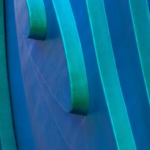
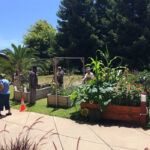
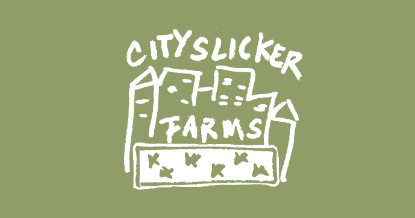
City Slicker Farms
2007 - $2,500 General Support
City Slicker Farms was founded in 2001 to provide an immediate solution to West Oakland’s lack of real choice for fresh, affordable, healthy food. Their programs have a long-term sustainable impact, changing underutilized urban landscapes into ones that provide healthy, affordable food and improve the environment for generations to come.
City Slicker Farms now consists of seven Community Market Farms (spaces open to the public), over 100 Backyard Gardens, a weekly Farm Stand, a greenhouse, and Urban Farming Education programs. City Slicker Farms also has a Policy Advocacy Initiative, using its experience to promote sustainable food systems and a green economy on a regional and statewide basis. Together these activities preserve and re-imagine green space in the inner-city for food production, engage residents in environmental education and serve as a model for urban green growth.
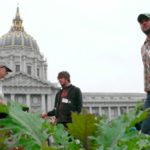
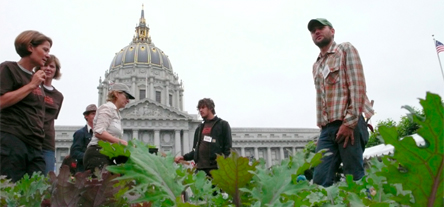
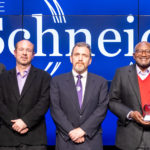

Climate One
2022 - $15,000 General Support
2021 - $18,000 General Support
2019 - $15,000 General Support
2018 - $15,000 Resilience Program
2017 - $15,000 General Support
2017 - $15,000 General Support
2015 - $15,000 Resilience Program
When Greg Dalton set off for the Russian Arctic in 2007, he didn't know how profoundly his life was about to change. Upon returning home, Greg worked with Commonwealth Club CEO Gloria Duffy to launch Climate One.
Climate One is rooted in the belief that climate disruption is the single greatest challenge humanity has ever faced. A sustainable, just, and equitable path forward starts when we come together to talk about our concerns, share expertise, and put forth bold ideas.
Since its founding, Climate One has provided a unique and respectful space for influential, inclusive discussions. Dalton and his team have prioritized a broad, evidence-based conversation about climate disruption and its consequences by bringing leaders and experts on different sides of issues together in pursuit of empathy, common ground, and cross-sector solutions.
Now in their second decade, Climate One is doubling down on their mission to be the premier platform for the conversation about the climate emergency. Through their podcast, national radio show, and live convenings for thought leaders and concerned members of the public, Climate One creates opportunities for dialogue that inspire a more complete understanding of the current crisis.
A pioneer in the podcast arena, Climate One has seized on the opportunity to become an influential voice in a previously untapped media segment, exceeding 100,000 downloads each month. In parallel, radio stations across the country have taken notice and Climate One now airs on more than 50 public radio stations in red and blue states from Texas, Georgia and Florida, to Pennsylvania, California and more. By building credibility and a broad community, every conversation they publish reaches more than 50,000 people, and that audience is growing rapidly.
In addition to their weekly climate show, they support leading science communicators through the Stephen H. Schneider Award for Outstanding Science Communication. Created in 2010, the Schneider Award has honored a variety of natural and social scientists such as Dr. Robert Bullard, Dr. James Hansen, Dr. Katharine Hayhoe and more. In a world so littered with disinformation, Climate One is committed to recognizing the scientists who have dedicated their lives to understanding the climate crisis and informing the public.
Imperative to a constructive conversation is diversity and representation. Across the nation, in all aspects of life and governance, the BIPOC community has been marginalized. Climate One recognizes that the climate conversation has been no exception. While black and brown communities are affected first and worst by the pollution, severe weather, sea level rise, and economic upheaval brought on by climate change, their voices have not been heard. In 2020, Climate One renewed their commitment to amplifying the voices of BIPOC speakers and perspectives on their program. Climate change is a racial justice problem, and needs to be covered as such.
Climate One envisions a world where a clear-eyed awareness of the climate crisis shapes decisions ranging from personal behavior to public policy and where the full spectrum of humanity’s wisdom, talent, and expertise is marshaled toward the wellbeing of all life on Earth. That is why they are going beyond simply raising awareness to catalyzing action with a conversation that can expose the web of interrelated issues and the impact on the global ecosystems, economies and communities. They set the stage for one-time adversaries to develop empathy and perhaps become partners who develop solutions that inspire us all.
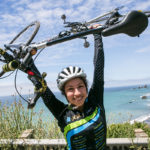
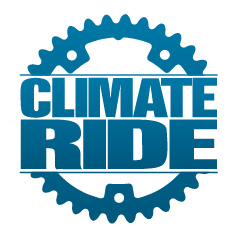
Climate Ride
2023 - $8,000 General Support
2022 - $8,000 General Support
2021 - $6,000 General Support
2020 - $6,000 General Support
2019 - $6,000 General Support
2018 - $3,000 General Support
2017 - $3,000 General Support
2016 - $3,000 General Support
2015 - $3,000 General Support
Climate Ride is a 501(c)(3) nonprofit organization that organizes life-changing charitable biking, running, and hiking events to raise awareness and support sustainability, active transportation, and environmental causes.
Climate Ride, founded in 2008, inspires and empowers people to work toward a sustainable future. Climate Ride unites advocacy and philanthropy. We use sport as a means to change lives and build an effective, citizen-based sustainability movement.
You have the right to a healthy environment, yet the environment is one of the least funded sectors in American philanthropy. Climate Ride aims to change that. Climate Ride creates opportunities for people to engage in a way that is uniquely positive, life-affirming, and transformational while providing grants to environmentally-focused non-profits. Climate Ride participants take on a challenge much bigger than themselves and share their journey with their personal networks helping to amplify support for the cause. Our organization endeavors to foster environmental giving as a priority for new and seasoned donors. Climate Ride is the only organization taking this approach in the environmental sector. Our goal is to bring people and nonprofits together to inspire action and make protecting the planet a philanthropic priority for everyone.
We create and organize multi-day bike rides, runs, and hikes, as well as virtual and independent events. These challenges serve as a catalyst for participants to engage new stakeholders and strengthen advocacy for the environment while creating a substantial grants program for environmental and active transportation non-profits. Climate Ride supports participants with strategies to help reach out to thousands of people as they raise funds for our grants program. This creates unique opportunities to push for environmental justice and climate advocacy. Participants get to select the projects and organizations they fund from a list of groups working on climate change, environmental justice, clean energy, active transportation, sustainable infrastructure, and public health.
We are all feeling concerned, anxious, or overwhelmed by climate change. The threats to our world are numerous and growing more complex each day. While so many people care deeply and want to help address the problem, the enormity of the challenge and the political tone around climate change can feel dispiriting and disempowering. Climate Ride offers a way to make a difference while building new friendships and connections with a global network of outdoor advocates.
Our mission is to inspire and empower citizens to work toward a sustainable future. By using personal challenges as a means to change lives, Climate Ride is building an effective, citizen-based sustainability movement. Climate Ride empowers participants to actively engage in the fight against climate change by completing multi-day outdoor adventure events to fundraise for the organizations they value most and take action together for the planet. Our community proves that immersive outdoor experiences and personal challenges are powerful tools for generating the behavioral change to help ignite activism on climate policy, raise critical funds, and influence public opinion.
Take Dave for example. Dave is a retired firefighter in California who Dave heard about Climate Ride from a local bike coalition he donated to annually. He decided to take on the challenge and along the way raised several thousand dollars. On the ride, he was inspired by speakers and found a movement he could believe in. Since that first ride, he’s raised over $50,000 for Climate Ride grants program and become a huge advocate in his community. Climate Ride is a growing movement of people like Dave who are joining together to take positive action to help our planet.
At a Glance:
Because of the extraordinary efforts of the record 600 Climate Riders, Runners, and Hikers in 2019, Climate Ride awarded over $800,000 in grants. These powerful grants have resulted in direct support to help fight legal battles for public lands and clean air. Climate Ride amplified diverse voices in sustainable transportation and provided funds for organizations building safer options for bicyclists and walkers. These grants have led to renewable energy projects in national parks, relieving pollution in critically impacted ecosystems. Climate Ride helped brace an environmental movement that needs new voices and an active citizenry willing to walk the walk and bike the bike.
We expanded our Community Leaders awards program, which provided unparalleled opportunities for young sustainability leaders to experience the enrichment and inspiration of a Climate Ride. Our inaugural Green Fondo Weekend event engaged a record 250 cyclists – 70% of whom were new to the Climate Ride cause. Overall, we delivered 107 grants to beneficiaries working in sustainability, renewable energy, climate action, conservation, and public health. In 2020, Climate Ride needed to postpone several events due to challenge of the COVID-19 Pandemic. We launched a new virtual event, Climate Rise, which brought together over 400 people for the cause, and generated more than $100,000 in grants.
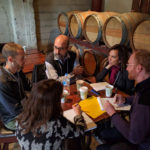

ClimatePlan
2020 - $20,000 Climate Equity Work
ClimatePlan recognizes that California has been shaped by a history of inequity, racism, oppression, and disinvestment. This history has created a California where low-income communities and BIPOC communities are disproportionately burdened by the impacts of climate change and poor land use and transportation decision making. ClimatePlan was built on the fact that no single organization can solve these challenges. ClimatePlan is an incubator and catalyst for non-profit organizations across the state to mobilize at the local, regional, and state levels to create equitable, transformative change in how California plans and builds communities across the state. ClimatePlan provides a space where non-profit organizations can invest in shared leadership, learn from one another’s expertise, and build relationships with one another. ClimatePlan acknowledges that equity does not involve a particular set of policies; rather, it is about paying attention to the knowledge, needs, authority, autonomy, and power of the most vulnerable communities—and acting in ways that support these communities.
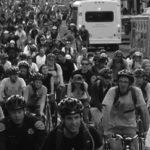

Critical Mass
2012 - $5,000 20th Aniversary Celebration
Critical Mass got started in September 1992 in San Francisco as a way to bring cyclists together in a festive re-claiming of public space. Beginning rather under a less catchy name—the Commute Clot—the ride drew an initial crowd of 60 cyclists, and these numbers doubled for several months following.
Critical Mass has continued and grown in San Francisco, drawing hundreds from month to month, with typical rides around 1,500 to 2,000 (an all-time high on the 2002 10th anniversary is rumored to have been 10,000 cyclists!), but it has spread to over 300 other cities as well. For example, two dozen Italian cities have vibrant Critical Masses now, with Rome leading the way. In 2012, bicyclists in Brazil staged Critical Masses in over 20 cities to dramatize a surge of cyclist deaths in that country's car-centric streets. With independent rides springing up all over the place, Critical Mass has begun to take on the character of a large scale, decentralized grassroots movement!
September 2012 celebrates 20 years since the first Critical Mass took place in San Francisco. A week long series of events and rides are planned. The Seed Fund grant will support documentation of the events including a publication and original poster and sticker art.
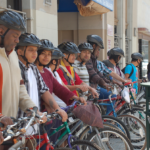

Cycles of Change
2021- $10,000 General Support
Mission:
Cycles of Change works to improve the health and sustainability of East Oakland neighborhoods by increasing the use of bicycles as transportation. Cycles broadens access to biking in low-income communities of color through education programs and low cost or free resources, and connects youth with the extraordinary living ecosystems of their local area to build a diverse community of visionary young leaders.
History:
Cycles of Change is deeply rooted in East Oakland. Starting in the basement of Roosevelt Middle School in 1998, a small-but-mighty staff of 3 led young riders on after-school bike adventures and offered them opportunities to earn bikes. These programs became wildly popular and developed a huge following. Since then, the organization has expanded to offer in-school bicycle safety trainings and adult commuter programs for low income Oakland residents, as well as in 2009 opening The Bikery, a community bike shop making biking more accessible for all kinds of riders.
Through these endeavors, Cycles of Change has built deep, multi-generational relationships in East Oakland and the East Bay with schools, community-based organizations, and families throughout Alameda County. Cycles lifts up East Oakland youth and families with a multi-pronged approach including after-school Bike Clubs, in-school bike safety classes, high school mentorships, and youth job training and employment.
Vision:
Climate Justice: Cycles of Change envisions a world in which everyone has access to clean air, water, and nature. This vision is currently far from reality, as East Oakland residents are impacted every day by environmental racism baked into Oakland’s geography. Cycles of Change works to increase bike ridership and minimize reliance on cars, empowering local residents and growing access to the natural world through pedal-powered adventures to public greenspaces and ecosystems in East Oakland.
Affordable Mobility: Cycles of Change believes that every resident of the San Antonio district and East Oakland should have access to bikes, because flexible, affordable mobility boosts residents’ quality of life and grows their agency over the spaces in which they live. Through The Bikery, a community bike shop located at 23rd Ave and 12th Street, Cycles of Change seeks to make this dream a reality. For eleven years and counting, The Bikery has been an indispensable resource for community members, providing sliding-scale and pro-bono bikes and repairs to over 1,000 customers a year, facilitating high school internships and earn-a-bike programs, and serving as a hub of community for local youth to socialize and learn bike mechanics.
Values:
Equity: Cycles of Change works with an equity lens, believing strongly in a holistic framework of Transportation Justice at the urgent intersection of movements for racial, gender, economic, environmental, and disability justice. Currently, the organization is fully comprised of educators and advocates of color, committed to bold solutions in communities most impacted by climate change and environmental racism.
Collective Governance: Cycles of Change believes in shared knowledge and uses a democratic decision-making process and horizontal organizational structure that makes space for many voices. Cycles of Change commits to restorative justice and harm-reduction approaches to conflict management that do not involve law enforcement or the carceral state.
Programs:
Community Voices:
“It feels amazing to be riding in the city I live in. It feels good because you put more force into it [compared to a car] and you get to exercise more.” --Sarayha (2021 MetWest Huerta Bike Club)
“Learning to ride a bike feels really great because I can ride whenever I want now. I get to see places I’ve never been before, and I really like feeling the wind while I’m riding.” --Quennie (2021 MetWest Huggins Bike Club)
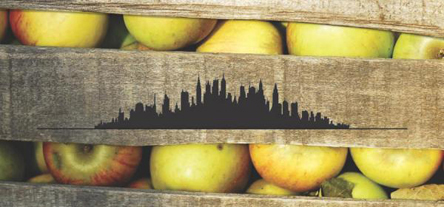 Darrin Nordahl
2010 Fellow
Darrin Nordahl is speaker and writer on issues of food and city design. He has taught in the City and Regional Planning Department at UC Berkeley and in the Landscape Architecture program at UC Berkeley Extension.Nordhal currently resides in Davenport, Iowa, a once Agricultural Rust Belt city now poised to redefine urbanism in the Midwest. His book Public Produce (Island Press, 2009) showcases how innovative urban food concepts can add vitality to city spaces. He believes that good city design can change behavior for the betterment of the individual and society.Other books by Nordahl include: My Kind of Transit: Rethinking Public Transportation (Island Press, 2009) and Making Transit Fun!: How to Entice Motorists from their Cars (Island Press, 2012).
darrinnordahl.com
Darrin Nordahl
2010 Fellow
Darrin Nordahl is speaker and writer on issues of food and city design. He has taught in the City and Regional Planning Department at UC Berkeley and in the Landscape Architecture program at UC Berkeley Extension.Nordhal currently resides in Davenport, Iowa, a once Agricultural Rust Belt city now poised to redefine urbanism in the Midwest. His book Public Produce (Island Press, 2009) showcases how innovative urban food concepts can add vitality to city spaces. He believes that good city design can change behavior for the betterment of the individual and society.Other books by Nordahl include: My Kind of Transit: Rethinking Public Transportation (Island Press, 2009) and Making Transit Fun!: How to Entice Motorists from their Cars (Island Press, 2012).
darrinnordahl.com

The Mississippi / Atchafalaya River Basin is the nation’s largest drainage area, directing over 1.2 million square miles of runoff from America’s heartland to the mouth of the delta and transporting fertile sediment downstream.
Image credit: Dredge Research Collaborative
The Mississippi’s levees, spillways, and revetments trap sediment in the main course of the river, impeding navigation and port activity and starving adjacent floodplains and wetlands of this nourishing resource. This image shows active dredging operations in the Birds Foot Delta in southern Louisiana.
Photo credit: Ben Mendelsohn and Alex Chohlas-Wood
Lake Michigan is edged with a thick network of federally maintained navigation channels serving commercial and recreational interests, requiring periodic dredging and sediment relocation.
Drawing credit: Dredge Research Collaborative
Currently, more than half of the material annually dredged in the Great Lakes requires placement in nearshore landfills, or Confined Disposal Facilities (CDFs). Many of these facilities are at capacity and unable to accommodate projected future needs.
Photo credit: Sean Burkholder
Drawing credit: Dredge Research Collaborative
The Placement and Reuse Facility (PRF) at Erie Pier in Duluth, Minnesota highlights a potential future for dredged sediment. Rather than a site of long-term disposal, the facility separates dredged sediment into graded material that can be resold and reused locally.
Photo credit: Brett Milligan
Dredging in the Bay and Delta enables ship traffic, generates material for shoreline construction, and remediates contaminated grounds. Where channels cut through the Delta, salinity intrusion into the waterways will follow, with cascading effects on already stressed aquatic habitats.
Drawing credit: Dredge Research Collaborative
An average of 3-6 million cubic yards of sediments are dredged from the San Francisco Bay every year to maintain safe navigation, 40% of this material is beneficially reused. While multiple restoration sites exist around the bay that need sediment for survival, financial and logistical hurdles often prevent beneficial reuse and lead sediment to be disposed of offshore, exported from the system.
Drawing credit: Dredge Research Collaborative
The 2,600 acre Hamilton Wetlands restoration site received millions of cubic yards of dredge piped from the Port of Oakland’s Harbor Deepening project onto the flat expanse of a retired airfield. This project was realized through careful timing and planning –advance notice of the harbor deepening project allowed for the sediment ‘matchmaking’ to occur, while economies of scale made the movement of sediment financially feasible.
Photo credit: Dredge Research Collaborative

Dredge Research Collaborative (DRC)
2017 - $10,000 Silt, Sand & Slurry: Sedimentary Infrastructure and the Geography of Dredge" Book Publication Project
The Dredge Research Collaborative (DRC) is an independent 501c3 nonprofit organization which investigates human sediment handling practices, through publications, events, and design projects. Our mission is to improve sediment management through design research, building public knowledge, and facilitating transdisciplinary conversation. Over the past ten years, the DRC has been at the forefront of exploring the massive human impact on the flows and movements of sediments, and investigating how these flows might be more intelligently and equitably designed.
The members and co-founders of the DRC organized the critically acclaimed DredgeFest event series across the four coasts of the United States. The first DredgeFest was held in New York City on September 28 and 29, 2012. DredgeFest NYC was organized in partnership with Studio-X NYC, an arm of Columbia University’s Graduate School of Architecture, Planning, and Preservation; sponsored by Arcadis, TenCate, and TWFM Ferry; and featured speakers and content from agencies including the US Army Corps of Engineers, National Park Service, Environmental Protection Agency, and New York City Economic Development Corporation. The second DredgeFest was held in Louisiana from January 11 to 17, 2014. Partners included the Robert Reich School of Landscape Architecture at Louisiana State University, the Coastal Sustainability Studio at Louisiana State University, the Center for Land Use Interpretation, Gulf Coast Public Lab. The third DredgeFest was held in Minnesota from August 14 to 21, 2015. DredgeFest Great Lakes was hosted by the University of Minnesota’s School of Architecture and Department of Landscape Architecture. DredgeFest California, the fourth event, included five days of interdisciplinary design workshops, discussions with many different experts, two days in the field with the DredgeFest California public tours, and background research conducted prior to the event. It was supported by Great Lakes Dredge and Dock, Landscape Architecture Magazine, the UC Davis Hellman Fellows Program, the University of California, Davis’ Department of Human Ecology, Groundworks Office, the Delta Protection Commission, the University of California, Berkeley’s Department of Landscape Architecture and Environmental Planning, and the Dutra Museum Foundation.
Each DredgeFest was designed as a learning encounter between government agencies, designers, theorists, academics, corporate practitioners, industry experts, students, and the public. Each DredgeFest situated sedimentary management in the context of current regional conversations and issues, including climate change, sea-level rise, wetland restoration, environmental justice, public access and recreation
In terms of design and landscape architecture, members of the DRC actively serve as consultants to multiple state and Federal agencies and NGOs to collaborate on infrastructural and ecological restoration design projects, including working with The US Army Corps of Engineers, U.S. Army Engineer Research and Development Center, US Fish and Wildlife Service, CA fish and Wildlife Service and the Nature Conservancy. Members of the DRC also co led the Public Sediment Team and helped craft their award-winning proposal for the Resilient by Design Bay Area Competition.
In addition to publishing numerous articles, book chapters and planning reports, they will soon be publishing a book called Silt Sand Slurry: Dredging, Sediment, and the Landscapes We Are Making, authors Rob Holmes, Brett Milligan and Gena Wirth demonstrate why sediment matters now more than ever, given sea level rise, accelerated environmental change, and spatial inequity. This is approached through a documentation of the geography of dredging and sediment on the four coasts of the continental United States. This documentation is accomplished through alternating, complementary visual chapters and text chapters. Along the way, they explore the many limitations of the way that sediment systems are currently designed, such as short-sighted efforts to keep dynamic ecosystems from changing, failure to value sediment as a resource, and inequitable decision-making processes. Finally, using Public Sediment as a case study, they describe an approach to designing with sediment that is adaptive, healthy, and equitable.
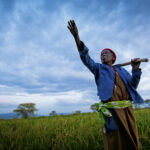

Earth Island Institute
2015 - $10,000 Brower Youth Awards
The Earth Island Institute founded the Brower Youth Awards (BYA) and New Leaders Initiative (NLI) in 2000, to honor and mentor young environmental leaders and use their stories to encourage other young people to pursue environmental and social justice projects. Each year six young leaders from North America, ages 13 to 22, are selected for a Brower Youth Award. Each BYA winner is honored in an award ceremony in San Francisco, a $3,000 honorarium, leadership and public speaking coaching, a wilderness excursion, and mentorship and career guidance in the years following their award. The NLI also produces short films about each BYA recipient that have been shown nationally on public television, at film festivals, and in schools. As of 2014, NLI has also provided an additional $1,500 in honoraria for BYA awardees to use for professional development opportunities.
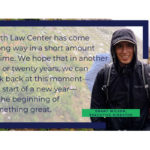

Earth Law Center
2019 - $10,000 General Support
2017 - $10,000 Biodiversity Rights Ordinance
Mission: Earth Law Center (ELC) works to pass a new generation of Earth-centered laws in the United States and worldwide, including by seeking legal rights for Nature. California and the San Francisco Bay Area has long been a focal point of our work.
Introduction to Earth Law: Traditional environmental law has failed. Despite the passage of thousands of environmental laws and policies in the U.S. and globally, Nature's health continues to decline. We must awaken from the misguided belief that exploiting and destroying Nature leads to prosperity. Earth law, or ecocentric law, is an effort to remake the legal system in ways that promote a better balance between human needs and the needs of those ecosystems that we inhabit.
Goal: ELC's long-term goal is to build a system of law that aligns human activities with biological constraints on a livable, thriving planet. In the U.S., our strategy to this end is to empower local movements and help them pursue regulatory and legal changes that are more protective of Nature.
Strategy: ELC works throughout the USA and globally using the following strategies::
1. Write model laws that are “ecocentric”—i.e., ecosystem well-being is the primary concern;
2. Work to put ecocentric laws into practice in order to restore ecosystems to health; and
3. Train the next generation of legal professionals to help save the planet; and
Grassroots Campaigns: Much of ELC's work operates at the local level. ELC provides pro bono legal support to communities wishing to apply new, cutting-edge legal frameworks that are more protective of Nature. With legal movements growing to give legal rights to Nature and recognize the human right to a healthy environment, amongst others, communities and governments need help drafting strong new laws. Not only does ELC draft these laws, but we also teach other lawyers to do similar work.
History: After being founded in Florida in 2009, ELC spent its formative years operating out of the San Francisco Bay Area, where it hired its first Executive Director and co-founded the Bay Area Rights of Nature Alliance. Since then, ELC has engaged in law and policy campaigns throughout the Bay Area and California, protecting rivers under the Clean Water Act, advancing new “Earth-centered” laws and policies, and building a movement of legal professionals who work to transform the legal system to better protect Nature. Over the years, ELC has also established a national and global presence with team members in Washington State, New York, and Mexico City, amongst other places.
Seed Fund Projects: ELC is a proud recipient of two grants from Seed Fund advancing our work. The first project involved advancing the Rights of Nature in San Francisco with an emphasis on Nature’s inherent right to thriving biodiversity. The second project involved new policies that promote native, low water usage, drought-resistant tree species in San Francisco. For both projects, ELC wrote in-depth policy reports, met with a broad range of stakeholders and governmental officials, and submitted formal proposals for new laws/policies that are under consideration in 2021. Through this work, we hope to create a blueprint for a future in which humans and Nature thrive together in harmony in the San Francisco Bay Area. We also hope that new laws will not only protect Nature, but also restore it to health.
Other Recent Wins: In addition to our work with Seed Fund, here are some of ELC's wins from the last year or so:
Learn More: Visit www.earthlawcenter.org. You can also sign up for our newsletter or follow us on Facebook, LinkedIn, and Twitter.
YouTube Videos About Our Work:
General https://www.youtube.com/watch?v=lubNvaTigAU
Ocean Rights https://www.youtube.com/watch?v=LH31biWQgt0
River Rights https://www.youtube.com/watch?v=I2p7EfOKaFA
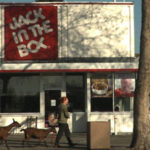
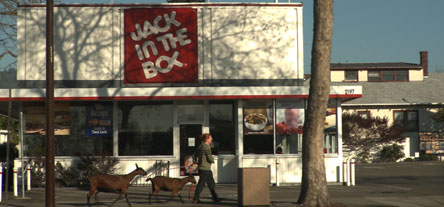
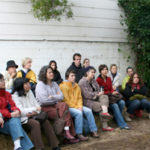
Education Outside (formerly San Francisco Green Schoolyard Alliance)

Education Outside (formerly San Francisco Green Schoolyard Alliance)
2014 - $8,000 Corps for Education Outside Program
2011 - $5,000 Conference Support
2009 - $12,000 Matching Grant for Gardening Educators
2008 - $5,000 Conference Support
2007 - $10,000 General Support
Corps for Education Outside program
Corps for Education Outside program is an innovative new program which is transforming San Francisco’s public schools into centers of hands-on environmental science learning and biodiversity. Corps members transform school gardens into lush, living laboratories, teaching engaging, hands-on lessons that encompass not only science but also sustainability, healthy living, gardening, and cooking. The curriculum used focuses primarily on science as well as English language arts and math.
San Francisco Green Schoolyard Alliance
The San Francisco Green Schoolyard Alliance (SFGSA) is a coalition of Bay Area civic organizations whose work supports schoolyard transformations from ordinary asphalt yards into ecologically rich green spaces for learning and play. SFGSA works to ensure that these emerging vibrant landscapes reflect a school’s local ecology and meet the school’s curricular goals. SFGSA members offer a wide variety of resources that can help school communities create and sustain green schoolyards. They advocate for school yard greening at district, city, and state levels; provide professional development for teachers and parents; secure horticultural supplies and other resources for schools; and maintain a website and hotline for advice and troubleshooting needs.
Education Outside (formerly San Francisco Green Schoolyard Alliance)
2014 - $8,000 Corps for Education Outside Program
2011 - $5,000 Conference Support
2009 - $12,000 Matching Grant for Gardening Educators
2008 - $5,000 Conference Support
2007 - $10,000 General Support
Corps for Education Outside program
Corps for Education Outside program is an innovative new program which is transforming San Francisco’s public schools into centers of hands-on environmental science learning and biodiversity. Corps members transform school gardens into lush, living laboratories, teaching engaging, hands-on lessons that encompass not only science but also sustainability, healthy living, gardening, and cooking. The curriculum used focuses primarily on science as well as English language arts and math.
San Francisco Green Schoolyard Alliance
The San Francisco Green Schoolyard Alliance (SFGSA) is a coalition of Bay Area civic organizations whose work supports schoolyard transformations from ordinary asphalt yards into ecologically rich green spaces for learning and play. SFGSA works to ensure that these emerging vibrant landscapes reflect a school’s local ecology and meet the school’s curricular goals. SFGSA members offer a wide variety of resources that can help school communities create and sustain green schoolyards. They advocate for school yard greening at district, city, and state levels; provide professional development for teachers and parents; secure horticultural supplies and other resources for schools; and maintain a website and hotline for advice and troubleshooting needs.
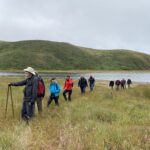
Environmental Action Committee of West Marin
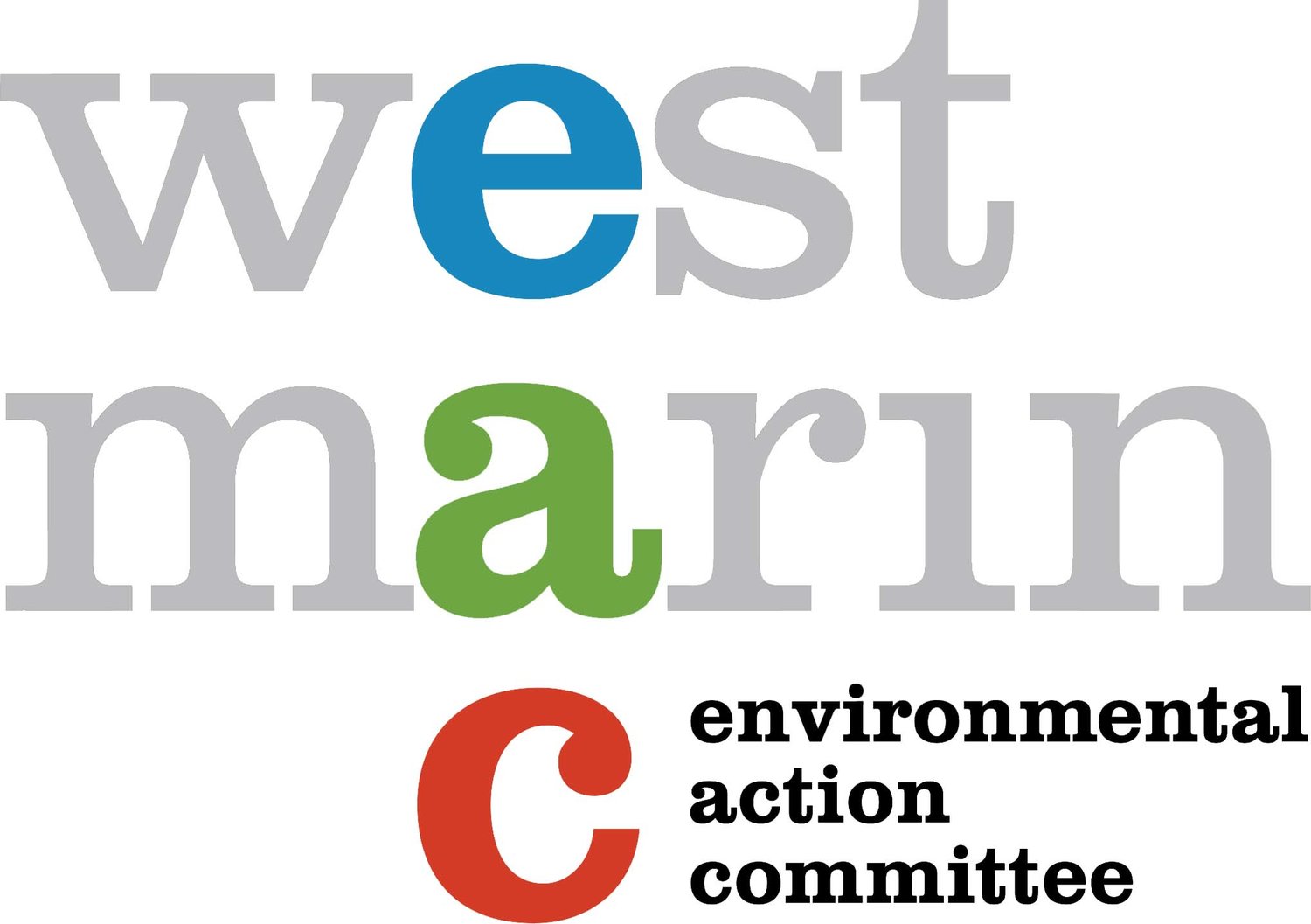
Environmental Action Committee of West Marin
2019 - $10,000 Coastal Resiliency
2018 - $20,000 Regional Strategy
2016 - $9,000 General Support
In response to impending threats of climate change and sea-level rise, several municipalities along the California coast are preparing comprehensive planning documents to provide public guidance on the consequences of rising seas. Strong public standards and guidelines are needed to address how changing environmental conditions, like flooding, runoff, erosion, salinity changes, temperature changes, and ocean acidification will affect habitats in tidal zones, coastal dunes, estuaries, and riparian corridors. In addition, planning documents need to provide comprehensive and realistic solutions for property owners and municipalities that are located within flood plains and include options to utilize new technology and green infrastructure that are balanced in the best available science.
The Environmental Action Committee (EAC) is uniquely positioned to review Marin County’s proposed guidelines in their amended Local Coastal Plan's environmental hazards chapter. The EAC will provide comments and public information to the community based on a comprehensive review of the County’s proposals.
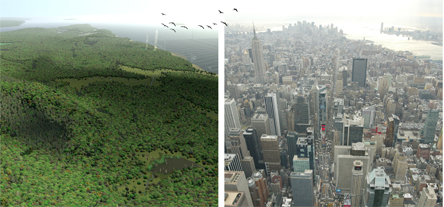
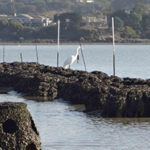
Estuary & Ocean Science Center
Estuary & Ocean Science Center
2016 - $15,000 General Support
2015 - $15,000 General Support
The Estuary & Ocean Science (EOS) Center is located on the Romberg Tiburon Campus of San Francisco State University, with a mission to connect science, society, and the sea. The EOS Center is the only marine lab on San Francisco Bay, and leads scientific study of the Bay with a diverse population of undergraduate and graduate students. The center’s strong focus on advancing the understanding and practice of restoration has increasingly incorporated restoration as a mechanism to address and mitigate climate change impacts.
The EOS Center is creating native oyster habitats to restore large acreages of native Olympia oysters. These structures will also provide shoreline protection in an era of sea level rise. The Seed Fund supported one of the first projects dedicated to oyster rehabilitation in the Bay Area, to conduct early steps in producing innovative designs for lightweight and modular oyster reef systems that can be installed by researchers and volunteers without the need for expensive equipment. These creative oyster reef designs will benefit communities in need of shoreline protection regardless of location or economic status. The EOS Center leveraged support from the Seed Fund into additional funding from the State Coastal Conservancy and Marin Community Foundation (working with the Smithsonian Environmental Research Center and Studio for Urban Projects), and has placed a new reef design at three locations in San Francisco Bay to test their success before scaling them up to larger areas to aid in shoreline protection.
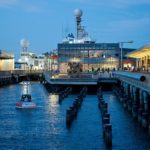

Exploratorium
2022 - $15,000 Urban Fellows Program
2021 - $15,000 Urban Fellows Program
2019 - $10,000 Coastal Resiliency Collaboration
2019 - $10,000 General Support
2018 - $10,000 Urban Fellowship
2017 - $10,000 Urban Fellowship
2017 - $10,000 Habitat: Bay As It Is Symposium
2016 - $5,000 Habitat: Bay As It Is Symposium
2016 - $10,000 Urban Fellowship
2015 - $10,000 Urban Fellowship
2015 - $10,000 Center for Art and Inquiry
2014 - $10,000 Urban Fellowship
2013 - $10,000 Jane Wolf, Bay Lexicon
2013 - $1,000 Living Innovation Zone
2011 - $10,000 Capital Campaign
Since 1969, the Exploratorium’s museum in San Francisco has been home to a renowned collection of 650+ exhibits that draw together science, art, and human perception, and that have changed the way science is taught. Our award-winning programs inspire visitors, empower teachers through our cutting-edge teacher development program, and influence a global movement where 80% of science centers across the globe contain Exploratorium exhibits. The exhibits on the floor are designed to enable experimentation with physical phenomena while simultaneously strengthening thinking and inquiry skills. This is true not only for our audiences of over 850,000 people a year in San Francisco, but for an estimated 250 million people who experience our exhibits at science centers around the world. As founder Frank Oppenheimer saw it: “A lot of people have given up trying to comprehend things, and when they give up with the physical world they give up with the social and political world as well. If we stop trying to understand things, I think we’re all sunk.” The Exploratorium continues to build on his foundational belief that citizens who are curious and empowered to learn about the world are more likely to take action and tackle problems in their communities.
The Exploratorium’s location on Piers 15 and 17, and in particular our investment in the Fisher Bay Observatory, has provided an unprecedented opportunity to engage the public with a wealth of data about the area’s natural and built environments and dynamic access to the researchers collecting it. Since our relocation from the Palace of Fine Arts in 2013, we have been continually evolving exhibits, programs, and partnerships to engage diverse audiences in understanding the complex ecologies that emerge through the interaction between social, cultural, and natural forces and systems. The facility serves as a new model for a combined research and learning space—an open laboratory for researchers, policy makers, and the public. We are educators who have learned that as we face global climate crises, our strategy must be expansive including the contributions of scientists, educators, artists, designers, historians and cultural workers, as well as practitioners in the realms of policy and advocacy.
Due to the Covid-19 pandemic, the Exploratorium closed its doors on March 12, 2020. Our museum has always been a playground of discovery and hands-on learning, but as we remain closed, our educators, exhibit developers, scientists and other staff have gotten creative in sparking curiosity online. From helping teachers make science come alive in virtual classrooms, to engaging families all over the globe in tinkering projects, to illuminating timely science through online events like Covid Conversations and After Dark, the Exploratorium’s online content highlights what the Exploratorium does best: creating learning experiences that are engaging, interactive, inspiring, and trustworthy.
The digital programming and resources reach audiences from young kids to adults, and present a full range of topics from nearly all Exploratorium departments, from biology, to the environment, to Cinema Arts. In all, our digital resources are being used more than ever: traffic to our website, which serves 2M people annually, is up by nearly 300%. The Exploratorium is proud to continue sparking curiosity wherever people are, whether the kitchen table laboratory, the virtual classroom, the outdoors, or—eventually—back at Pier 15
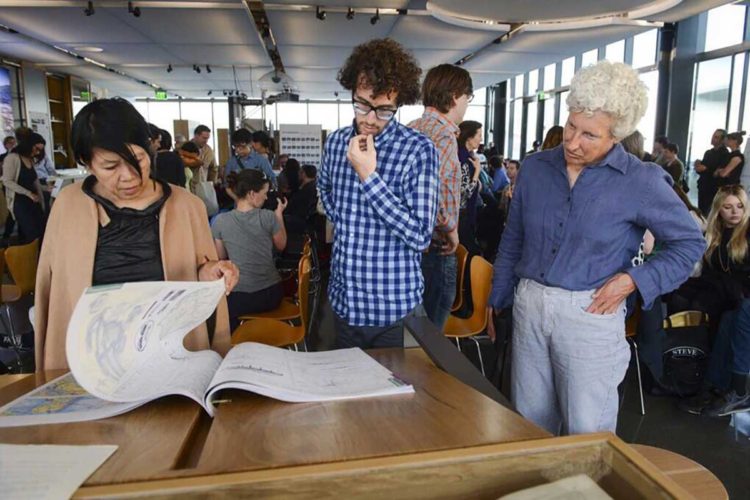
Urban Fellowship
The Exploratorium's new Urban Fellow program will address issues related to climate change and rising sea levels. This program situates an artist or urban practitioner in a residency within the Bay Observatory to explore the human relationship to the urban environment. Fellows could explore concrete forms: such as architecture and infrastructure: as well as human forms: such as approaches to planning or individual practices within the city. This investigation is both important and timely as urban areas globally explore the issue of climate change and coastal resiliency.
Jane Wolf, Bay Lexicon
Bay Lexicon is an illustrated field guide to San Francisco’s shoreline. Using methods and tools from landscape scholarship, design, and science education, Bay Lexicon aims to encourage observation and enquiry about the natural world and its relation to culture.
Living Innovation Zone
The LIZ project is a place making project, which encourages people to engage with their environment and each other in new and surprising ways. The Exploratorium relies on this kind of open-ended inquiry as a means of engaging people and encouraging them to learn about themselves and the world around them.
Capital Campaign
It is the Exploratorium’s goal to be the world’s first net zero energy, carbon neutral museum. Their LEED Platinum certification sets the stage as they continue to work on their sustainability goals. The new location on San Francisco’s waterfront showcases a premiere “green” building, operating with maximum energy efficiency and preservation of the atmosphere.
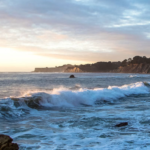
Farallones Marine Sanctuary Association
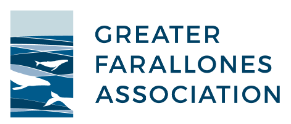
Farallones Marine Sanctuary Association
2016 - $20,000 Climate Smart Conservation Project
2015 - $20,000 Climate Smart Conservation Project
The Farallones Marine Sanctuary Association (FMSA) supports and assists the Greater Farallones National Marine Sanctuary in outreach, education and stewardship. The Farallon Islands are considered the Galapagos of California, making the islands an important resource for scientists to test the effects of climate change.
FMSA, through the Climate Smart Conservation Project, assessed 3,293 square miles from Point Ano Nuevo in the southernmost part of San Mateo County to Point Arena in Mendocino County for vulnerabilities and developed an implementation plan for the Gulf of the Farallones National Marine Sanctuary (GFNMS). The plan included approved adaptation actions, as well as recommended adaptation actions for additional coastal management agencies to effectively deal with plausible future climate scenarios. The GFNMS will also spearhead at least two pilot projects in partnership with the Bolinas Lagoon Restoration Project to create substantive adaptation efforts for coastal land management agencies to emulate.
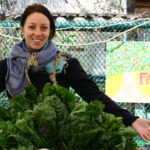
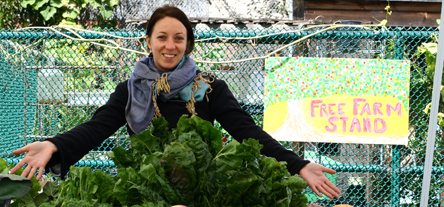

Free Farm Stand
2010 - $3,000 General Support
The Free Farm Stand, an all-volunteer run project facilitates sharing the wealth of urban farms and gardens. This includes helping make locally grown, fresh and nutritious organic produce accessible to all (especially those families and individuals on low-incomes and tight budgets), empowering people who have the space to grow their own food and become more self-reliant and promoting good nutrition and health.Located in the Mission district, the Free Farm Stand gathers surplus food from neighborhood gardens, various farmer’s markets, community gardens, public and private fruit trees and provides the space where this bounty can be shared.The stand also acts as a gathering place to encourage community growth and involvement. In 2010, the Free Farm Stand, along with a small constellation of non-profit organizations in San Francisco, founded The Free Farm. Located on a 1/3-acre parcel loaned by St. Paulus Lutheran Church, The Free Farm has grown and given away over 1,000 pounds of fresh organic produce, convened gardening and urban homesteading workshops, and hosted community, school, and religious groups.
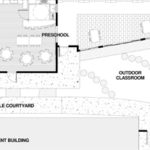
Friends of Potrero Nursery School
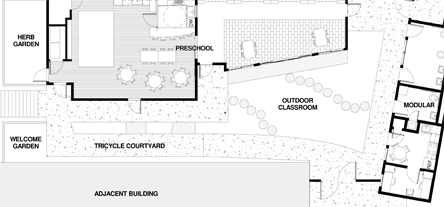
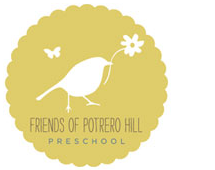
Friends of Potrero Nursery School
2013 - $8,000 Urban Garden
2010 - $5,000 Capital Campaign
The Friends of Potrero Hill Nursery School (FOPHNS) is a much-loved preschool that has served San Francisco families for 12 years. In that time over 200 children have begun school in its caring and delightful atmosphere with an emphasis and a reverance for nature. Creating environmentalists from the start, children are engaged in a seasonal cycle of activities in their small garden and throughout the neighborhood, drawing the children’s attention to the natural world around them.Capital Campaign
The capital campaign raised funds to build a permanent home for FOPHNS and a new Family Center on the grounds of the oldest public schoolhouse in San Francisco. The San Francisco Unified School District has leased to FOPHNS two outbuildings for a token amount, with the understanding that Friends will reuse them to better the community. This opportunity will not only provide long-term security for the school, but will also transform the I.M. Scott site and its two abandoned buildings into vibrant community assets: a Preschool and a Family Center. This project models a new form of green community center - a place where the nurturing of children is understood to be at the heart of creating a healthy society.
Urban Garden
To complement the completed main building, this second phase of the project creates a garden and play space that will surround a small family center. The garden is a fascinating place for young children, full of the drama of birds and bugs and worms as well as the processes of growth and decay. Caring for plants allows children to become closely acquainted with these and other living organisms. This sparks curiosity and empowers children to learn more about their natural surroundings.
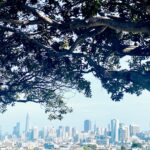
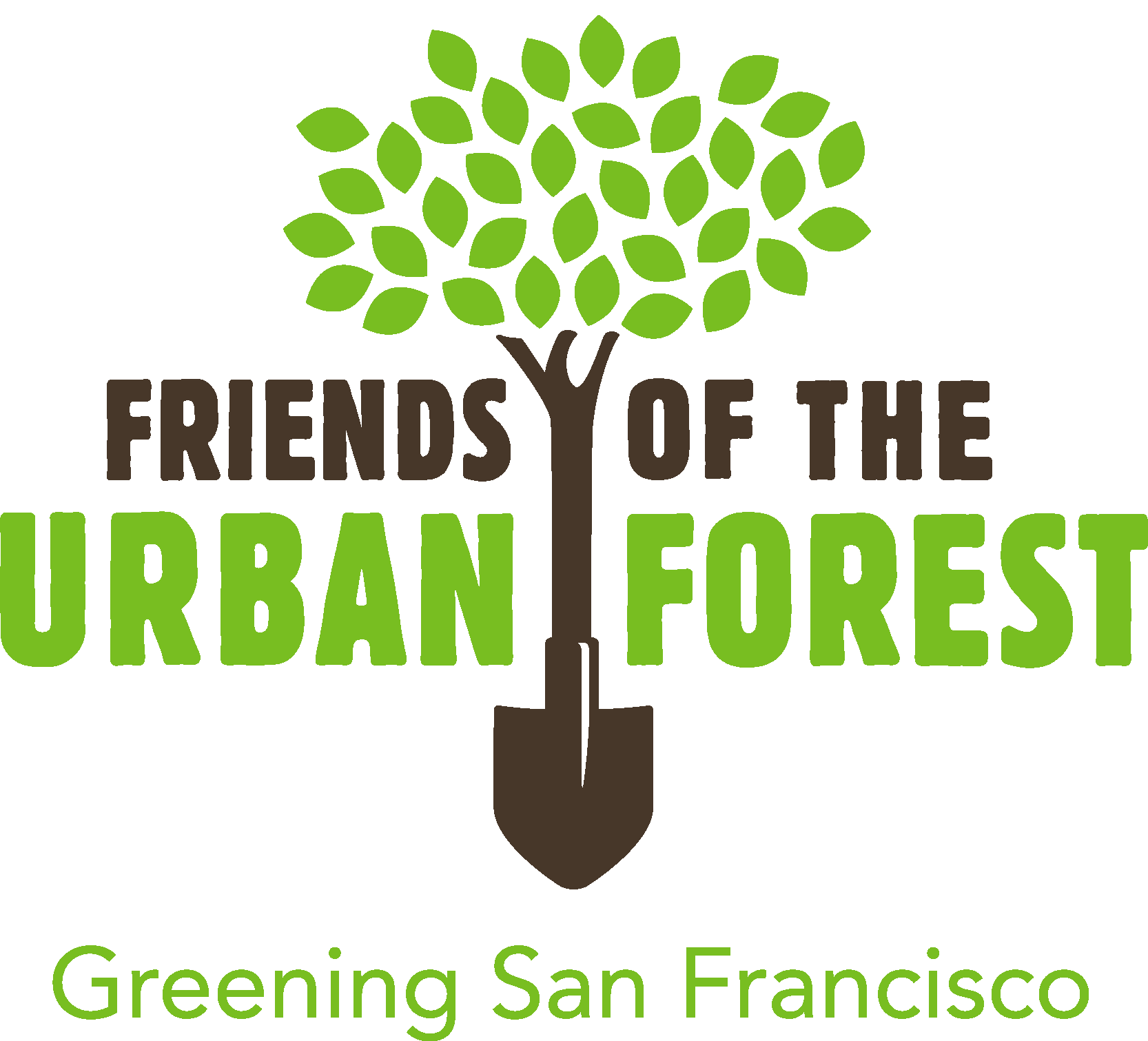
Friends of the Urban Forest
2023 - $5,000 General Support
2019 - $15,000 General Support
2007 - $10,000 General Support
Friends of the Urban Forest (FUF) promotes a larger, healthier urban forest as part of San Francisco’s green infrastructure through community planting, tree care, education, and advocacy. Each year, FUF helps communities plant nearly 1,000 trees. Neighbors organize the plantings, while FUF obtains permits, removes sidewalk concrete, supplies tools and materials and selects, purchases and delivers the trees. On planting day, FUF volunteers work side-by-side with residents. After the work is done, everyone celebrates over a community lunch.In 1995, FUF formally instituted Tree Care to improve tree health and to increase survival rates - certified arborists, assisted by volunteers and trainees, prune and re-stake existing street trees. Tree Care aims to provide essential maintenance services and to educate neighbors, through mailings and hands-on assistance, on how to care for their trees. FUF is committed to increasing its resources for Tree Care, which is essential to maintain and enhance the community’s investment in San Francisco’s urban forest.
 Fritz Haeg
2010 Fellow
Artist Fritz Haeg's work has included edible gardens, public dances, educational environments, animal archtecture, domestic gatherings, urban parades, temporary encampments, documentary videos, publications, exhibitions, websites and buildings. His work includes the urban ecology initiatives of Edible Estates and Animal Estates; the domestic social activities of Sundown Salon and Sundown Schoolhouse; and the designs and scores of Fritz Haeg Studio.
Edible Estates is an ongoing initiative to create a series of regional prototype gardens that replace domestic front lawns and other unused spaces in front of homes with places for families to grow their own food. The eight gardens have been established in cities across the United States and England. Adventurous residents in each town have offered their front lawns as working prototypes for their regions. Each of these highly productive gardens is very different, designed to respond to the unique characteristics of the site, the needs and desires of the owner, the community and its history, and, especially, the local climate and geography.
With the modest gesture of reconsidering the use of our small, individual, private front yards, the Edible Estates project invites us to reconsider our relationships with our neighbors, the sources of our food, and our connections to the natural environment immediately outside our front doors.
fritzhaeg.com
Fritz Haeg
2010 Fellow
Artist Fritz Haeg's work has included edible gardens, public dances, educational environments, animal archtecture, domestic gatherings, urban parades, temporary encampments, documentary videos, publications, exhibitions, websites and buildings. His work includes the urban ecology initiatives of Edible Estates and Animal Estates; the domestic social activities of Sundown Salon and Sundown Schoolhouse; and the designs and scores of Fritz Haeg Studio.
Edible Estates is an ongoing initiative to create a series of regional prototype gardens that replace domestic front lawns and other unused spaces in front of homes with places for families to grow their own food. The eight gardens have been established in cities across the United States and England. Adventurous residents in each town have offered their front lawns as working prototypes for their regions. Each of these highly productive gardens is very different, designed to respond to the unique characteristics of the site, the needs and desires of the owner, the community and its history, and, especially, the local climate and geography.
With the modest gesture of reconsidering the use of our small, individual, private front yards, the Edible Estates project invites us to reconsider our relationships with our neighbors, the sources of our food, and our connections to the natural environment immediately outside our front doors.
fritzhaeg.com
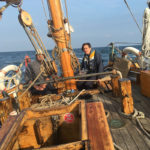
Futurefarmers/Amy Franceschini

Futurefarmers/Amy Franceschini
2020 - $10,000 FogHouse Project
2017 - $15,000 Seed Journey
2010 - $5,000 Free Soil: Farming 2050 Publication
2007 - $10,000 Victory Garden Project
Amy Franceschini is a pollinator who creates formats for exchange and production that question and challenge the social, cultural and environmental systems that surround her. In 1995, Amy founded Futurefarmers, an international collective of artists. In 2004, Amy co-founded Free Soil, an international collective of artists, activists, researchers, and gardeners who work together to propose alternatives to the social, political and environmental organization of space.Victory Gardens
Victory Gardens 2007+ calls for a more active role for cities in shaping agricultural and food policy. It is a concept in development with the city of San Francisco that would provide a subsidized home gardening program for individuals and neighborhoods. This program offers tools, training & materials for urban dwellers to participate in a city-wide transformation of underutilized backyards— turning them into productive growing spaces. The project draws from the historical model of the 1940's American Victory Garden program to provide a basis for developing urban agriculture as a viable form of sustainable food practice in the city.
Farming 2050
The first issue of the annual journal Free Soil, FARMING 2050, documents a one-day experiment where eleven artists, farmers, writers, policy makers, architects and philosophers were invited to imagine farming in 2050. What will it look like and how will we get there? What materialized was a range of apprehensions, evaluations and revelatory combinations of fact and fiction that offer a diverse look on the future of farming. This hyper-local portrait of critical, San Francisco voices reflects a sense of optimism intertwined with serious demands to re-evaluate the current logic that dominates our food system.
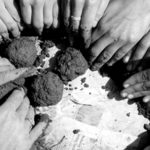

Garden for the Environment
2009 - $10,000 Green House Capital Campaign
2008 - $10,000 General Support
2007 - $10,000 General Support
Garden for the Environment (GFE) maintains a nationally acclaimed one-acre urban demonstration garden and offers environmental education programs about organic gardening, urban compost systems and sustainable food systems. Since its founding in 1990, the garden has operated as a demonstration site for small-scale urban ecological food production, organic gardening and low water-use landscaping.
Today, GFE’s programs include four central educational elements; a three month intensive Gardening and Composting Educator Training program, monthly Compost Education workshops conducted at the garden and community gardens throughout San Francisco, the Resource Efficient Landscape Education series, and the School Education program offered in partnership with San Francisco Unified School District and San Francisco’s Department of the Environment.
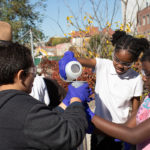

Gowanus Canal Conservancy
2022 - $15,000 Master Plan
2020 - $10,000 General Support
Gowanus Canal Conservancy (GCC) advocates and cares for ecologically sustainable parks and public spaces in the Gowanus Lowlands while empowering a community of stewards. Since 2006, GCC has led volunteer projects focused on garden and street tree stewardship; educated and activated community stewards, volunteers, and students in urban water issues; equipped the community to build and advocate for a healthy waterway and environmentally resilient neighborhood; and worked with agencies, elected officials, and the community to advocate for, build, and maintain innovative green infrastructure in the Gowanus Watershed.
As the Gowanus neighborhood is facing rapid change from the Gowanus Canal Superfund clean-up, City-proposed Gowanus Neighborhood Rezoning, and preparations for sea level rise, GCC has established itself as the guiding community voice for innovative green infrastructure design in Gowanus’ public realm to create a more sustainable and livable neighborhood.
The Gowanus Lowlands Master Plan is a community-based vision for a public realm formed from a network of parks, publicly-accessible waterfront esplanades, and tree-lined corridors centered on the Gowanus Canal. The Gowanus Lowlands builds upon multiple planning and clean-up processes to provide the community with accessible green space, cultural resources, and recreational amenities while serving multiple functions through increased flood resilience, mitigation of the impacts of the urban heat island effect, creation of habitat, stormwater management, and reduction in pressure on the sewer system.
GCC empowers local stakeholders in stewardship of their local landscapes through ongoing, in-person stewardship events and opportunities. Through the Gowanus Tree Network, GCC recruits, trains, and supports local residents and business owners in the Gowanus Lowlands as they provide long term tree stewardship on their blocks. GCC distributes tools, compost, and plants and provides support for volunteers and residential gardeners living in nearby NYCHA public housing. Additional volunteers are engaged in GCC’s Volunteer Program in propagating and planting native plants, and in removing weeds and litter from street trees and bioswales throughout the neighborhood. These stewardship efforts help to reduce combined sewer overflow (CSO) and urban heat island impacts, while supporting livable and beautiful spaces for community members to enjoy. Temporary COVID adaptations have been developed to ensure the safety of all environmental stewards.
The Lowlands Nursery grows healthy native, urban-adapted plants, with a focus on local ecotypes in order to facilitate the planting of native plants in the Gowanus Lowlands. These native plants are distributed throughout Gowanus, and can be found at the Salt Lot, in nearby tree pits and neighborhood gardens, and in the yards of community members, organizations, and schools. Volunteers help plant these native plants during in-person volunteer events. Plants can also be purchased at the Salt Lot during plant sale events or by appointment. Temporary modifications have been made, allowing customers to purchase plants, soil, and compost online, which they can then pick up at a predetermined time.
Gowanus Green Team employs youth, primarily recruited from local NYCHA public housing, in order to better understand local environmental issues and build skills and knowledge for environmental careers. Apprentices participate in classroom lessons, field work and training, and trips to parks and restoration areas in Gowanus and around NYC. Apprentices develop physical skills, including gardening, infrastructure maintenance, and plant identification; teamwork and communication skills; and knowledge about urban environmental issues facing our city. Last season, GCC’s apprenticeship program took place with stringent physical distancing and safety measures in place. Eight youth living in neighborhood NYCHA housing logged 884 hours over three months and developed stewardship skills and provided horticultural maintenance in the Lowlands Nursery, rain gardens, and street trees. The program included weekly virtual sessions focused on neighborhood ecology, green infrastructure, horticultural techniques, and job skills.
The Urban Ecology, Gowanus Blue Schools, and Community Science education programs provide supplementary educational content tailored to an audience of students, teachers, and families in the surrounding watershed and EJ areas. These programs educate, engage, and inspire those who are most directly impacted by the environmental issues in Gowanus. They are equipped with the tools they need to make positive change. The Urban Ecology Program engages K-5 students in the importance of environmental stewardship, green infrastructure as a solution to pollution, and native plant horticulture, as they propagate numerous native plant species on site. The Gowanus Blue Schools Program teaches students in grades 5-12 to imagine and develop green infrastructure design proposals to help reduce CSO impacts on their school campuses. The Community Science Program equips students in grades 5-12 with an understanding of water quality health and data collection, allowing students to assess a variety of water quality parameters through on-site testing. Each program has been temporarily modified into a remote learning model, featuring virtual field trips, to accommodate as many students as possible during this challenging time.
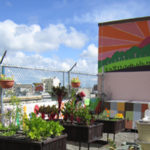
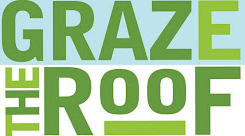
Graze The Roof
2009 – $5,000 General Support
Graze the Roof (GTR) is an edible, community-produced vegetable garden on the rooftop of Glide Memorial Church, a progressive church and nonprofit located in the Tenderloin district of San Francisco. GTR features soil-less gardening vegetable growers; self-watering containers; lightweight garden beds made from milk crates; a worm composting system and an educational mural, which ties the whole project together. Glide youth and volunteers from throughout the Bay Area maintain the garden and host monthly tours and workshops.
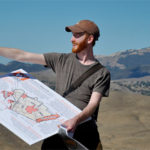

Greenbelt Alliance
2022 - $20,000 Resilience Hotspots
2007 - $10,000 General Support
About Greenbelt Alliance
The Bay Area has a major problem: we aren’t ready for climate change. Greenbelt Alliance is rising to the challenge by educating people, advocating for bold change and collaborating across sectors to address the climate crisis. Over Greenbelt Alliance’s 65-year history, the organization has stewarded this region’s beautiful natural landscapes while promoting the growth needed for communities to thrive for generations to come. As a result of this work, almost 3.3 million acres of the Bay Area’s nine counties are protected open spaces.
Today, Greenbelt Alliance leverages its expertise in land-use policy advocacy and regional collaboration to realize a climate-resilient Bay Area. This looks like communities and people thriving in the places they live, work, and play. Staying safe during climate disasters. Connecting with open spaces in new and powerful ways. Suffering less and recovering quickly after the next wildfire, flood, or drought. All thanks to equitable solutions drawing on the powerful role of nature. The path toward this future is complex and more urgent than ever, which is why Greenbelt Alliance focuses on data-driven and innovative policy solutions while fostering much-needed regional collaboration to plan and invest in resilient communities.
Over the last seven years alone, Greenbelt Alliance has protected over 70,000 acres of open space lands from development. These lands provide critical resources for worsening climate impacts by serving as natural buffers during wildfires, providing groundwater during drought, and offering refuge during uncertain times. Greenbelt Alliance has also spurred the approval of over 19,000 new homes during the same seven-year span through the Climate SMART—Sustainable, Mixed, Affordable, Resilient, Transit-Oriented—Development Program. This SMART development creates communities in balance with nature, reducing greenhouse gas emissions, and increasing resilience to climate-related risks.
Bay Area Resilience Hotspots Project
Across the Bay Area, there is a need for prioritizing nature-based climate resilience projects to protect communities that are most vulnerable to climate change—in ways that have multiple benefits to habitat, open space, biodiversity, recreation, and more. Through the Bay Area Resilience Hotspots project, Greenbelt Alliance is bringing together climate, sprawl development, and social vulnerability data and convening local stakeholders to collaboratively identify pathways to increase investment in on-the-ground resilience initiatives. Through a community-driven process, Greenbelt Alliance is advancing planning and policy solutions co-created with resident voices and bringing people together with local government to ensure underrepresented members of the community have the opportunity to shape the future of their city or county. The Bay Area Resilience Hotspots initiative leverages collaboration and data to enable cities and communities to build consensus on resilience priorities that not only prioritize conservation, but also social and economic factors that are key to crafting powerful climate solutions. Ultimately, this work will increase land protection and stewardship in ways that enhance biodiversity and build equitable resilience to climate change across the Bay Area.
Methodology and Outcomes
Through a robust spatial analysis process, Greenbelt Alliance has compiled regional data to identify opportunities for nature-based solutions that will allow us to respond to wildfire, flooding, and extreme heat events. This work was informed by creating methodologies that incorporate not only physical features of a place like climate and sprawl risk, but also socioeconomic factors that can make some populations more vulnerable to climate hazards. This process was guided by a diverse group of technical advisors who reviewed methodology and data and provided feedback on best practices.
Using this mapping and data, Greenbelt Alliance is partnering with local leaders to understand the context on-the-ground and co-create priority actions. Climate adaptation and resilience must be locally appropriate and supported by community leaders. Central to the Bay Area Resilience Hotspots project is the development of strong local partners and stakeholders to drive this vital work forward—providing geographically-specific knowledge and expertise that is critical to adequately interpreting and contextualizing data and collaborating on multi-benefit solutions. Greenbelt Alliance is partnering with locally rooted organizations, community leaders, and key stakeholders to center past and ongoing resilience efforts, document priorities for adaptation, create shared narratives around data, and develop pathways towards resilience that meet joint goals and priorities. For each hotspot location, a Community Resilience Profile will present these shared objectives for a broader audience.
Community Resilience Profiles are easy-to-understand narratives that will be used to build support and focus resources on priority hotspots locations. Greenbelt Alliance is sharing the stories of these priority hotspots through a dedicated webpage and interactive map for anyone to use. Ultimately, the goal of this work is to advance on-the-ground resilience investments throughout the Bay Area. These resources can be used for advocates to promote climate resilient policies, enable local coalitions to develop project concepts and apply for funding, and build overall support for resilience action.
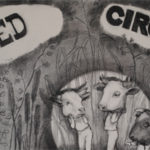
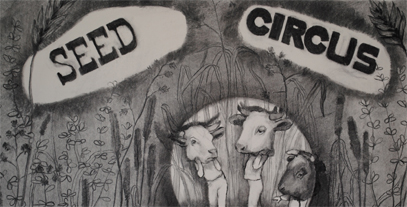 Greenhorns
2012 - $5,000 Seed Circus
The Greenhorns is a grassroots non-profit organization made up of young farmers and many collaborators. Their mission is to recruit, promote and support the new generation of young farmers. Using radio, blogs, film, and live events, the Greenhorns build agrarian culture by connecting young farmers with information, land, and each other.
America wants more young farmers and more young farmers want a piece of America. We know it will take millions of these rough and ready protagonists of place to care for our ecosystems and serve our country healthy food in the years to come. The Greenhorns enable this critical meeting between minds, bodies, and land by helping young and aspiring farmers to navigate career paths, build skills, and connect with each other. Our multifaceted approach includes on-the-ground organizing of events and workshops, media production, and online coalition building.
The Seed Circus is a series of cultural events engages attendees in tactile, sensual, and cacophonous experiences containing elements of country fair, circus, adult education, and child-centered sport as entry points into advocating for an alive and vital farm economy. Its purpose is to build capacity on farms for functionality and agrarian celebration. More widely it is meant to trigger greater understanding of the young farmers movement. It functions as a series of multi-stage performances, interactive work stations, public acts of improvisation, lectures, films, and interpretive agricultural exhibits. Seed Circus' have taken place in New York and Oakland, CA. Plans are in the works for a Seed Circus in Washington DC in September 2013.
thegreenhorns.net
Greenhorns
2012 - $5,000 Seed Circus
The Greenhorns is a grassroots non-profit organization made up of young farmers and many collaborators. Their mission is to recruit, promote and support the new generation of young farmers. Using radio, blogs, film, and live events, the Greenhorns build agrarian culture by connecting young farmers with information, land, and each other.
America wants more young farmers and more young farmers want a piece of America. We know it will take millions of these rough and ready protagonists of place to care for our ecosystems and serve our country healthy food in the years to come. The Greenhorns enable this critical meeting between minds, bodies, and land by helping young and aspiring farmers to navigate career paths, build skills, and connect with each other. Our multifaceted approach includes on-the-ground organizing of events and workshops, media production, and online coalition building.
The Seed Circus is a series of cultural events engages attendees in tactile, sensual, and cacophonous experiences containing elements of country fair, circus, adult education, and child-centered sport as entry points into advocating for an alive and vital farm economy. Its purpose is to build capacity on farms for functionality and agrarian celebration. More widely it is meant to trigger greater understanding of the young farmers movement. It functions as a series of multi-stage performances, interactive work stations, public acts of improvisation, lectures, films, and interpretive agricultural exhibits. Seed Circus' have taken place in New York and Oakland, CA. Plans are in the works for a Seed Circus in Washington DC in September 2013.
thegreenhorns.net
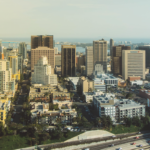
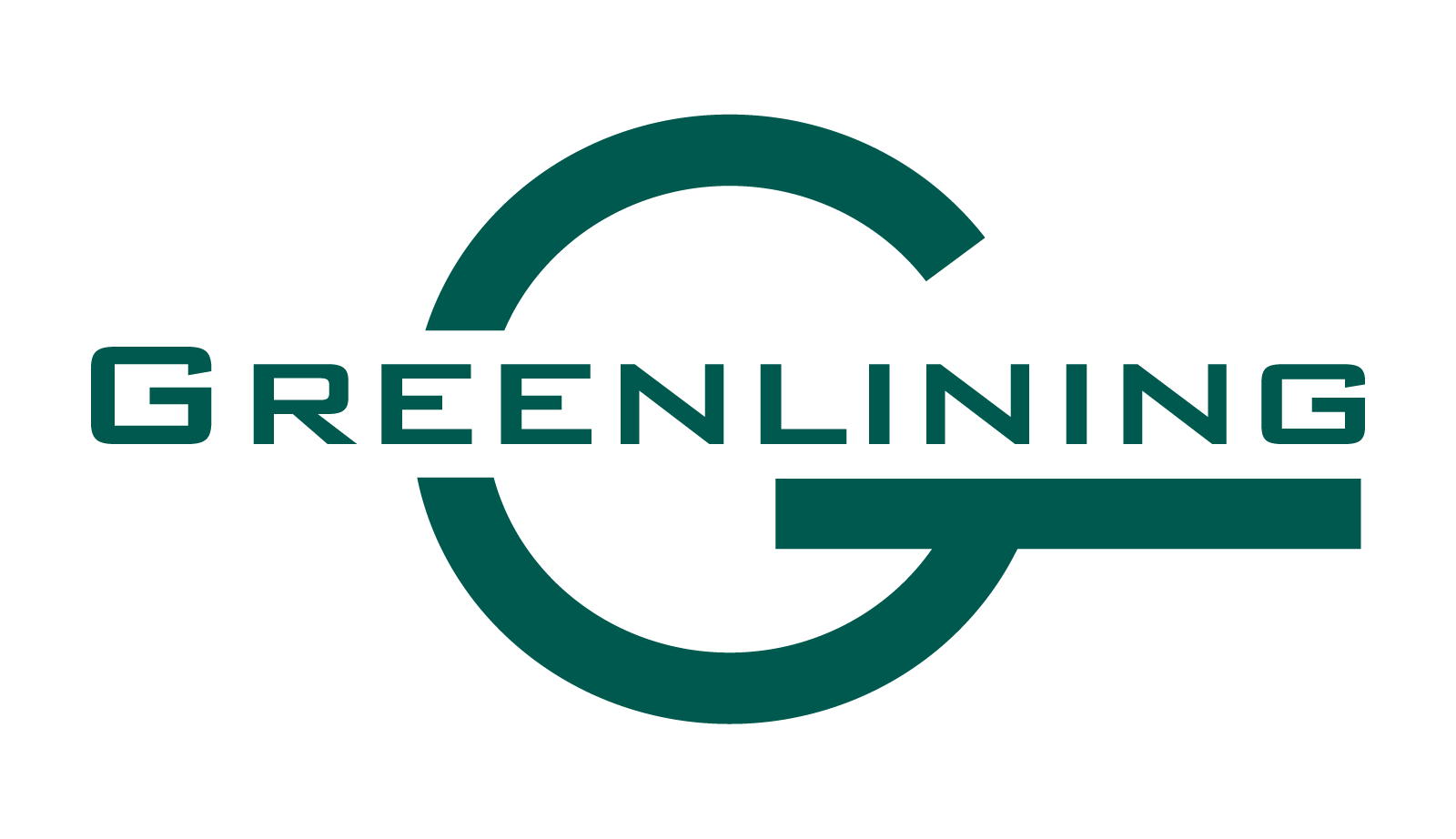
Greenlining Institute
2020 - $20,000 Environmental Equity Program
The Greenlining Institute works toward a future when communities of color can build wealth, live in healthy places filled with economic opportunity, and are ready to meet the challenges posed by climate change. To achieve this vision, Greenlining is committed to building a just economy that is inclusive, cooperative, sustainable, participatory, fair, and healthy. Greenlining holds firm to the belief that diverse communities are a source of unrealized assets and strength, and that this diversity leads to greater effectiveness. Acting from this principle, Greenlining ensures that community voices are participating in major policy debates by building diverse coalitions of cross-sector leaders that work together to advance solutions to our nation's most pressing problems.
Over the next three years (2021-23) Greenlining will work to increase the well-being of communities and households of color through the following strategies:
Greenlining was founded in the mid-1970s by a group of grassroots leaders from the African American, Asian American, Latino, and disabled communities who came together around a new and visionary set of ideas: Instead of simply fighting institutionalized discrimination and redlining, Greenlining should work to proactively bring investments and opportunity into our communities. Instead of redlining, it would work to greenline -- bringing new investments and opportunities into low-income communities and communities of color.
Since The Greenlining Institute’s nonprofit incorporation in 1993, it has successfully negotiated with corporations and passed policies to direct over $600 billion in investments into communities of color. It has also pioneered cross-sector solutions and advanced a racial equity lens in leading industries that have traditionally been overlooked by civil rights leaders. Greenlining has worked closely with the California Legislature and local jurisdictions to make equity real through the passage and implementation of policies and practices that maximize benefits to disadvantaged communities as a foundation for systemic change. As an example, its team advanced California climate policies that led to $1 billion in investments directed to communities most impacted by pollution, climate change and lack of economic opportunity. Families now have solar power, affordable housing, and economic opportunities because of our advocacy.
The Greenlining Institute's climate equity initiative works to fight poverty and pollution, ensuring that communities hit first and worst by climate change receive environmental and clean energy investments that will reduce pollution, create good jobs for local residents, improve the resiliency of disadvantaged communities, and strengthen local economies without displacing communities of color.
A major component of this effort is to create robust, effective, enduring statewide transportation electrification policies and projects that lead to accelerated and timely large-scale emissions reductions while simultaneously maximizing long-term public health and economic benefits for priority communities of color. Greenlining aims to eliminate the structural inequities in California's transportation system by addressing the mobility needs of low-income communities of color through increased access to high-quality clean mobility options that reduce air pollution and enhance economic opportunity. To that end, Greenlining focuses on advancing the following key objectives:
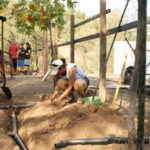
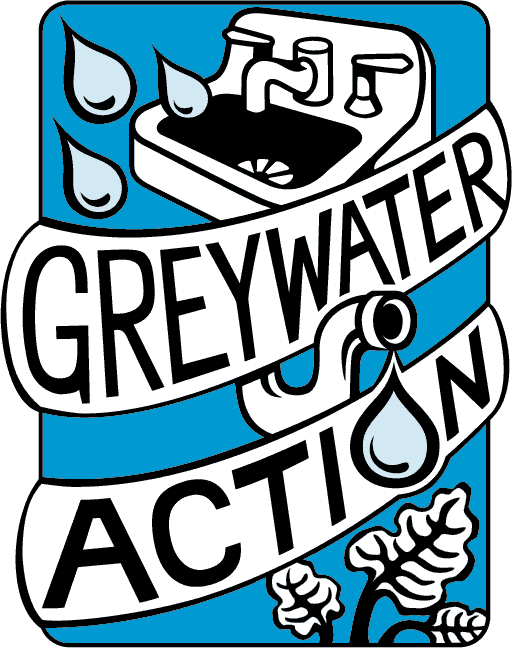
Greywater Action
2010 - $2,000 General Support
Greywater Action is a collaborative group of educators, designers, builders and artists who educate and empower people to build sustainable water culture and infrastructure. Their teaching tools include interactive models of composting toilets and greywater systems and design/installation workshops. Through hands on workshops and presentations, Greywater Action has educated hundreds of people about the process of greywater system design and construction, and built greywater systems at dozens of houses in cities in California and beyond.
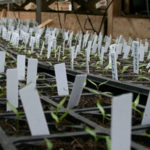
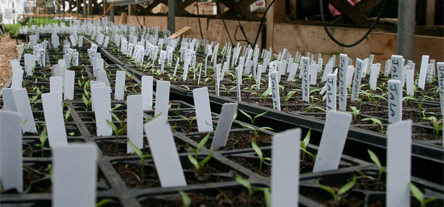 Growing Power
2010 - $2,000 Educational Outreach
Growing Power is a national nonprofit organization and land trust based in Milwaukee, Wisconsin. They support people from diverse backgrounds, and the environments in which they live, by helping to provide equal access to healthy, high-quality, safe and affordable food. Growing Power implements this mission by providing hands-on training, demonstrations, outreach and technical assistance through the development of Community Food Systems that help people grow, process, market and distribute food in a sustainable manner.Since its inception, Growing Power has served as a ”living museum” or “idea factory” for the young, the elderly, farmers, producers, and other professionals ranging from USDA personnel to urban planners. Training areas include the following: acid-digestion, anaerobic digestion for food waste, bio-phyto remediation and soil health, aquaculture closed-loop systems, vermiculture, small and large scale composting, urban agriculture, permaculture, food distribution, marketing, value-added product development, youth education, community engagement, participatory leadership development, and project planning.
growingpower.org
Growing Power
2010 - $2,000 Educational Outreach
Growing Power is a national nonprofit organization and land trust based in Milwaukee, Wisconsin. They support people from diverse backgrounds, and the environments in which they live, by helping to provide equal access to healthy, high-quality, safe and affordable food. Growing Power implements this mission by providing hands-on training, demonstrations, outreach and technical assistance through the development of Community Food Systems that help people grow, process, market and distribute food in a sustainable manner.Since its inception, Growing Power has served as a ”living museum” or “idea factory” for the young, the elderly, farmers, producers, and other professionals ranging from USDA personnel to urban planners. Training areas include the following: acid-digestion, anaerobic digestion for food waste, bio-phyto remediation and soil health, aquaculture closed-loop systems, vermiculture, small and large scale composting, urban agriculture, permaculture, food distribution, marketing, value-added product development, youth education, community engagement, participatory leadership development, and project planning.
growingpower.org
Holding Ground Project 2017 - $8,000 Film Project Raising Awareness of Conserved Land to Adapt to Climate Change holdinggroundproject.org
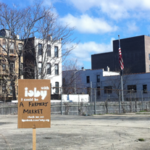

ioby
2014 - $10,000 Crowdfunding Workshop
ioby is a community of donors, volunteers and leaders working together to make their neighborhoods stronger and more sustainable. ioby is a crowd-resourcing digital platform that supports citizen-led, neighbor-funded projects related to food, transit, sharing, public health, public art, environment, schools, tactical urbanism and creative placemaking. For this project, ioby will host an intensive training on grassroots fundraising and crowdfunding for Seed Fund grantees in San Francisco.
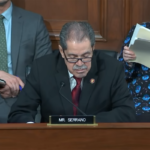

Island Press
2023 - $10,000 Founders’ Pot
2022 - $10,000 Founders’ Pot
2021 - $15,000 Diversity, Equity and Inclusion Work
2021 - $10,000 Founders’ Pot
2020 - $15,000 Online Programming During COVID-19 Pandemic
2020 - $25,000 Founders’ Pot
2019 - $25,000 General Support
2018 - $5,000 Founders’ Pot for General Operating Support
2017 - $5,000 Founders’ Pot for General Operating Support
2017 - $5,000 General Support
2016 - $5,000 General Support
2015 - $5,000 General Support
2014 - $5,000 General Support
2013 - $10,000 Sustainability Knowledge Network
2011 - $5,000 General Support
Island Press supports the environmental community in advancing their knowledge and practice which, ultimately, improves the natural systems on which humankind depends. A non-profit organization, its mission is to provide the best ideas and information to those seeking to understand and protect the environment and create solutions to its complex problems.
From its growing network, Island Press identifies promising thinkers, inspiring stories, and game-changing ideas to publish some 30 books each year. Island Press’ publishing expertise delivers critical information that enhances the work of thousands of professionals striving to create healthier, more sustainable, and more just communities. Today, Island Press is one of the nation's leading providers of environmental ideas and solutions.
Island Press’ goal is to spark lasting solutions to environmental problems. Its approach is two-fold:
Island Press identifies and shapes the best ideas, methods, and approaches into accessible content. The most valuable lessons come from those who are doing the work—the scientists, activists, and professionals who are leading change every day. But these problem-solvers often need guidance on how to share their experience with others. Without the editorial and communications support Island Press provides, important new voices would be left unheard, and effective approaches unknown.
The field needs cutting-edge information and practical solutions to a wide range of problems. Island Press taps into a distribution network of environmental movement leaders, researchers, policymakers, professionals, and the public. The organization’s reach extends into many areas, ranging from transportation planning and food systems to affordable housing and green space.
Setting this work apart from for-profit publishers, Island Press is committed to providing reliable, science-based knowledge in digital formats—webinars, articles, opinion pieces, and online courses—most of them free.
Island Press has developed a body of environmental literature that is considered by many to be the most comprehensive, rigorous, and innovative available. This work is shaping policies, establishing thought leaders, and advancing influential concepts that have had important real-world impacts.
Creating Safer Streets for All: Publishing the Urban Street Design Guide guided billions of dollars in infrastructure spending for energy-saving, carbon-reducing public transit and pedestrian-friendly streets across the country.
Reducing Toxic Chemicals: The award-winning Whitewash: The Story of a Weed Killer, Cancer, and the Corruption of Science led to limits on the cancer-causing chemical glyphosate (the main ingredient in Roundup) in several countries, as well as on college campuses and public lands across the U.S.
Regulating Overfishing: The Most Important Fish in the Sea led to the first-ever limits on menhaden fishing, which had reached unsustainable levels. The quota resulted in a 26% reduction in the menhaden catch—a huge victory for fishing communities and conservationists.
As workplaces closed and events were canceled, Island Press moved quickly to create more online offerings for professionals and students who were now working from home. Island Press released a dozen e-books for free and nearly tripled its schedule of free webinars for professionals. As a result, attendance to online trainings more than doubled. This evolving approach helped the organization grow the number of people it serves, and has widened its geographic reach.
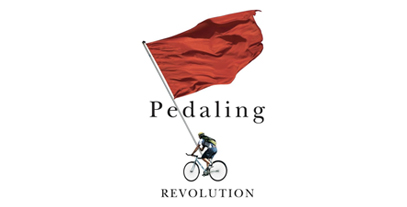 Jeff Mapes
2011 Fellow
Jeff Mapes is the author of Pedaling Revolution: How Cyclists are Changing American Cities (Oregon State University Press, 2009) which describes the growing urban bike culture that is changing the look and feel of U.S. cities.
Mapes, a seasoned political journalist and long-time bike commuter, explores the growth of bicycle advocacy while covering such issues as the environmental, safety, and health aspects of bicycling for short urban trips. Chapters set in Chicago and Portland show how bicycling has became a political act, with seemingly dozens of subcultures, and how cyclists - with the encouragement of local officials - are seizing streets back from motorists. Bike activists are creating the future of how we travel and live in twenty-first-century cities.
Jeff Mapes
2011 Fellow
Jeff Mapes is the author of Pedaling Revolution: How Cyclists are Changing American Cities (Oregon State University Press, 2009) which describes the growing urban bike culture that is changing the look and feel of U.S. cities.
Mapes, a seasoned political journalist and long-time bike commuter, explores the growth of bicycle advocacy while covering such issues as the environmental, safety, and health aspects of bicycling for short urban trips. Chapters set in Chicago and Portland show how bicycling has became a political act, with seemingly dozens of subcultures, and how cyclists - with the encouragement of local officials - are seizing streets back from motorists. Bike activists are creating the future of how we travel and live in twenty-first-century cities.
 Jennifer Wolch
2012 Fellow
The challenges of building healthier and more sustainable cities motivate the research of Jennifer Wolch, UC Berkeley College of Environmental Design (CED). Before coming to UC Berkeley to serve as CED’s first woman dean, Wolch directed the Center for Sustainable Cities at the University of Southern California, where she conducted research on urban sprawl, metropolitan planning, and access to parks and open space. Her work done in collaboration with colleagues, students, and community-based organizations, included investigations into urban homelessness; formulating alternatives to sprawl; analyses of park and recreational resource access and environmental justice; development of web-based geospatial planning tools for watershed health, habitat conservation, and park space projects; assessments of urban alleys as potential green infrastructure; and studies of how urban design influences physical activity and public health.
In the Bay Area, Wolch continues to work on issues of how to utilize remnant urban land as green infrastructure and how park-adjacent traffic crashes and air pollution deepen environmental justice issues associated with parks and open space. She has also initiated investigations into issues of park access and urban ecology in Chinese cities.
ced.berkeley.edu/ced/people
Jennifer Wolch
2012 Fellow
The challenges of building healthier and more sustainable cities motivate the research of Jennifer Wolch, UC Berkeley College of Environmental Design (CED). Before coming to UC Berkeley to serve as CED’s first woman dean, Wolch directed the Center for Sustainable Cities at the University of Southern California, where she conducted research on urban sprawl, metropolitan planning, and access to parks and open space. Her work done in collaboration with colleagues, students, and community-based organizations, included investigations into urban homelessness; formulating alternatives to sprawl; analyses of park and recreational resource access and environmental justice; development of web-based geospatial planning tools for watershed health, habitat conservation, and park space projects; assessments of urban alleys as potential green infrastructure; and studies of how urban design influences physical activity and public health.
In the Bay Area, Wolch continues to work on issues of how to utilize remnant urban land as green infrastructure and how park-adjacent traffic crashes and air pollution deepen environmental justice issues associated with parks and open space. She has also initiated investigations into issues of park access and urban ecology in Chinese cities.
ced.berkeley.edu/ced/people

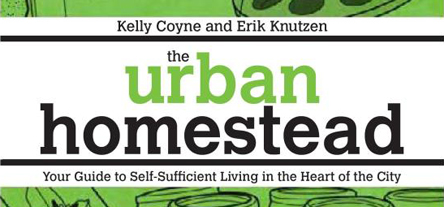 Kelly Coyne and Erik Knutzen
2009 Fellows
Kelly Coyne and Erik Knutzen are the authors of The Urban Homestead: Your Guide to Self-Sufficient Living in the Heart of the City and Making It: Radical Home Ec for a Post-Consumer World. They founded the blog rootsimple.com in 2006.
They live in the heart of Los Angeles, in a bungalow set on a 1/2 acre lot where almost all of their land is devoted to growing edible or otherwise useful plants and trees. Their obsessions include bees, bikes, beer, chickens, dogs, healthy cities, healing herbs, simple living and good food.
rootsimple.com
Kelly Coyne and Erik Knutzen
2009 Fellows
Kelly Coyne and Erik Knutzen are the authors of The Urban Homestead: Your Guide to Self-Sufficient Living in the Heart of the City and Making It: Radical Home Ec for a Post-Consumer World. They founded the blog rootsimple.com in 2006.
They live in the heart of Los Angeles, in a bungalow set on a 1/2 acre lot where almost all of their land is devoted to growing edible or otherwise useful plants and trees. Their obsessions include bees, bikes, beer, chickens, dogs, healthy cities, healing herbs, simple living and good food.
rootsimple.com
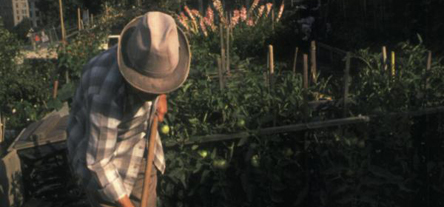 Laura Lawson
2009 Fellow
Laura Lawson is an acclaimed author, landscape architect and avid gardener. Currently she is the Chair for the Landscape Architecture Department at Rutgers University. She has been documenting and writing about community gardens for over fifteen years and has produced several articles and two books - City Bountiful: A History of Community Gardening in America (University of California Press, 2005) and Greening Cities, Growing Communities: Learning from Seattle’s Urban Community Gardens (co-authored with Jeff Hou and Julie Johnson, University of Washington Press, 2009).Lawson continues her documentation of urban gardens, focusing on the cities of Chicago, Detroit, New York, and San Francisco. Her intense background research on the historic evolution of each city developed into a comparative framework to identify key themes/issues to compare across the different cities.
Laura Lawson
2009 Fellow
Laura Lawson is an acclaimed author, landscape architect and avid gardener. Currently she is the Chair for the Landscape Architecture Department at Rutgers University. She has been documenting and writing about community gardens for over fifteen years and has produced several articles and two books - City Bountiful: A History of Community Gardening in America (University of California Press, 2005) and Greening Cities, Growing Communities: Learning from Seattle’s Urban Community Gardens (co-authored with Jeff Hou and Julie Johnson, University of Washington Press, 2009).Lawson continues her documentation of urban gardens, focusing on the cities of Chicago, Detroit, New York, and San Francisco. Her intense background research on the historic evolution of each city developed into a comparative framework to identify key themes/issues to compare across the different cities.
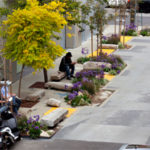

Linden Living Alley
2010 - $10,000 General Support
Linden Living Alley is a neighborhood initiative that transformed a section of Linden Street in Hayes Valley into San Francisco’s first modern ‘shared space’ street. Shared spaces soften the segregation of roadway and sidewalk to create safe, low-speed environments where walking, cycling, and automobile access coexist with greenery and space for socializing and play.
The project tabled the street to the level of the sidewalk, added trees and planted areas, along with seating and traffic calming.Linden Living Alley’s team, which included architect David Winslow, Loring Sagan and his colleagues from Build, Inc, and Meredith Thomas and her colleagues from the San Francisco Parks Alliance, spent many years working with City staff and disability advocates to develop the design to preserve accessibility while staying true to the shared space vision. Linden Living Alley opened October 2010. It serves as a model for shared spaces in San Francisco and opens the door for future alleyway beautification and greening.
photo credit: Lucy Goodhart
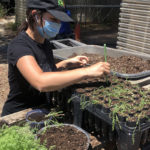
Literacy for Environmental Justice
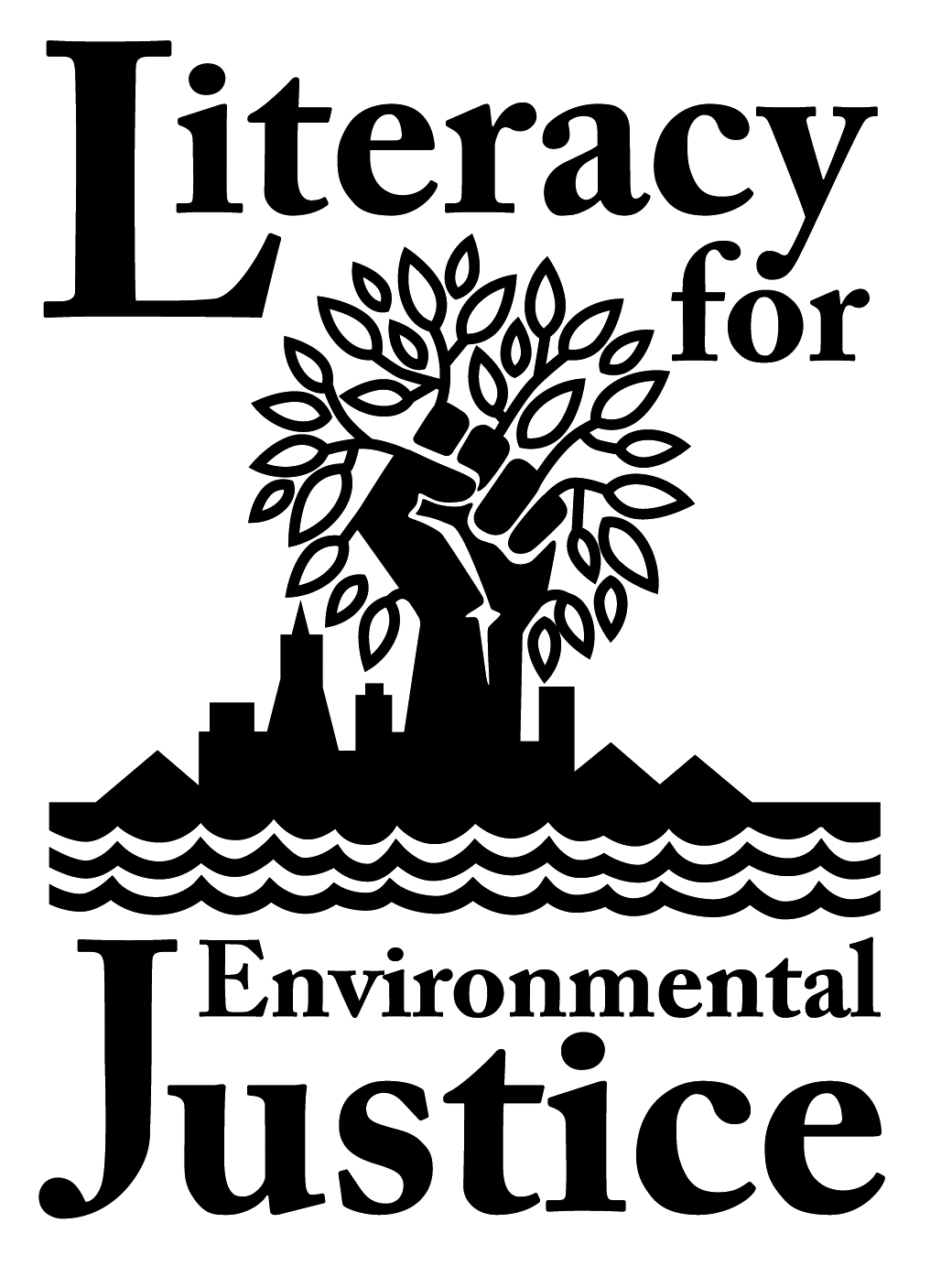
Literacy for Environmental Justice
2021 - $15,000 General Support
2019 - $10,000 Interpretative Signage
2019 - $10,000 General Support
2018 - $10,000 Nursery expansion
2017 - $10,000 Justice Installations and Educational Outreach Materials at Candlestick Point Recreation Area
2017 - $10,000 Nursery Expansion and Capacity Building
2016 - $10,000 Candlestick Point State Recreation Area Rehabilitation
2015 - $10,000 Candlestick Point State Recreation Area Rehabilitation
Literacy for Environmental Justice (LEJ) is a non-profit youth development organization in Bayview Hunters Point that works to address environmental justice issues in San Francisco with two native plant nurseries, ecological restoration projects, youth outdoor education, and green job training.
Their neighborhood's mix of industrial and residential zoning and geographic location result in poor air quality & high particulate matter concentrations, exposure to radiation and hazardous waste, difficulty accessing open space, and flooding issues amplified by climate change and sea level rise.
LEJ’s priority is to empower young environmental leaders and to care for open spaces. They do this by 1) providing free environmental education programs for low-income youth that focus on hands-on environmental stewardship and recreation, such as kayaking, hiking and camping; 2) operating two native plant nurseries that grow thousands of native plants per year used for habitat restoration; and 3) running a multi-track, year-round internship program designed to get young, diverse leaders into ‘green’ careers. The 2018 San Francisco Biodiversity Initiative named LEJ a leader in diversity, equity, and inclusion in the environmental field.
Since the onset of COVID, LEJ has still held to its mission of serving local, San Francisco youth. The Eco-Apprentice program was deemed an essential service by the City, for work in ecosystem restoration. Our eight (8) Eco-Apprentices are local, low-income young adults (approximately 18-25 years old). In normal years, Eco-Apprentices run ecological restoration activities and youth programs. This year, they have focused entirely on restoration work, as youth programs were not safe to operate.
Eco-Apprentices normally facilitate over 2,000 youth and volunteers in stewardship and environmental education programs each year, which contributes greatly to our ability to grow native plants and perform park stewardship. This year, Eco-Apprentices have completed 100% of the native plant nursery and park stewardship work, achieving the same targets that were in place last year with the help of youth and volunteers. Eco-Apprentices are scheduled to begin facilitating Covid-safe youth community kayaking events beginning in March 2021. They are planning to host 1-2 kayaking events per month, as long as it is Covid-safe, until the pandemic subsides.
In two decades of work in the Bayview community, LEJ has restored over 100 acres of public, urban open space with over 250,000 newly planted native plants. Currently, there are about 450 San Francisco native species still intact, of which LEJ grows about 200 species. LEJ’s community-based restoration has led to the resurgence of several rare, threatened, & endangered species, including: the Clapper Rail, Burrowing Owl, Western Meadowlark, Western Pigmy Butterfly, Pacific Ring-Neck Snake, Chorus Frog, Long-Tailed Jack Rabbit, and more. As California and San Francisco have rolled out their biodiversity initiatives, LEJ is poised to lead even larger-scale restoration and green-infrastructure installation in these urban areas.
This winter 2021, LEJ is breaking ground to double the size of their native plant nursery and community garden. This will allow LEJ to hire and train more young environmental leaders and to amplify the ecological restoration work they do in Bayview Hunters Point and Southeast San Francisco.They've already raised over $1 million dollars and only need $150 thousand more to bring this project to completion by the summer of 2021. You can help them get there by donating here: https://lejyouth.networkforgood.com/
Check out LEJ’s website for volunteer opportunities and other ways to connect with the organization.
To learn more about LEJ's Eco-Apprentices, check out “Literacy for Environmental Justice: Cultivating Youth Leaders in Southeast San Francisco” from Kristin Tieche on Vimeo (8 min): https://vimeo.com/324521956

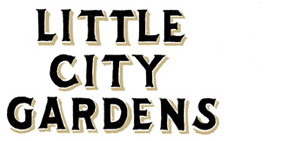
Little City Gardens
2010 - $2,500 Zoning Code Advocacy Work
Little City Gardens is an experiment in the economic viability of small-scale urban market-gardening. Located on a three quarter of an acre plot in San Francisco, they have been working steadily towards crafting a way for urban food production to sustain a farm economically and build community through innovative, collaborative local food systems. This process will allow the establishment of the ‘urban farmer’ as a career.
Little City Gardens is currently a small salad greens business, an educational site, and a working model of food production in San Francisco. Advocacy work done by the founders of Little City Gardens, Brooke Budner and Caitlyn Galloway, was crucial for the 2011 changes in San Francisco zoning code that now allows for and encourages urban agriculture.

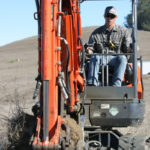

Marin Carbon Project
2019 - $20,000 Carbon Cycle Institute
2018 - $20,000 Point Reyes Carbon Farming
2017 - $20,000 Point Reyes National Seashore Carbon Farm Plan
As much as one-third of the surplus CO2 in the atmosphere driving climate change has resulted from land management practices, including agriculture. Carbon farming, a whole-farm approach to reduce greenhouse gas (GHG) emissions and promote long-term carbon sequestration in agricultural ecosystems, holds the potential to significantly reduce GHG by increasing the rate of transfer of atmospheric carbon dioxide to plant material and the soil organic carbon pool, leading to enhanced soil health and increased farm productivity.
Years of rigorous research undertaken by the Marin Carbon Project (MCP), under the leadership of UC Berkeley Professor Dr. Whendee Silver, has culminated in robust confirmation of the GHG-mitigating efficacy of organic matter amendment on rangeland soils. Dr. Silver’s research demonstrated that agricultural land management practices can measurably increase rates of carbon sequestration, resulting in enhanced soil quality and soil water holding capacity and increased soil carbon and forage production (Ryals and Silver 2013).
With this research and field validation, MCP integrates carbon farm planning into the existing conservation planning program that help land managers meet their natural resource management goals while supporting productive lands, thriving streams, and on-farm wildlife habitat. The program is applicable to a diversity of land uses and enables MCP partners to identify and quantify practices to increase carbon sequestration and reduce GHG emissions on farm in a whole-farm planning context. These practices support climate change resiliency by reducing atmospheric CO2 levels, improving soil health, water holding capacity, and crop and forage production. By increasing soil water holding capacity, carbon farm practices promote water conservation, reduce overland flow and sediment and nutrient transport, reduce irrigation needs and reduce stream withdrawals, thereby enhancing water quality and instream habitat. Agroforestry practices, such as hedgerows, silvopastures and windbreaks, sequester CO2 while enhancing on-farm microclimate and wildlife and pollinator habitat.
MCP prescribes these climate-beneficial practices by completing Carbon Farm Plans for farmers. MCP partners have completed 19 CFPs across 8,000 acres for dairy and grazing operations in Marin County. The plans have been used to inform Drawdown Marin and the new (2020-2030) Marin County Climate Action Plan. Carbon farm plan data has been used to scale up and estimate agriculture’s potential to meet the goal of reducing GHG emissions and enhancing carbon sequestration on the working lands of the county. An average of eight practices are prescribed in each plan which, if implemented, would collectively sequester 11,585 MTCO2e annually. Over twenty years, this is 258,237 MTCO2e sequestered. The Marin County Climate Action Plan establishes an annual target of 55,752 MT CO2e reduced or sequestered on county working lands, with a target date of 2030.
MCP has already begun the work of helping farmers with practice implementation. In partnership with farmers, public agencies and the Seed Fund, MCP has kicked off the implementation of climate-beneficial practices as prescribed in plans. These practices are improving water quality and quantity for farms and fisheries on coastal agricultural lands. Practices are collectively sequestering 136.2 MTCO2e annually (108 cars driven per year), as calculated using COMET-Planner, an on-farm GHG model developed by Colorado State University, USDA-NRCS and the Marin Carbon Project. Cumulatively, the completed carbon farm practices total: 3,088 linear feet of hedgerow; 1,315 linear feet of 2-3 row windbreak; 2 acres of silvopasture; 518 linear feet of riparian planting; 0.34 AC of critical area planting, and 23.5 acres of compost application. A total of 2,542 trees and shrubs were planted in conjunction with implementation of these plans.
The Seed Fund has supported the following MCP endeavors:
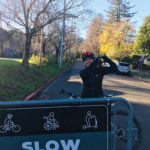
Marin County Bicycle Coalition
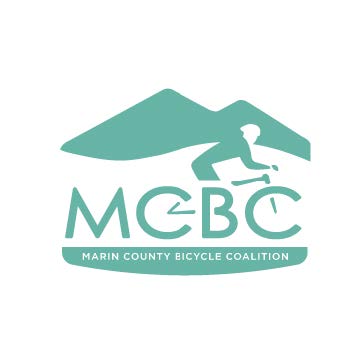
Marin County Bicycle Coalition
2020 - $10,000 Funding for More Emergency Bike Lanes During COVID-19 Pandemic
2019 - $15,000 General Support
2018 - $20,000 The Alto Tunnel Project
Marin County Bicycle Coalition’s mission is to promote safe bicycling for everyday transportation and recreation. MCBC sees the bicycle as a vehicle for change capable of making Marin’s communities happier and healthier by improving air quality and public health, and reducing traffic congestion.
MCBC has been a leader in bicycle advocacy at the local, state, and national levels since 1998. Using a two-pronged approach to promote bicycling, MCBC teaches children and adults how to ride responsibly and safely, while also advocating for the infrastructure improvements needed to make bicycling a safe and convenient option in all of Marin County.
As part of a new 5-year Strategic Plan, MCBC’s goal is to create a bicycle-centric Marin and build the power and influence of MCBC across all of this county’s communities. In order to make bicycling a viable option for the thousands of Marin residents who are able to bike but experience hurdles, MCBC is exploring how to promote and overcome obstacles to bicycling for transportation through outreach and engagement strategies. This work will focus on addressing the transportation needs and barriers in communities of concern that will be most impacted by severely reduced transit service, including Marin City, San Rafael, and Novato.
MCBC is advocating to make bicycling safe and convenient for people of all ages and abilities. With a goal to share the joy and benefits of bicycling for transportation and recreation with new and emerging riders, MCBC is adding several exciting programs targeting women, children, BIPOC, and underserved communities over the next five years.
Several programs that have benefited from Seed Fund’s support include advocating for Slow Streets during Shelter-in-Place in 2020, supporting community ambassadors in “Communities of Concern” in Marin, and spearheading the advocacy effort to complete the North-South Greenway with the Alto Tunnel Project.
During Shelter-in-Place in early 2020, MCBC promoted and suggested ways in which each jurisdiction in Marin might repurpose streets, and provided technical assistance to those that were interested in opening streets to pedestrians and people on bicycles. MCBC also took this opportunity to promote the quick-build approach to creating bicycle and pedestrian infrastructure, as well as the simplicity and effectiveness of “open streets.”
Many downtowns around Marin went car-free to create space for people to dine outdoors. Nearly all of Marin’s cities and towns approved ordinances allowing businesses to expand operations into adjacent public spaces, including on and off-street parking. As a result, families arriving to town centers by bike experienced a heightened quality of life, especially important during the Shelter-in-Place. Several towns including Novato, San Rafael, San Anselmo, Tiburon, and Sausalito went a step further and completely closed portions of their main streets to cars weekly for the entire summer.
Since its founding in 1998, MCBC has been instrumental in building the political will and securing the funding needed to close several gaps along the North-South Greenway. Alto Tunnel is now the highest priority project within the Greenway.
Alto Tunnel is the lynchpin of the North-South Greenway, a regional connection that will make bicycling a safe and convenient option for people who live, work, and visit Marin and Sonoma Counties. When reopened, it will greatly enhance the ease with which people can bike between Central and Southern Marin, and by extension, San Francisco.
MCBC continues to work with and guide community-based group Friends of Alto Tunnel (FOAT) to champion this effort. MCBC is committed to providing FOAT with support through technical assistance, strategic guidance, and community outreach assistance en route to building the remaining political support needed to pursue federal, state, and regional funds for the project.
MCBC has always known that reopening the tunnel would require a sustained and resolute effort. With no studies remaining, the advancement of the project is at a critical juncture. MCBC is now looking to win political support--thereby moving toward implementation--by catalyzing neighborhood-level discussions aimed at 1) demonstrating the tunnel’s value, 2) answering financial questions, and 3) addressing neighborhood concerns.
The Seed Fund’s support is enabling MCBC's community outreach coordination and strategic guidance by 1) aiding in the recruitment, training, and mobilization of neighborhood representatives, and 2) assisting with the facilitation of community workshops, walking tours, and listening sessions aimed at addressing and mitigating concerns related to neighborhood impacts.
Perhaps more importantly, though, the community engagement work enabled by the Seed Fund is helping this project to serve as a national model in building grassroots support for visionary bicycle and pedestrian projects that face local resistance due to high capital costs and perceived neighborhood impacts.
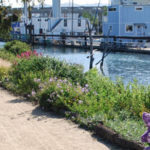
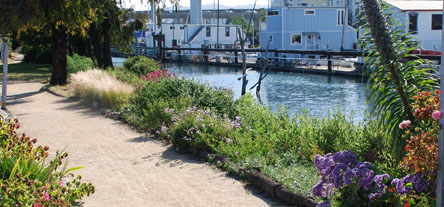 Mission Creek Conservancy
2014 - $5,000 Interpretive Signage
Mission Creek Conservancy (MCC) preserves and enhances the tidal community at Mission Creek, a 24 acre area of land and tidal water within historic Mission Bay. It is home to a rich ecology of mudflats, rock, piling and float marine invertebrate forests, fish, bird and marine mammal populations.
MCC will create and install two signs. One for the Mission Creek Tidal Wetlands, showing interdependent groups of wildlife nurtured by tidal waters, mudflats and invertebrate habitats. A second for the bird and butterfly habitat in Huffaker Park showing crucial relationships with larval food plants, nectar and food source plants.
Mission Creek Conservancy
2014 - $5,000 Interpretive Signage
Mission Creek Conservancy (MCC) preserves and enhances the tidal community at Mission Creek, a 24 acre area of land and tidal water within historic Mission Bay. It is home to a rich ecology of mudflats, rock, piling and float marine invertebrate forests, fish, bird and marine mammal populations.
MCC will create and install two signs. One for the Mission Creek Tidal Wetlands, showing interdependent groups of wildlife nurtured by tidal waters, mudflats and invertebrate habitats. A second for the bird and butterfly habitat in Huffaker Park showing crucial relationships with larval food plants, nectar and food source plants.

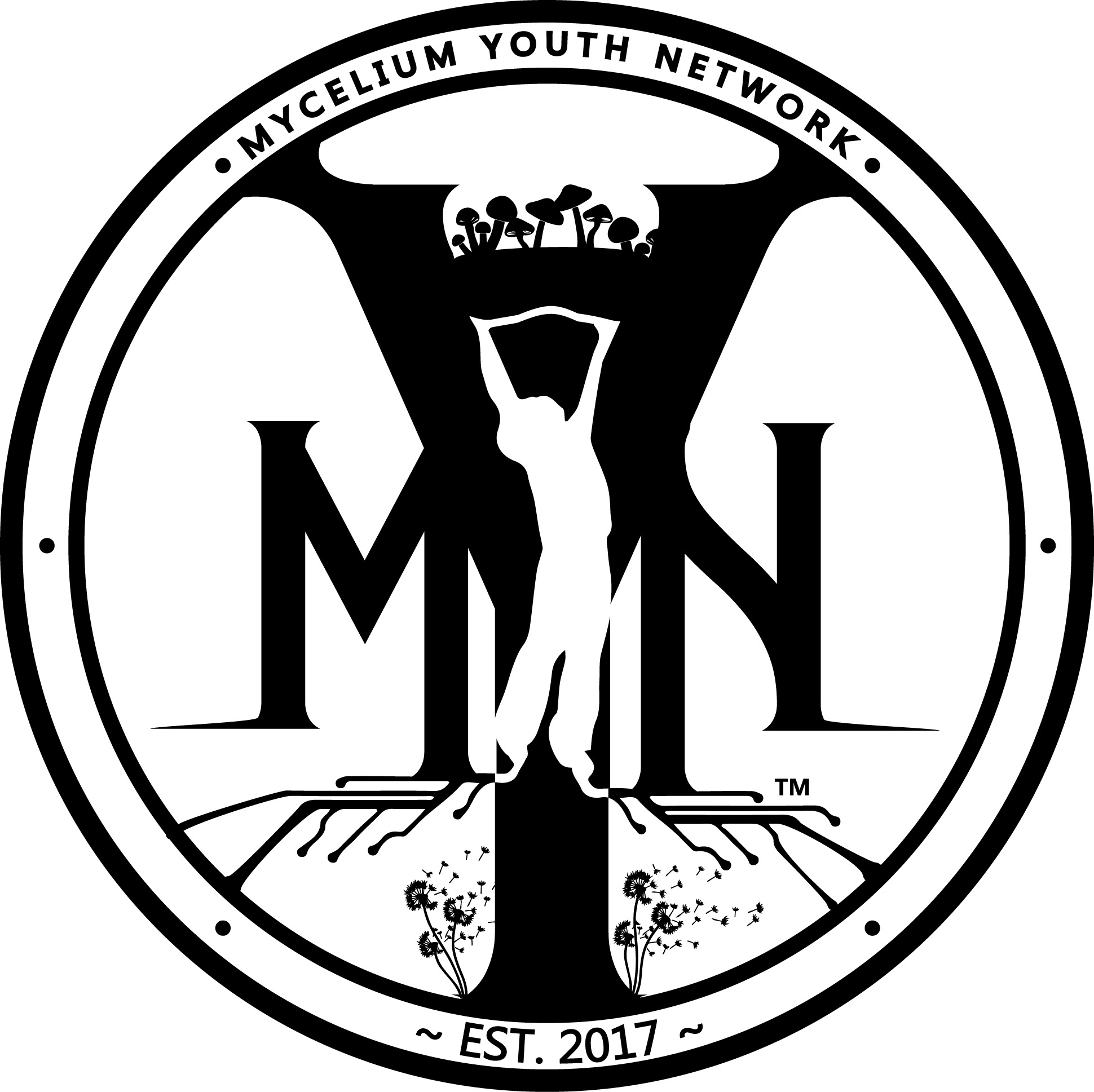
Mycelium Youth Network (MYN)
2022 - $15,000 Youth Council
2021 - $15,000 Climate Resilience Work With Youth
Mycelium Youth Network (MYN), founded in 2017, is an all BIPOC, groundbreaking, youth-centered organization in the San Francisco Bay Area that prepares low-income Black and Brown youth in neighborhoods most impacted by both climate and environmental injustice, and who are most vulnerable to and already feeling the effects of environmental racism, for climate change.
MYN was founded to fill a curriculum gap in too many schools that fail to include climate resiliency in STEAM instruction. Through partnerships with schools and stand alone programming, they use a merger of ancestral traditions and traditional ecological knowledge that emphasize youth environmental stewardship and relationship building alongside a rigorous science, technology, engineering, arts, and math (STEAM) curriculum that focuses on practical hands-on skills for climate resilience and mitigation that youth create and implement in their homes and local communities.
Youth are empowered to grow as visionary leaders and budding environmentalists, connect with ancestral teachings, and trust in the wisdom of the natural world. MYN centers this work on intersectional climate justice, which entails community-building but also preparing future leaders to carry out systemic change. In just three short years, they have provided hands-on climate-resilient training to close to a thousand frontline low-income youth of color throughout Oakland and the Bay Area. The skills youth gain in these programs are agency, leadership building, and rooted in a strong belief in the power of citizen science to change the world, crucial resources needed as the community collectively faces an increasingly precarious climate-affected world.
The Seed Fund will provide generous support for MYN’s groundbreaking current program Climate Resilient Schools which, working collaboratively with communities at several Oakland Unified School District and San Francisco Unified school sites, will create a scalable model for what community climate resilience can look like at a school across several areas of climate resilience: electricity, food, water, and air, each of which pertains to an area of their programming (Science for Survival, Growing Our Health: Food, Soil, and Carbon Drawdown, Water is Life, and Clean Air is a Right). This includes infrastructure building at schools sites, including water catchment systems, community events to foster community voice and prioritize community needs, creating aligned curriculum, and delivering professional development support for teachers and schools to embed the work. This pilot will create the model that aligns with MYN’s goals to scale the curriculum across both districts in the future, with coordinated learning pathways across middle and high school curricula. Even more, MYN envisions this work as going beyond the local community and into the larger world, creating data points for educators, adaptation professionals, and climate scientists to use in the promotion of tools to support global efforts to fight climate change. Data collected in this work will also be instrumental in guiding future curriculum and projects both locally as well as a guide for other cities and states.
This funded project directly supports MYN’s theory of change and organizational mission that building the capacity of front-line communities to address climate change not only mitigates the worst of climate change in the short-term but creates new ways for communities to engage with their natural resources sustainably in the long-term. Additionally, centering climate resilience at school sites ensures youth and their community members see themselves, their communities, and their futures directly aligned with school curricula, creating an important opportunity for real, collaborative, community-based climate solutions—all led by youth—bringing hope, resilience and youth-led community preparedness to those who are most impacted by climate change and environmental racism.
Mycelium is already considered a pioneer in climate education, named as one of the only organizations doing specific climate related work (International Transformational Resilience Coalition press release on 1/8/2019) and recognized internationally by the Quaker United Nations People’s Empowerment Climate Series. They have been profiled in SF Chronicle, KQED, Estuary Magazine, our podcast in We Rise productions, and a blog on us by Columbia University’s State of the Planet at their Earth Institute. MYN has also served as a core member of the Oakland Climate Action Coalition (OCAC) and was instrumental in drafting culturally responsive youth-oriented solutions to climate change.
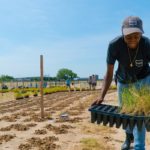
Natural Areas Conservancy (NAC)
CUNY interns identify a tree’s species in a natural area forest.
Credit: Natural Areas Conservancy
High school interns collect ecological data at a pond in Forest Park, Queens.
Credit: Natural Areas Conservancy
The Citywide Trails Team locally sources and utilizes large boulders to improve New York City’s trail network.
Credit: Natural Areas Conservancy
Deputy Director of Research and Conservation, Dr. Clara Pregitzer, shares research on the importance of natural areas as part of a solution to climate change at the Yale School of the Environment.
Credit: Natural Areas Conservancy
CUNY interns preparing White Oak seedlings at Greenbelt Native Plant Center in Staten Island, New York.
Credit: Natural Areas Conservancy
Trail maintainer volunteers build a new trail puncheon to improve trail accessibility.
Credit: Natural Areas Conservancy
NAC’s Executive Director, Sarah Charlop-Powers, advocates for increasing city-wide funding and support for green space.
Credit: Natural Areas Conservancy
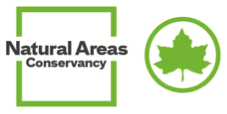
Natural Areas Conservancy (NAC)
2023 - $15,000 Research and Conservation
2022 - $20,000 Climate Lab
2021 - $15,000 General Support
Started in 2012, the Natural Areas Conservancy (NAC) is a non-profit organization devoted to restoring and conserving New York City’s 20,000 acres of forests and coastal areas. The NAC is the first park conservancy dedicated exclusively to New York City’s natural areas, which comprise one third of the city’s park system. The NAC works in more than 50 parks across the five boroughs and takes a science-based approach to conserving the city’s nature, improving coastal resilience, and ensuring healthy forests. They believe that natural areas are vital to sustaining air quality, improving public health, providing New Yorkers with access to nature, and strengthening our communities.
The NAC mentors a diverse group of STEM majors from the City University of New York to become the environmental leaders of tomorrow. Since 2016, they have trained over 100 young adults through their paid internship program. Interns gain skills and experience in ecological research centered around current issues natural areas face. In addition to on-the-ground ecological experience, interns receive professional development training in networking, job interviews, and personal budgeting. Students gain valuable and practical scientific experience in natural areas management while contributing vital information to local urban land practitioners and natural areas management decisions. In 2022, NAC expanded the paid internship program to high school students in Queens and Staten Island in 2024. Through the Student Urban Nature program (SUN), NYC high school youth receive training in research, conservation, and natural areas management in NYC.
NAC is a leader in incorporating science into management and policy of NYC’s natural areas and is committed to building a better understanding of the role that natural areas play as a part of the solution to climate change. NAC conducts research that advances management practices, increases public knowledge about the value of natural areas and develops strategies to increase the political and financial support at the local and national levels. In partnership with NYC Parks, NAC created the first-ever, long-term Forest Management Framework for New York City for all 7,300 acres of forests in city parks. This framework sets a bold vision for the future that enhances forest health and biodiversity while creating high-quality recreation opportunities for every New Yorker. They have established an approach to make New York City’s forests more adaptable to future climate related threats and have quantified their role in storing and sequestering carbon. Natural Areas Conservancy supports the long-term health of New York City’s forests through boots-on-the-ground management, restoration projects, planning, and volunteer engagement.
NAC convenes a national network, Forests in Cities (FIC), of colleagues from 19 metro regions across the U.S. who work to restore, manage, and advocate for forested natural areas. The NAC has facilitated the publication of over 25 case studies and the first national report on urban forested natural areas, including responses from over 100 organizations across the country. The Forests in Cities program was launched in 2017 by the NAC to promote and advance healthy forested natural areas in cities across the US. This program has three primary goals: 1) to nurture and grow a national network of urban forest managers and researchers, 2) to advance urban forest science and practice, and 3) to advocate for increased resources and support. The NAC’s leadership in urban science-based conservation has resulted in multiple peer-reviewed publications and a special issue in the journal Cities and the Environment.
To address the needs of a vast and complex park system, the NAC created a citywide trails team in 2017 to conduct trail improvement projects on over 300 miles of official and unofficial trails, and to train non-profit partners and individual volunteers in trail management techniques. The team works to formalize the 300-miles of trails in New York City and trains advanced volunteers to adopt sections of trails in their local parks. In June 2021, the NAC released the New York City Strategic Trails Plan, which aims to upgrade the city's system of nature trails that spans all five boroughs. The plan will unify the existing network of trails within the 10,000 acres of natural areas in NYC Parks through trail markers, mapped and formalized paths, and routes designed to showcase unique ecological assets. The plan will increase access to parks and recreation, and give New Yorkers a high quality experience in nature.
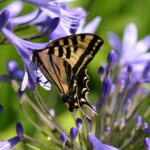
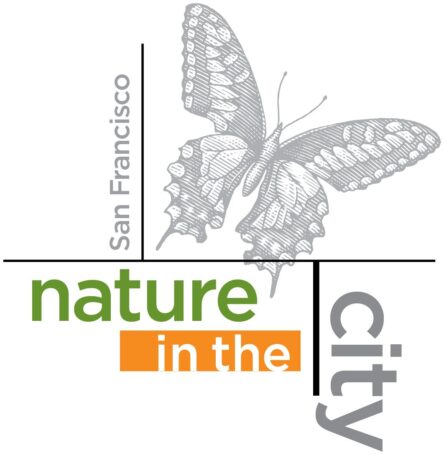
Nature in the City
2021 - $15,000 Climate Resilience Work
2017 - $5,000 Backyard Natives Nursery Program
2017 – $10,000 General Support
2014 - $5,000 General Support
2011 - $5,000 Green Hairstreak Butterfly Project
2010 - $5,000 Green Hairstreak Butterfly Project
As the only non-profit organization dedicated to restoration & stewardship of San Francisco’s natural heritage, Nature in the City plays a critical role in securing the city’s wild lands for future generations. Nature in the City connects with the city at large through the sponsorship of nature walks, events for children and families, eco-literacy training, volunteer opportunities, and resources for community groups wishing to start their own citizen science projects.
Green Hairstreak Butterfly project
Discovered by modern science in the late 1800s from “the hills of San Francisco” the Green Hairstreak (Callophrys dumetorum) is a small, nickel-sized butterfly isolated in three remaining remnant habitats within the city: Hawk Hill and Rocky Outcrop overlooking the Sunset District and the coastal bluffs of the Presidio. The primary goal of the Green Hairstreak Project is to connect two disjunctive butterfly populations in the Sunset District with street level plantings of host and nectar sources. If the two populations can interbreed, their genetic viability and diversity will be more secure.
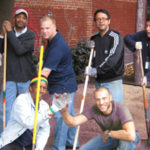
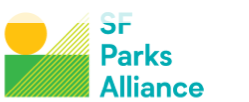
Neighborhood Parks Council
2007 – $5,000 General Support
The Neighborhood Parks Council (NPC) advocates for a superior, equitable and sustainable park and recreation system. Since 1996, NPC has grown to include over a hundred and twenty park groups and four thousand park volunteers, establishing itself as San Francisco’s premier park advocacy group. It provides leadership and support to park users through community-driven stewardship, education, planning and research. NPC strives to increase public and private support for, and commitment to, the restoration and improved maintenance of our neighborhood parks, playgrounds, and recreation facilities. In addition to technical assistance, NPC provides a forum for sharing information and experience at park planning meetings in each District, including educational presentations and workshops with guest speakers and topic experts.
In 2011 NPC merged with The San Francisco Parks Trust to form the San Francisco Parks Alliance.
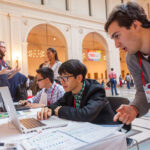

New York Botanical Garden
2023 - $15,000 Visionmaker
The New York Botanical Garden (NYBG) has been a connective hub among people, plants, and the planet since 1891. We’re rooted in the cultural fabric of New York City, here in the heart of the Bronx—its greenest borough. For more than 130 years, we’ve invited millions of visitors to make the Garden part of their lives, exploring the joy, beauty, and respite of nature. NYBG’s 250 acres are home to renowned exhibitions, immersive botanical experiences, art and music, and events with some of the most influential figures in plant and fungal science, horticulture, and the humanities. We’re also stewards of globally significant research collections, from the LuEsther T Mertz Library collection to the plant and fungal specimens in the William and Lynda Steere Herbarium, the largest such collection in the Western Hemisphere.
Amplifying the role of plants in solving the climate and biodiversity crises is a primary focus in our latest strategic plan, Branching Out, which officially launched in January 2024. Paramount to the future of the Garden is our strategic approach to Urban Conservation led by Dr. Eric Sanderson, Vice President for Urban Conservation. In his role at NYBG, Dr. Sanderson is tasked with advancing nature-based solutions to environmental issues and working with New Yorkers to visualize a nature-full city, secure community input on future plans, raise public awareness, advocate on a citywide scale, green the landscape, and ultimately, make New York City more resilient to the effects of climate change.
Core to Dr. Sanderson’s strategy is Visionmaker, a digital tool that enables New Yorkers to better contend with the environmental challenges in our backyard and beyond. Visionmaker is a platform for ecological democracy for the citizens of New York City that strives to empower and embolden everyday citizens to utilize their voice (and technology) for climate change planning. Using the website, users can investigate the city’s ecology in three timeframes: the past, the present, based on the current distribution of ecosystems and lifestyles in the city, and the future, as generated by the user’s imagination and using scientific models to estimate different ecosystem and ecological scenarios. Once a user has created a vision that matches their expectations, it can be shared through the interface with others, who can then borrow and build their vision, thereby shaping an idea of what the future of NYC could look like in the face of climate change.
In this next phase of Visionmaker, Dr. Sanderson and his team seek to take the website to the next level by converting the carbon model in Visionmaker from JavaScript to Python code and testing the digital tool in a new cloud-based server. Following the update, anyone with an Internet connection can contribute their ideas for the future of their neighborhoods more effectively and visualize multiple ecological scenarios related to the carbon cycle, which includes predictions of carbon dioxide and methane and transportation and climate-dependent buildings submodels. Although currently focused on New York City, the online platform is designed for expansion and portability to other cities and for enthusiasts and experts alike. Visionmaker NYC is just one example of how NYBG meets the moment.
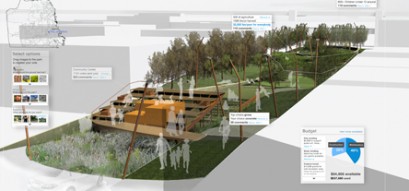 Nicholas de Monchaux
2011 Fellow
Nicholas de Monchaux is an architect and urbanist, whose work examines the intersections between nature, technology and the city. Currently assistant professor of Architecture and Urban Design at UC Berkeley, he has recently authored Spacesuit: Fashioning Apollo (published by the MIT press).
His project Local Code: Real Estates used geospatial analysis to identify thousands of publicly owned abandoned sites in major US cities - imagining this distributed, vacant landscape as a new urban system. Using parametric design, a landscape proposal for each site is tailored to local conditions, optimizing thermal and hydrological performance to enhance the whole city’s ecology—and relieving burdens on existing infrastructure. Local Code’s quantifiable effects on energy usage and stormwater remediation eradicate the need for more expensive, yet invisible, sewer and electrical upgrades. In addition, the project uses citizen participation to conceive a new, more public infrastructure as well —a robust network of urban greenways with tangible benefits to the health and safety of every citizen. Local Code was recently exhibited at SPUR and was a finalist in the WPA 2.0 competition sponsored by UCLA Citylab and appeared at the 2010 Biennial of the Americas.
nicholas.demonchaux.com
Nicholas de Monchaux
2011 Fellow
Nicholas de Monchaux is an architect and urbanist, whose work examines the intersections between nature, technology and the city. Currently assistant professor of Architecture and Urban Design at UC Berkeley, he has recently authored Spacesuit: Fashioning Apollo (published by the MIT press).
His project Local Code: Real Estates used geospatial analysis to identify thousands of publicly owned abandoned sites in major US cities - imagining this distributed, vacant landscape as a new urban system. Using parametric design, a landscape proposal for each site is tailored to local conditions, optimizing thermal and hydrological performance to enhance the whole city’s ecology—and relieving burdens on existing infrastructure. Local Code’s quantifiable effects on energy usage and stormwater remediation eradicate the need for more expensive, yet invisible, sewer and electrical upgrades. In addition, the project uses citizen participation to conceive a new, more public infrastructure as well —a robust network of urban greenways with tangible benefits to the health and safety of every citizen. Local Code was recently exhibited at SPUR and was a finalist in the WPA 2.0 competition sponsored by UCLA Citylab and appeared at the 2010 Biennial of the Americas.
nicholas.demonchaux.com
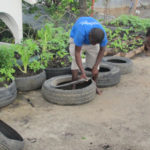
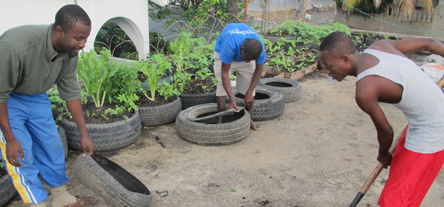
Nouvelle Vie, Haiti
2010 - $5,000 Permaculture Training Programs
The Nouvelle Vie Youth Corps is a network of young Haitian leaders who serve Haiti’s trauma relief and food security needs, empowering Haitian communities toward greater self-reliance.
Since the earthquake in 2010 the Youth Corps has been providing trauma relief and food security services to thousands of people impacted by the disaster. Our food security program involves identifying and reaching out to vulnerable populations, particularly schools and orphanages, and conducting basic training in permaculture techniques aimed at enabling these populations to grow their own food and convert organic wastes into soil through composting. We focus on simple and effective techniques for growing substantial quantities of nutritious food on small footprints of land, such as vertical rice sack gardens. A grant of $5,000 supports the training costs for at least one student. After the training, each student will have the skills and support needed to train at least 1,000 people per year in practical sustainable agricultural techniques, a substantial return on investment in the development of a grassroots sustainable food system in Haiti.
 Novella Carpenter
2009 Fellow
Novella Carpenter is an urban farmer, author, and biofuel champion. Her work has appeared on Salon.com, Sfgate.com, and Food and Wine magazine. She is the author of Farm City: The Education of an Urban Farmer (Penguin, 2010). Farm City tells the story of her urban farm in Oakland, California where for more than ten years, Carpenter has been raising and living off of her own rabbits, chickens, bees, fruits, and vegetables. She also co-authored The Essential Urban Farmer (Penquin, 2010) with City Slicker Farms founder, Willow Rosenthal.
ghosttownfarm.wordpress.com
Novella Carpenter
2009 Fellow
Novella Carpenter is an urban farmer, author, and biofuel champion. Her work has appeared on Salon.com, Sfgate.com, and Food and Wine magazine. She is the author of Farm City: The Education of an Urban Farmer (Penguin, 2010). Farm City tells the story of her urban farm in Oakland, California where for more than ten years, Carpenter has been raising and living off of her own rabbits, chickens, bees, fruits, and vegetables. She also co-authored The Essential Urban Farmer (Penquin, 2010) with City Slicker Farms founder, Willow Rosenthal.
ghosttownfarm.wordpress.com
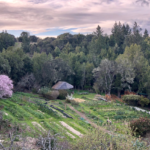
Occidental Arts and Ecology Center

Occidental Arts and Ecology Center
2016 - $10,000 General Support
2009 - $10,000 Greenhouse Project
2007 - $5,000 General Support
The Occidental Arts & Ecology Center (OAEC) is an 80-acre research, demonstration, advocacy, and organizing center in Sonoma County, California that develops strategies for regional-scale community resilience.
For over 30 years the OAEC site has been a sustainable agriculture training center, working with thousands of farmers, community and school gardeners, and food and farming activists. For more than a decade, the OAEC has become recognized as a national leader in research, demonstration and participatory education in a variety of ecological and agricultural issue areas.


Open Plans
2023- $15,000 General Support
Founded in 1999 as a nonprofit organization dedicated to making New York City more livable, Open Plans works to foster a more connected relationship between New Yorkers, their streets, and their city government. In its early years, the organization focused on developing mapping tools as a way to analyze the issues that affect New Yorkers on a block-by-block basis. Using the information gathered, the organization began to not only map the issues but develop and propose solutions. Topics included public transportation; the use of streets as spaces for community gathering, neighborhood celebration, and events; public safety challenges caused by car dominance; lack of infrastructure for micromobility and pedestrians; and the desire for more equitable access to accessible, safe, public spaces.
In 2004, Open Plans launched Streetfilms, a project that produces and publishes short films highlighting best practices for transportation systems and public spaces around the world. These informative, playful, and inspiring films continue to fuel advocacy efforts today -- and garner huge wins the world over, including the launch and expansion of a robust protected bike lane network in New York City, bike access across the Queensboro and Brooklyn Bridges and complete redesigns of iconic areas such as the Meatpacking District in Lower Manhattan.
In 2006, Open Plans launched Streetsblog, a daily news source providing deep dives and insider scoops, chronicling the transportation and livable streets scene in New York City and beyond. Inspiring offshoots in many of the major cities in the United States, Streetsblog has become a one-stop shop for all the news that’s fit to discuss regarding transportation, policy, planning, advocacy, budgets, and more. Its readership includes hobbyists, urbanism professionals, and city officials alike. From their annual Parking Madness awards to their recent coverage of the fight for safe and equitable public spaces for all, including the right to protest and the rights of delivery workers, Streetsblog is always on the cutting edge.
In 2008 and 2009, Open Plans launched the New York City Streets Renaissance Campaign, in collaboration with Transportation Alternatives and Project for Public Spaces. This campaign challenged the auto-centric policies that create congested and unsafe, inhospitable streets. This work led to the first protected bike lanes in New York City, along 9th Avenue in Chelsea, along with years of streetscape changes on the Upper West Side.
Between 2010 and 2015, Open Plans built on their success and merged their tech and advocacy foci, working with municipalities on tools for mapping and advocated for open source data tools for people to engage with their communities. The organization created maps allowing people to indicate issues in their neighborhoods, specifically around mobility and public space. Working with schools became a major focus; a new education and advocacy arm of the organization taught students how to identify safety issues on their commutes to school and empowered them to navigate their paths more safely. This work often led to students learning more about urban design and civics. Through drawings, petitions, and letters, students spoke at community boards and even engaging with elected officials, learning the power of civic engagement.
By late 2018, StreetopiaUWS was created to reinvest in Open Plans’ long-standing work in the Upper West Side neighborhood of Manhattan. Rooted in grassroots advocacy, Streetopia’s debut campaign was launched to educate people about public space management and start advocating for the city to care for public spaces, especially in residential areas. Today the place-based project works intimately with Upper West Side residents, decision makers, and other stakeholders to achieve safer bike routes and promote a people-centered mindset to placemaking and planning.
The Covid-19 pandemic created unprecedented challenges for New York City but ushered in a new era for Open Plans. As the city was forced to repurpose space for safe, outdoor public gatherings, many guiding principles of livability and people-centered space became commonplace. Suddenly, congested streets were transformed into car-free community space; curb lanes once relegated to parking were transformed into business-saving outdoor cafes. Open Plans seized on this spirit of innovation and gained momentum. The new Open Streets program offered a first-ever opportunity for communities to reprogram their streets for strolling, playing, dancing, and learning – and led to Open Plans’ campaign for a central Office of Public Space Management that would care for and invest in these burgeoning spaces as city services. The organization hired new policy expertise and pursued systemic change in city government while connecting directly with communities at the grassroots level.
This dual focus, with Streetsblog and Streetfilms creating compelling media, is a hallmark of Open Plans’ unique approach. Today, Open Plans continues to grow its nimble and focused staff. With a focus on advocacy, journalism, and inspiring film, Open Plans is illuminating new possibilities and creating meaningful change for every resident of New York City.
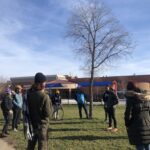
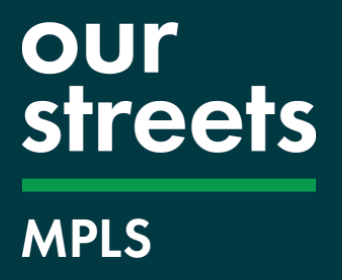
Our Streets Minneapolis
2021 - $10,000 Reimagining I-94
Our Streets Minneapolis is a transportation advocacy organization that organizes for a community where biking, walking, and rolling are easy and comfortable for everyone. Their work is volunteer driven and is grounded in community organizing.
As part of their mission to transform transportation in Minneapolis and the Twin Cities region, they have been leading a campaign to reimagine Interstate 94 as part of the Minnesota Department of Transportation’s Rethinking I-94 project. The Rethinking I-94 project will determine the future of I-94 approximately between the downtowns of Minneapolis and Saint Paul.
I-94, like many urban freeways in America, was intentionally routed through low income and communities of color. The freeway destroyed hundreds of homes and businesses when it was constructed in the mid 20th century. In Minneapolis, one out of every twenty residents lost their home to freeway construction. 80% of Black Minneapolis residents lived in the communities where freeways, including I-94, were built.
I-94’s harm has been ongoing ever since it was constructed. The freeway’s traffic generates hazardous air pollution that contributes to health disparities including one of the region’s highest rates of asthma hospitalization. The sunken freeway trench divides neighborhoods and limits transportation options for households without access to a car. The freeway also occupies a large swath of land that could be returned to neighboring communities to address local needs including affordable housing, commercial space for local businesses and greenspace. This isn’t to mention the freeway’s climate impact. Transportation is the largest greenhouse gas emissions sector in Minnesota and little progress has been made in recent years as fuel efficiency improvements have been mostly negated by increases in vehicle miles traveled.
The Rethinking I-94 project represents a once-in-a-lifetime opportunity to redress these harms and reimagine the freeway corridor. Our Streets Minneapolis’ advocacy is focused on building a community vision to remove this segment of I-94 and replace it with a multi-modal transportation corridor that increases walking, biking and transit access, improves health outcomes and puts the needs of adjacent communities first.
Many people aren’t fully aware of how I-94 impacts their daily lives. It can also be difficult to imagine what the corridor could look like without a freeway. However cities across the world have already removed and replaced freeway segments and many more have projects in the works. Our Streets Minneapolis is going directly to the people who are most impacted by the freeway by door knocking throughout the project corridor to highlight these examples and help expand community imagination for what is possible. These conversations are helping to raise awareness about the project and build public pressure on MnDOT and other decision makers to ensure that they deliver a project that improves the lives of people who experience the freeway’s harms daily.
To learn more about this project, go to ourstreetsmpls.org/rethinkingi94
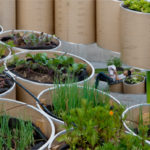
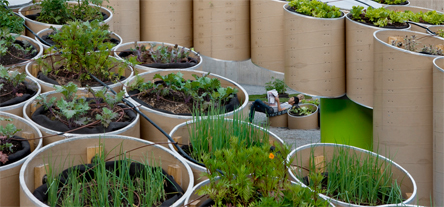
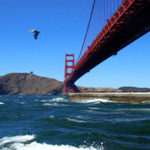
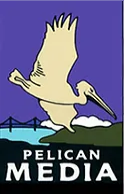
Pelican Dreams
2014 - $5,000 Postproduction
Judy Irving, filmmaker of The Wild Parrots of Telegraph Hill, focuses on large water birds in Pelican Dreams, a feature documentary starring “Gigi,” a starving young bird who stopped traffic on the Golden Gate Bridge, and “Morro,” an injured pelican who makes friends with a duck. The film is about wildness: How close can we get to a wild creature without taming or harming it? Why do we need wildness in our lives, and how can we protect it? Irving aims to connect urban dwellers with urban wildlife in our own backyard.
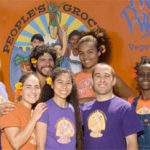
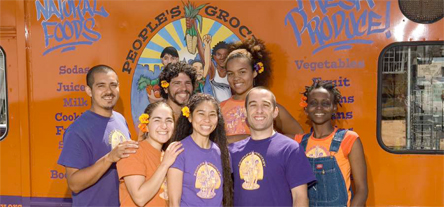 People's Grocery
2007 - $2,500 General Support
The People’s Grocery mission is to improve the health and economy of West Oakland through the local food system. Over the last nine years, People’s Grocery’s urban agriculture, nutrition, and enterprise programs have provided healthy food access while setting the stage for a systemic conversation about healthy food. Organizations across the country have replicated their work, and their leadership development models represent innovative strategies to catalyze resident power in the creation of health equity through food.
The People’s Grocery has gained regional and national recognition as a leader in the evolving food justice movement, providing workshops and trainings in best practices at forums including the California Department of Public Health, California Department of Forestry and Agriculture, the Environmental Grantmakers Association, the Kellogg Foundation’s Food & Society Conference and the Center for Healthy Communities at California Endowment.
website
People's Grocery
2007 - $2,500 General Support
The People’s Grocery mission is to improve the health and economy of West Oakland through the local food system. Over the last nine years, People’s Grocery’s urban agriculture, nutrition, and enterprise programs have provided healthy food access while setting the stage for a systemic conversation about healthy food. Organizations across the country have replicated their work, and their leadership development models represent innovative strategies to catalyze resident power in the creation of health equity through food.
The People’s Grocery has gained regional and national recognition as a leader in the evolving food justice movement, providing workshops and trainings in best practices at forums including the California Department of Public Health, California Department of Forestry and Agriculture, the Environmental Grantmakers Association, the Kellogg Foundation’s Food & Society Conference and the Center for Healthy Communities at California Endowment.
website
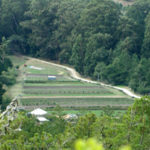

Pie Ranch
2019 - $15,000 General Support
2018 - $15,000 Climate Beneficial Farming at Año Nuevo
2016 - $10,000 General Support
2015 - $10,000 General Support
2010 - $10,000 Capital Campaign
2009 - $10,000 Capital Campaign
2008 - $10,000 Capital Campaign
2007 - $15,000 General Support
PIE RANCH'S MISSION IS TO CULTIVATE A HEALTHY AND JUST FOOD SYSTEM FROM SEED TO TABLE THROUGH FOOD EDUCATION, FARMER TRAINING, AND REGIONAL PARTNERSHIPS.
Pie Ranch works with Bay Area youth and the public via hands-on programming to foster awareness about where food originates, to gain insight into the issues farmworkers face and to understand the benefits of climate-smart farming. Apprentices train to prepare for their own careers in local agriculture by living on site and participating in every aspect of a working farm. Pie Ranch works with partners like the Amah Mutsun, the San Mateo Food Systems Alliance, Puente and others where interests intersect to advocate for a more equitable food system and a healthier planet.
In March of 2020, programming at the farm halted due to COVID-19. Seeking a way to be of use to the Greater Bay Area while regular programming was in abeyance, the Directors crafted a Farm Fresh Food Relief Program that utilized Pie Ranch’s program staff to aggregate, pack and distribute fresh produce to already marginalized communities suffering additional hardship from the virus’ economic impact. To date, this ongoing weekly program has served over 20,000 families with healthy, nutritious food.
August brought the CZU fire to Pie Ranch and to southern San Mateo county. Several Pie team members lost their homes while the farm’s historic house (the heart of Pie Ranch, home to its apprentices for over a decade and site of the Pie admin offices), its greenhouse, and countless trees fell to the blaze.
The extended Pie Family, including the Seed Fund rallied to support Pie Ranch’s ongoing efforts to recover from the twin catastrophes of the fire and assist with the organization’s effort to ameliorate the effects COVID-19. Seed Fund assistance ensures Pie’s program team has the resources to reach and teach youth and the public with online videos, creating socially-distanced curriculum at school gardens and implementing these same types of activities for small pods from partner schools and organizations at the farm.
The Emerging Farmers’ program lives on in a different iteration at neighboring Cascade Ranch , a climate - resilient regenerator farm that seeks to create wealth and equitable building opportunities for early stage farmers that have traditionally been excluded from land ownership. Land, mentorship, equipment access, and business planning are just some of the resources Pie Ranch funnels towards participants in this innovative program with the help of donors like the Seed Fund.
Pie’s Farmstand was able to stay open as an essential business providing this isolated community with farm fresh produce and in addition, a source of revenue for the farm during a time when other income streams have dried up.
Pie Ranch’s continued efforts in regional advocacy work took on a new significance this year with COVID exacerbating the fissures in the ailing food system and then climate change, drought and fires threatening the local Bay Area agri-system like never before. Pie’s advocacy efforts, partially supported by the Seed Fund, towards crafting a more sustainable Coastside is integral to the viability of our agriculture: Pie puts forth the vision of a more localized food infrastructure as described in the Local Food and Farm Bill, and this will help create a more just and planet-friendly food system.
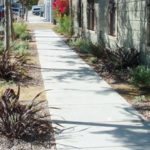
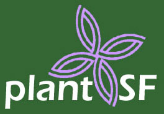
Plant SF
2010 - $5,000 Naples Green, Pavement to Parks Project
2007 - $5,000 General Support
Plant SF exists to promote permeable landscaping as sustainable urban infrastructural practice and as a beautification effort; by providing information to the public and by partnering with city and neighborhood organizations. This mission is accomplished through encouraging and enabling individuals to use an existing permit process to convert areas of the public right-of-way (sidewalks) to exposed-earth gardens, advocating the use of native and drought tolerant plant species, and coordinating with local organizations to facilitate plantings. Plant SF also works with city agencies to encourage permeable landscaping strategies as urban infrastructure and advocates for sustainable water practices, such as ground water recharge, roof drain diversion and water reclamation.
Naples Green was designed to provide neighborhood beautification, new green space, traffic calming improvements and a safe and enjoyable environment for residents to host and accommodate neighborhood events and activities. The work scope included the transformation of approximately 7,500 square feet of concrete and asphalt into new green public open space. At Naples green, landscaped areas with hundreds of new plants and 18 new trees, raised planter beds and pathways all come together to provide an inviting new open space. By removing concrete and asphalt, the Naples Green also provides storm water benefits by allowing rainwater to permeate into the ground instead of flowing into the sewer system. It is located in the Crocker Amazon neighborhood of San Francisco, on Naples Street between Rolph Street and Geneva Avenue.
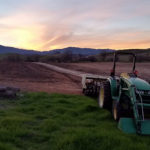
Point Blue Conservation Science
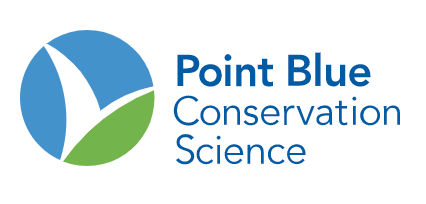
Point Blue Conservation Science
2022 - $15,000 Natural Infrastructure
2019 - $15,000 Coastal Resiliency
2018 - $15,000 Rangeland Watershed Initiative
Point Blue Conservation Science is an internationally recognized leader conserving birds, other wildlife, and ecosystems through science, partnerships, and outreach. Point Blue develops nature-based solutions to climate change, habitat loss, and other environmental threats on land and at sea to benefit wildlife and people. Based in California, where the organization was founded in 1965, Point Blue works from the Sierra to the Pacific and has international programs spanning 13 countries from Alaska to Antarctica. Its hundreds of organizational partners range from Native American tribes to K-12 schools, from farmers and ranchers to government agencies. With a foundation of collaborative climate-smart conservation actions today, natural and human communities will thrive well into the future.
Point Blue shares its scientific findings widely to facilitate the adoption of best practices. Through collecting data over decades, the organization identifies trends that provide guidance for government managers. Findings are shared through workshops, digital tools, and publications in scientific journals.
The Seed Fund’s support has facilitated success for the Sustaining Working Lands Initiative, operated in a unique partnership with the US Department of Agriculture. In counties across California, 12 Point Blue partner biologists live in local communities and help their ranching neighbors implement sustainable conservation on their land while simultaneously increasing production of food for livestock. Practices contributing to soil health and minimizing greenhouse gases include planned grazing, soil amendments, and wildlife habitat restoration. These practices increase the ability of soil to hold water, improve fish and wildlife habitat and water reliability downstream, and protect open space. In addition to addressing climate change, Point Blue’s working lands conservation work on tens of thousands of acres each year contributes to improved human health through reduced air and water pollution.
Point Blue also helps farmers and ranchers manage their lands for fire resilience, providing guidance for prescribed burns on private lands across five California counties. These planned burns can help minimize the risk of wildfire while also improving habitat for wildlife.
Point Blue biologists are using drones and associated novel technologies that make mapping rangeland at large spatial scales and fine resolutions efficient. This development can help support improved stewardship of these ecologically valuable landscapes.
To help coastal communities respond to climate change, Point Blue’s Protecting Our Shorelines Initiative improves the ability of wildlife and people to adapt to flooding and erosion caused by rising seas using nature-based solutions. Restoring beaches can reduce wave energy, conserving and restoring wetlands will increase buffer zones and creating elevated spots in marshes provides spaces for wildlife to retreat to. Point Blue created the Sea Level Rise Adaptation Framework, a handbook for coastal decision makers to help determine which nature-based measures and outcomes are suitable for their location (produced with the San Francisco Bay Estuary Institute and Marin County). This guidance is in demand by municipal planners throughout California. With a grant from the Seed Fund, Point Blue is adapting the handbook to create curriculum and pilot a new training for local government planners, which offers the opportunity to apply what they have learned. From this pilot project, the training can be scaled for coastal government planners to learn best practices for adapting to rising seas with a focus on nature-based solutions, throughout the San Francisco Bay Area and beyond.
Point Blue partners with the U.S. Geological Survey, California government agencies, and others to deliver the state-of-the-art projections for sea level rise and storm induced flooding through our web tool, Our Coast Our Future. The tool has been used by more than 70 local, state, and federal agencies to plan for impacts from sea level rise and we will be adding a new user interface this year to make it even easier for diverse audiences with various levels of technical expertise to use this tool. Point Blue continues to work with coastal stakeholders across CA to apply the best available science and tools, such as Our Coast Our Future, to ensure resilience of our coastal communities and ecosystems from the potential impacts of sea level rise and climate change.

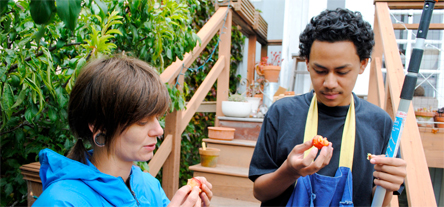 Produce to the People
2011 - $3,000 General Support
Produce to the People (PttP) is a grassroots, community food organization in San Francisco, founded in June 2009. PttP aims to localize the food system by utilizing and celebrating the unused resources in San Francisco, including fruit trees, vacant lots, and people power.
PttP’s work is rooted in outreach to under served communities, providing healthy, organic, local food for people who may not always have access to it, supporting garden projects in communities that may not have the funds to create or sustain them on their own, and providing educational jobs to youth with barriers to employment. They work to link these elements together; the growth, harvest, and dispersal of food, in conjunction with the collaboration of other organizations, neighbors, patrons of food programs, and young people, creates a full circle that links people coming from diverse life experiences and unites them over a common need for healthy food and community based care for one another.
producetothepeople.org
Produce to the People
2011 - $3,000 General Support
Produce to the People (PttP) is a grassroots, community food organization in San Francisco, founded in June 2009. PttP aims to localize the food system by utilizing and celebrating the unused resources in San Francisco, including fruit trees, vacant lots, and people power.
PttP’s work is rooted in outreach to under served communities, providing healthy, organic, local food for people who may not always have access to it, supporting garden projects in communities that may not have the funds to create or sustain them on their own, and providing educational jobs to youth with barriers to employment. They work to link these elements together; the growth, harvest, and dispersal of food, in conjunction with the collaboration of other organizations, neighbors, patrons of food programs, and young people, creates a full circle that links people coming from diverse life experiences and unites them over a common need for healthy food and community based care for one another.
producetothepeople.org
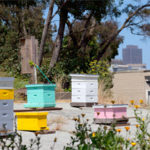
Rebar
2013 - $5,000 Adaptive Metropolis Symposium
2009 - $10,000 Hayes Valley Farm
REBAR's work encompasses visual and conceptual public art, landscape design, urban intervention, temporary performance installation, digital media and print design. Together with UC Berkeley Department of Landscape Architecture, The Adaptive Metropolis symposium convenes a global community of thinkers and doers to discuss the future of user-generated urbanism. The participation of leading scholars and critics allows authoritative and thorough analysis. The symposium also provides practitioners and theorists with a platform to discuss and share ideas, experiences, knowledge, and skills, creating an up-to-date battlefield map. Lastly, the symposium explores new ways to look at the subject matter, setting the stage for the next phase of its development. http://laep.ced.berkeley.edu/adaptivemetropolis/site/
Hayes Valley Farm (HVF) is a temporary urban permaculture demonstration site in San Francisco. It is a 2.2-acre non-profit community-run farm, urban agriculture education and research project located in the heart of the city of San Francisco. After the Loma Prieta earthquake in 1989, San Francisco's Central Freeway was compromised and in the years to come the ramps bordered by Laguna, Oak, Fell, and Octavia Streets were closed, and the lot locked up. In January 2010, the City activated the site for temporary green space use, allowing for Hayes Valley Farm to create the space for education and reflection.
Rebar was part of the original team that conceived of, planned, and fundraised to create Hayes Valley Farm. They worked closely with the Mayor’s Office of San Francisco, The Hayes Valley Neighborhood Association, the Public Utilities Commission, and the Department of Public Works to open the gates to the formerly vacant lot and bring in essential infrastructure. Rebar partnered with S12 Architects in the design and construction of the farm’s greenhouse, and worked closely with the HVF team to develop the farm’s current logo.
Rebar is a cross-disciplinary practice for solving the design problems of the commons.
 Rebecca Solnit
2008 Fellow
Rebecca Solnit is a writer and activist living in San Francisco. She has written on a variety of subjects including the environment, politics, place, and art. Solnit has worked on environmental and human rights campaigns since the 1980s, notably with the Western Shoshone Defense Project in the early 1990s, as described in her book Savage Dreams,and with antiwar activists throughout the Bush era.Solnit has also followed and participated in various revolutions worldwide, including Tiananmen Square, the Zapatista Army of National Liberation, and the Velvet Revolution.Solnit is the author of thirteen books as well as essays in numerous museum catalogues and anthologies. Her books include Infinite City: A San Francisco Atlas, a book of 22 maps and nearly 30 collaborators; A Paradise Built in Hell: The Extraordinary Communities that Arise in Disaster; Storming the Gates of Paradise; A Field Guide to Getting Lost; Hope in the Dark: Untold Histories, Wild Possibilities; Wanderlust: A History of Walking; As Eve Said to the Serpent: On Landscape, Gender and Art; and River of Shadows, Eadweard Muybridge and the Technological Wild West, for which she received a Guggenheim fellowship, the National Book Critics Circle Award in criticism, and the Lannan Literary Award.She has worked with climate change, Native American land rights, antinuclear, human rights, antiwar and other issues as an activist and journalist.
rebeccasolnit.net
Rebecca Solnit
2008 Fellow
Rebecca Solnit is a writer and activist living in San Francisco. She has written on a variety of subjects including the environment, politics, place, and art. Solnit has worked on environmental and human rights campaigns since the 1980s, notably with the Western Shoshone Defense Project in the early 1990s, as described in her book Savage Dreams,and with antiwar activists throughout the Bush era.Solnit has also followed and participated in various revolutions worldwide, including Tiananmen Square, the Zapatista Army of National Liberation, and the Velvet Revolution.Solnit is the author of thirteen books as well as essays in numerous museum catalogues and anthologies. Her books include Infinite City: A San Francisco Atlas, a book of 22 maps and nearly 30 collaborators; A Paradise Built in Hell: The Extraordinary Communities that Arise in Disaster; Storming the Gates of Paradise; A Field Guide to Getting Lost; Hope in the Dark: Untold Histories, Wild Possibilities; Wanderlust: A History of Walking; As Eve Said to the Serpent: On Landscape, Gender and Art; and River of Shadows, Eadweard Muybridge and the Technological Wild West, for which she received a Guggenheim fellowship, the National Book Critics Circle Award in criticism, and the Lannan Literary Award.She has worked with climate change, Native American land rights, antinuclear, human rights, antiwar and other issues as an activist and journalist.
rebeccasolnit.net
Regional Plan Association
2023 - $20,000 Congestion Pricing
Regional Plan Association is a non-profit organization that conducts research, advocacy and planning to improve quality of life for all residents in the New York City metropolitan area. RPA conducts groundbreaking research on issues such as land use, transportation, the environment, and economic development. It also leads advocacy campaigns to foster a thriving, diverse, and climate friendly region and partners with local government to help them grow in an inclusive and sustainable way.
For over 100 years, Regional Plan Association has been an indispensable source of ideas for policy makers and opinion shapers across the New York City metropolitan region. Some of the NYC region’s most significant public works, economic development initiatives, and open space projects have their roots in RPA ideas and initiatives.
A cornerstone of RPA's work is the development of long-range plans and policies to guide the region’s growth. Since the 1920s, RPA has produced four landmark plans for the region. The most recent was released in November 2017.
One of the ideas RPA has been advocating is a tolling program for Manhattan's Central Business District, otherwise known as congestion pricing. For decades, RPA has been saying that the program is vital to managing traffic, raising revenue for public transit, and helping reduce pollution. RPA has coordinated a number of efforts over the years to build support for congestion pricing, and after a few failed attempts, was finally successfully in receiving New York State's authorization for the program in 2019.
Beyond advocacy on congestion pricing, RPA has released a series of more technical documents, to help ensure the program is implemented in a manner that reduces local traffic especially in neighborhoods already overburdened, build trusts with the public, and treat residents from different geographic areas fairly. In 2019, RPA released Congestion Pricing: Getting it Right with the support of many civic leaders. RPA has also produced maps and fact sheets explaining the transit benefits of the program for communities across NYC.
RPA currently co-leads the Congestion Pricing Now coalition with a few partner organizations and continues its robust media and outreach work in anticipation of the implementation of the congestion pricing program in spring 2024. Congestion pricing is officially called the Central Business District Tolling Program and is being managed by the MTA.
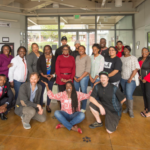
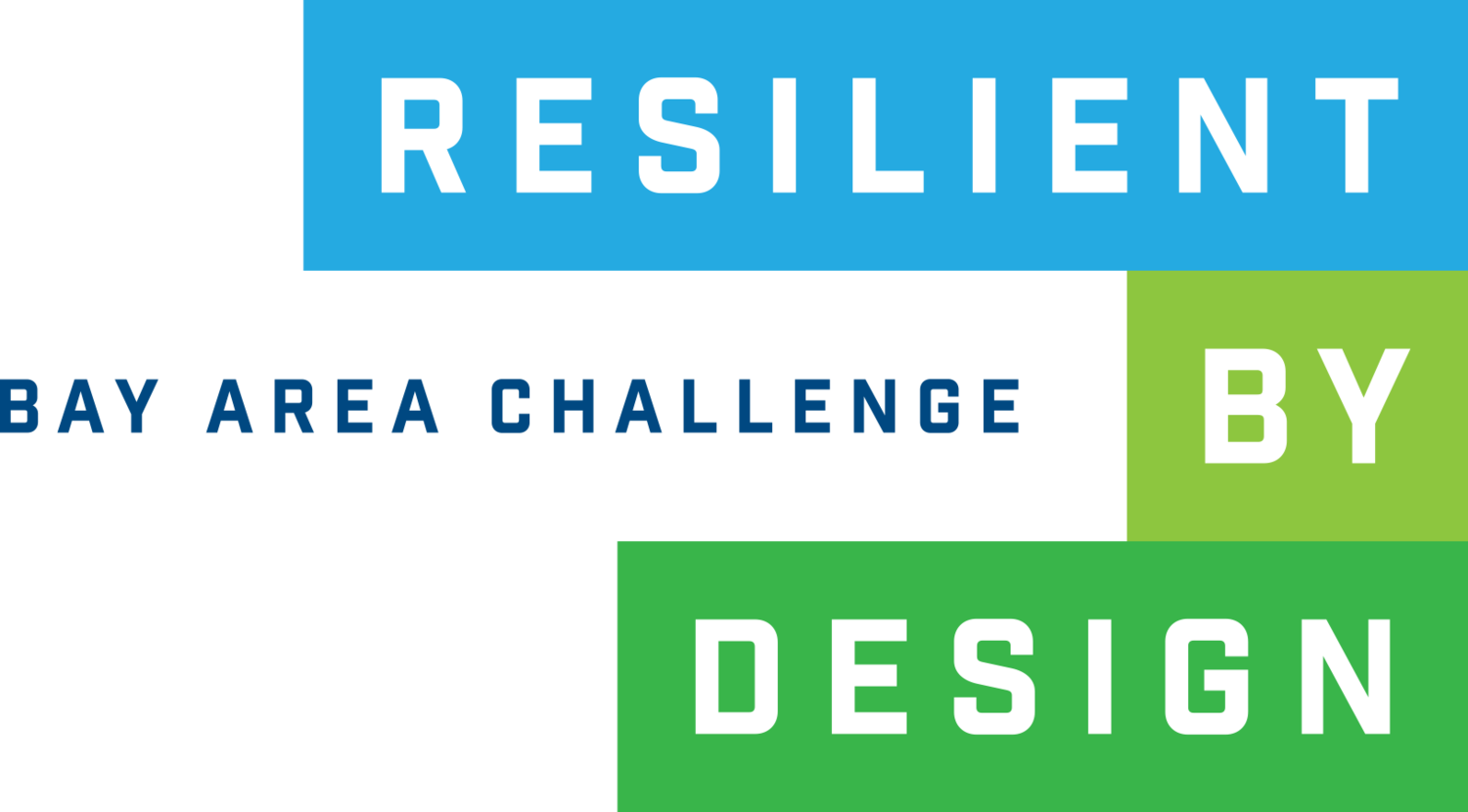
Resilient by Design
2016 - $15,000 General Support
The Bay Area Resilient by Design Challenge (Bay Area Challenge) is an exciting opportunity in which international, multidisciplinary experts will unite with government agencies, elected officials, community leaders, philanthropists, and other Bay Area stakeholders to create inspired and practical solutions to the challenges posed by sea level rise. The Bay Area Challenge is modeled on the highly successful “Rebuild by Design” competition, which took place in the New York-New Jersey-Connecticut region following Hurricane Sandy. Volunteer advisors will support ten interdisciplinary design teams during an initial research period as they build their understanding of regional conditions in the Bay Area. Each design team will then work closely with local and regional leaders, government agencies, and other key specialist and stakeholders to develop implementable designs that have the requisite local ownership and buy-in to transition into actual projects.
The Bay Area faces significant threats, including earthquakes, sea level rise and coastal flooding. By bringing together government, key community stakeholders, and world-class design and engineering experts, the Bay Area Challenge will address resiliency challenges that affect key neighborhoods, local environment and critical infrastructure in the rapidly changing Bay Area. Some of the areas most vulnerable to sea level rise include the vital businesses developing in and around the Port of San Francisco seawall and Mission Bay, together with burgeoning South Bay technology companies. Areas also include underserved communities in East Palo Alto, Richmond and San Francisco, placing critical low-income housing and small businesses at risk. All of these areas contain assets that are vital to the social fabric and economic vitality of the region.
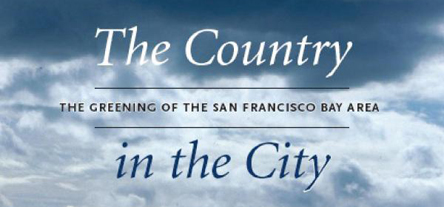 Richard A. Walker 2008 FellowRichard A. Walker is professor of geography and chair of the California Studies Center at the University of California, Berkeley. His research is focused on economic geography, regional development; capitalism and politics; cities and urbanism; resources and environment; California; class and race.
He recently published a book on the history of California’s agricultural system, The Conquest of Bread: 150 Years of Agribusiness in California, which tells the story of how capitalism developed the California countryside into the leading agrarian production complex in the United States. Professor Walker's most recent book concerns the creation of the San Francisco Bay Area greenbelt and the local environmental movement - The Country in the City: The Greening of the San Francisco Bay Area (University of Washington Press, 2007) narrates the many stories of land preservation, saving the bay, and fighting toxics that have made him a global bastion of environmentalism. His next book, tentatively titled City at Bay: The Making of the San Francisco-Oakland Metropolis, will recount the making of urban landscape of the Bay Area.
geography.berkeley.edu/richard-walker
Richard A. Walker 2008 FellowRichard A. Walker is professor of geography and chair of the California Studies Center at the University of California, Berkeley. His research is focused on economic geography, regional development; capitalism and politics; cities and urbanism; resources and environment; California; class and race.
He recently published a book on the history of California’s agricultural system, The Conquest of Bread: 150 Years of Agribusiness in California, which tells the story of how capitalism developed the California countryside into the leading agrarian production complex in the United States. Professor Walker's most recent book concerns the creation of the San Francisco Bay Area greenbelt and the local environmental movement - The Country in the City: The Greening of the San Francisco Bay Area (University of Washington Press, 2007) narrates the many stories of land preservation, saving the bay, and fighting toxics that have made him a global bastion of environmentalism. His next book, tentatively titled City at Bay: The Making of the San Francisco-Oakland Metropolis, will recount the making of urban landscape of the Bay Area.
geography.berkeley.edu/richard-walker
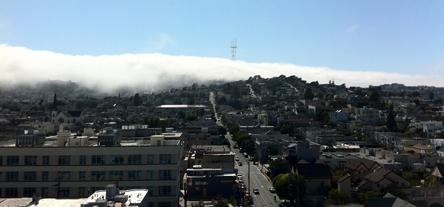 Sam Green
2008 Fellow
A renowned documentary film maker, Sam Green points his camera at a broad range of subjects-from a legendary rainbow-wig sign holder, to a intensive overview of the radical protest group “Weather Underground”. The Seed Fund supported his film project, Fog City, which used a hotline and local call-ins to find and record breathtaking moments of fog in the bay area. Co-directed by Andy Black, Fog Cityhas been shown at SFMoMA and other local venues. Sam Green currently teaches film and video at San Francisco Art Institute.
samgreen.to
Sam Green
2008 Fellow
A renowned documentary film maker, Sam Green points his camera at a broad range of subjects-from a legendary rainbow-wig sign holder, to a intensive overview of the radical protest group “Weather Underground”. The Seed Fund supported his film project, Fog City, which used a hotline and local call-ins to find and record breathtaking moments of fog in the bay area. Co-directed by Andy Black, Fog Cityhas been shown at SFMoMA and other local venues. Sam Green currently teaches film and video at San Francisco Art Institute.
samgreen.to
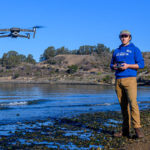

San Francisco Baykeeper
2022 - $15.000 Rewilding Coasts
2019 - $15,000 Coastal Resiliency
2018 - $15,000 Sediment Removal Prevention
San Francisco Baykeeper is the only organization that regularly patrols the Bay for polluters, by both sea and air, and uses environmental laws and the latest science to hold them accountable.
Baykeeper is a fierce champion for the Bay, monitoring the biggest threats to the Bay’s health. This can include municipal sewage outfalls, as well as government agencies and industrial operations that are out of compliance with the anti-pollution laws that keep the Bay and Bay Area communities healthy. In many cases, the polluters can be convinced to fix what isn’t working, but Baykeeper's team of scientists and attorneys is always ready to fight for the Bay in court.
The organization was founded in 1989, and got off to a start worthy of Barbary Coast legend. A tipster called the Baykeeper hotline—which still takes calls to this day—and alerted Baykeeper about a renegade shipyard that was illegally scooping tons of toxic mud off the Bay floor and dumping it onshore. Patrolling by kayak in the dark of night, Baykeeper caught the culprits red-handed—and in the end the Bay won: The company paid stiff fines, and its officers went to jail.
Baykeeper's recent wins for the Bay Area include securing a ban on the handling and storage of toxic coal in Richmond, which will keep more than 1 million tons of toxic coal out of the East Bay community every year. Also, Baykeeper took legal action against the US Coast Guard that secured changes in how the Coast Guard cleans its buoys, which will keep toxic heavy metals out of the Bay—and out of all the waters where the Coast Guard operates.
Baykeeper defeated the Trump administration in 2020 when a federal judge ruled in the organization's favor in Baykeeper vs EPA to protect 1,400 acres of potential wetlands, which would also buffer South Bay communities from the destructive effects of sea level rise.
Baykeeper recognizes climate change as the greatest threat facing the San Francisco Bay today, along with consequent sea level rise. The Bay Area has a dense waterfront population, with people living next door to over 1,000 toxic industrial sites along its shore. This includes Superfund sites in Hunters Point, Alameda, Oakland, Richmond, and San Jose. These toxic sites pose eminent danger to Bay Area residents.
There is a very real possibility that during a storm, the already elevated waters of the Bay would flood toxic sites, flushing pollutants into the surrounding neighborhoods. Bay Area homes, schools, and businesses would be flooded with poison. Critical infrastructure would be under water too, including SFO and Oakland Airport, roads and freeways throughout the Bay Area, wastewater treatment facilities, and more.
The Bay Area needs to institute a region-wide climate adaptation plan with teeth and a timeline—a plan that also identifies and prioritizes contaminated shoreline areas and industrial sites for cleanup.
Baykeeper's scientists and attorneys are there to help bring that plan together, and to keep an active eye out for polluters. Bayeeper fills a singular role in protecting the San Francisco Bay, the geographic feature that makes the Bay Area unique in the world. The wave that breaks against the shoreline in Tiburon is made of the same water that nourishes the wetlands of Redwood City.
In order to make the Bay more resilient to climate-driven sea level rise, which could devastate San Francisco Bay shorelines and communities, the layers of sand and mud on the Bay's floor need to stay healthy. When healthy, this sediment replenishes shorelines and wetlands, providing natural protection against rising tides. But private companies, as well as federal and state agencies, have mismanaged and exploited this resource. Baykeeper, with support from the Seed Fund, uses environmental law and science to advocate for safer, state-of-the-art dredging practices, and won a landmark legal victory when the California Court of Appeal ruled that state agencies may not consider sand mining and other mining in waterways to be in the public good.
San Francisco Bay is uniquely vulnerable to the ravages of climate change. There are well over 1,000 toxic sites along the Bay, active or no longer in use, that could flood the Bay and adjoining neighborhoods with industrial poisons if the sea level rises—as science predicts it will. With support from the Seed Fund, Baykeeper investigates potentially polluting sites along the Bay that should be prioritized for cleanup, protects wetlands and potential wetlands from development—including prevailing against the Trump administration in Baykeeper vs EPA, which saved South Bay salt ponds from being paved over—and educates decisionmakers about the critical need for regional planning to guard against the effects of climate-driven sea level rise.
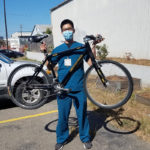
San Francisco Bicycle Coalition Education Fund
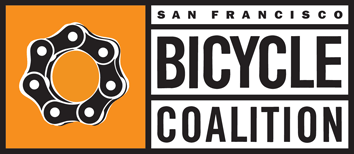
San Francisco Bicycle Coalition Education Fund
2019 - $10,000 General Support
2017 - $10,000 Transportation Equity Network
2013 - $5,000 "Kit of Parts" Manual
2012 - $25,000 2nd Street Project
2011 - $10,000 Family Biking Guide and Programs
2010 - $10,000 Connecting the City
2009 - $5,000 Great Streets Program
The San Francisco Bicycle Coalition is one of the oldest bicycle advocacy organizations in the country and was founded in 1971 by a group of activists representing a coalition of environmental and neighborhood groups. The organization quickly evolved into a powerful alliance of individuals working for a more bicycle-friendly city. The SF Bicycle Coalition has been dominated by a grassroots volunteer ethic ever since, growing into one of the strongest bicycle advocacy organizations in the country. For over 45 years, the San Francisco Bicycle Coalition has been transforming San Francisco streets and neighborhoods by promoting the bicycle for everyday transportation. Through their day-to-day advocacy, education and working partnerships with city and community agencies, the organization continues to create safe, just, and livable streets for all San Franciscans.
The San Francisco Bicycle Coalition embodies their core principles: transportation justice, sustainability, people power, and joy in all areas of their work. In their 2018-2022 strategic plan, the SF Francisco Bicycle Coalition incorporated these values to construct and execute a plan that prioritizes quality bicycle infrastructure and increases safety and invites more people to bike. In an effort to adapt to a world that’s changing the way it gets around, the San Francisco Bicycle Coalition aims to transform the streets of San Francisco through:
To fulfill these objectives, the SF Bicycle Coalition employs both their programmatic and advocacy related work to promote, educate, and reimagine transportation in San Francisco. Nationwide, transportation remains to be the second biggest expense in a household’s budget, and families in San Francisco feel that cost acutely. The San Francisco Bicycle Coalition strives to provide affordable transit options to those in need and promote the bicycle for everyday transportation.
Through the Bike It Forward program, the SF Bicycle Coalition works alongside community groups around the City to organize events structured to provide bikes to neighborhood residents. The organization reclaims unclaimed and abandoned bikes from the SFMTA, BART, and other agencies that are repaired with the help of volunteers. Alternatively, the Bike Match program connects people who have bikes they no longer use with those who need a bike. As a cooperative, community-driven collaborative, neighborhood residents who have expressed a need through partner organizations, complete a bicycle education course, get properly fitted for their new bike, and leave with a new, affordable, fun and healthy way to get around.
The San Francisco Bicycle Coalition is considered the leading resource for street safety and education in the city. The organization structures its curriculum to cater toward people who bike and those who share the streets with people who bike. Whether a course is dedicated to youth and family biking, navigating safely through San Francisco, learning how to share the streets with all forms of transit, riding at night and in all weather conditions, or just getting acquainted with the basics, the San Francisco Bicycle Coalition is proud to offer free online resources and classes that accommodate all age ranges, levels of comfortability, and experience.
Through their advocacy work, the SF Bicycle Coalition continues to push for more car-free spaces, slow streets, and safe, high-quality biking infrastructure. To keep expanding the number of Slow Streets, the San Francisco Bicycle Coalition continues to push the City to explore more permanent treatments and prioritize the densest San Francisco neighborhoods, including the Tenderloin and SoMa. In 2020, advocacy for better bike infrastructure pushed forward and construction continued on Lefty O’Doul Bridge, 7th Street from Folsom to Townsend, Howard Street from 3rd to Embarcadero, new protected bike lane segments on the Embarcadero, and improvements to 20th Avenue in the Outer Sunset.
During the pandemic, the organization has seen six times more people biking in Golden Gate Park. Now, after decades of advocacy, San Franciscans can enjoy a fully car-free route from the Panhandle to Ocean Beach; take a car-free ride through the Panhandle, to the eastern segment of JFK Drive, through Overlook and Middle Drive, and onto the car-free western segment of MLK Drive. While more people are looking to spend more time outdoors amidst the lifting of shelter-in-place orders, the Slow Streets program has also expanded car-free space across San Francisco to help people stay healthy and safe. Thanks to this program, people can maintain social distance as they walk, bike, and roll on over 30 corridors that are closed to vehicle through traffic.
The Seed Fund have been supporters of the San Francisco Bicycle Coalition for over a decade and have partnered with the organization to fund certain campaigns centered around transportation justice, sustainability, people power, and joy. Some of these projects include:
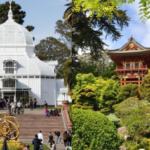
San Francisco Botanical Garden
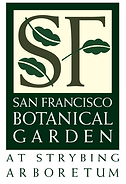
San Francisco Botanical Garden
2007 - $5,000 Center for Sustainable Gardening
Located in San Francisco’s Golden Gate Park the Botanical Garden inspires visitors with an extraordinary diversity of plants from Mediterranean climates around the world. Included in the Garden’s collection are over 7500 varieties of rare and unusual plants that can be successfully grown in the San Francisco Bay Area.
The Center for Sustainable Gardening (CSG) at San Francisco Botanical Garden replaced the old, rundown, temporary nursery facilities that were built in the 1960s in the coldest part of the Garden. A new highly-efficient building enabled both the Recreation and Park Department and Botanical Garden Society staff and volunteers to maintain and expand plant propagation and growing activities in a safe and improved work environment.
The CSG includes a Headhouse (4,230 square feet of working space, staff meeting area, and restrooms for staff and the public), a Greenhouse, a Shadehouse, and an outdoor publicly accessible Learning Court. Key elements of the project include the Living Roof on the Headhouse, showcasing California native plants; photovoltaic panels for on-site energy generation; and an on-site storm water management system that captures storm water as well as condensed fog from the Greenhouse and Shadehouse roofs.

San Francisco Children in Nature Forum
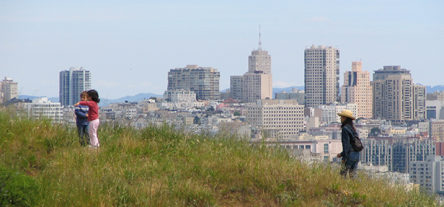 San Francisco Children in Nature Forum
2012 - $5,500 General Support
The San Francisco Children in Nature (SFCiN) Forum brings together educators, program directors, recreation and parks staff, health care and urban planning professionals towards the end of ensuring that all San Franciscan childhoods flourish with access to quality outdoor experience. The mission is to inspire city agencies, schools and communities to nurture, empower, and engage children, youth and families in their relationships with urban nature in San Francisco.
Participating programs and agencies include: the YMCA of San Francisco, San Francisco Unified School District, San Francisco Recreation and Parks, the Presidio Trust, the Golden Gate National Parks Conservancy, National Park Service, Literacy for Environmental Justice, Kids in Parks, the Randall Museum, preschools and child development centers.
San Francisco Children in Nature Forum
2012 - $5,500 General Support
The San Francisco Children in Nature (SFCiN) Forum brings together educators, program directors, recreation and parks staff, health care and urban planning professionals towards the end of ensuring that all San Franciscan childhoods flourish with access to quality outdoor experience. The mission is to inspire city agencies, schools and communities to nurture, empower, and engage children, youth and families in their relationships with urban nature in San Francisco.
Participating programs and agencies include: the YMCA of San Francisco, San Francisco Unified School District, San Francisco Recreation and Parks, the Presidio Trust, the Golden Gate National Parks Conservancy, National Park Service, Literacy for Environmental Justice, Kids in Parks, the Randall Museum, preschools and child development centers.
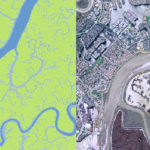
San Francisco Estuary Institute

San Francisco Estuary Institute
2021 - $15,000 Urban Nature Lab Website
2019 - $10,000 Operational Landscape Units Project (with SPUR)
2018 - $10,000 General Support
2018 - $10,000 Biodiversity Integration into the SPUR Regional Plan
2017 - $10,000 Catalyzing Urban Biodiversity Book Project by Robin Grossinger
2017 - $10,000 Operational Landscape Units Project (with SPUR)
2017 - $10,000 Framework for Sea-Level Rise Adaptation
2016 - $15,000 Framework for Sea-Level Rise Adaptation
2014 - $10,000 Center for Resilient Landscapes
The San Francisco Estuary Institute (SFEI) delivers visionary science that empowers people to revitalize nature in their communities. Created by the region for the region, we are a unique local science think-tank supporting diverse organizations to improve the environmental health of the Bay Area and beyond. We provide independent science on water quality, urban sustainability, and ecological resilience to public agencies, NGOs, communities, and business leaders. These organizations collaborate with our team of 70 dedicated scientists and technologists for the innovative solutions needed to make our region, and the people who live here, healthy and resilient.
For more than a quarter century, SFEI has served as a trusted science advisor to local and state agencies charged with implementing natural resource mandates. Our pioneering historical ecology research has established an ecological foundation for large landscape restoration efforts in watersheds throughout California, prompting paradigm shifts in management. In the Bay, SFEI staff have provided science leadership to the California Coastal Conservancy’s 2015 Baylands Goals—a blueprint to accelerate the restoration of tidal marsh in San Francisco Bay toward a goal of 100,000 acres. In the Sacramento-San Joaquin Delta, our landmark studies have supported a partnership between state agencies and major water users by creating science-based options and a vision to restore up to 30,000 acres of Delta wetlands habitat. In cities, our Urban Nature Lab uses the quantitative science of nature in cities to help advance innovative, ecologically based urban planning and design.
SFEI develops nature-based solutions to improve conditions across the landscape -- along shorelines, in cities, and in rural areas. We use science-based planning to create multi-benefit approaches to improve ecosystem functions for people, like reducing flooding and sequestering carbon, and for nature, like creating habitat for native wildlife. These interventions are cost-effective, resilient, and can be implemented across the land-use spectrum from high in watersheds, through the valleys that hold our cities and agriculture, down to the edge of the Bay and Delta, with the intention of ensuring equitable outcomes for all communities. Our approach takes advantage of natural processes by restoring wetlands, floodplains, and riparian areas; creating high-performance networks of nature throughout; realigning creeks to reduce flooding and improve sediment delivery to protect the shoreline; and managing landscapes to sequester carbon rather than emitting greenhouse gases.
Our vision of the Bay Area, as a model for other urbanized regions facing similar challenges, encompasses:
For more information about SFEI and the Resilient Landscapes Program, please see our Strategic Plan.
Our novel research on cities, published in The Biological Deserts Fallacy (BioScience 2021), identifies the different pathways by which cities can benefit regional ecosystems
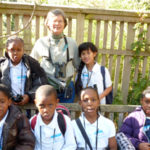
San Francisco Nature Education
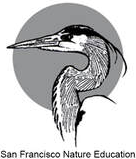
San Francisco Nature Education
2011 - $5,000 General Support
San Francisco Nature Education (SFNE) is now in its eleventh year of providing meaningful environmental education to students from under served schools. SFNE’s school program is focused on k-3rd grade students throughout schools in San Francisco and introduces students at a very young age to basic concepts: respect for nature, conservation and stewardship.
SFNE’s trained volunteer naturalists visit classrooms and conduct field trips to local parks and also provided much needed mentoring to students in small groups. SFNE prides itself on maintaining a ratio of one to six students in the classroom and field. SFNE received the Jefferson Award for Public Service in 2005 and its’ director was nominated for the 2011 Terwilliger Environmental Award.
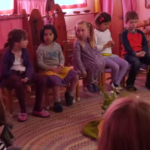
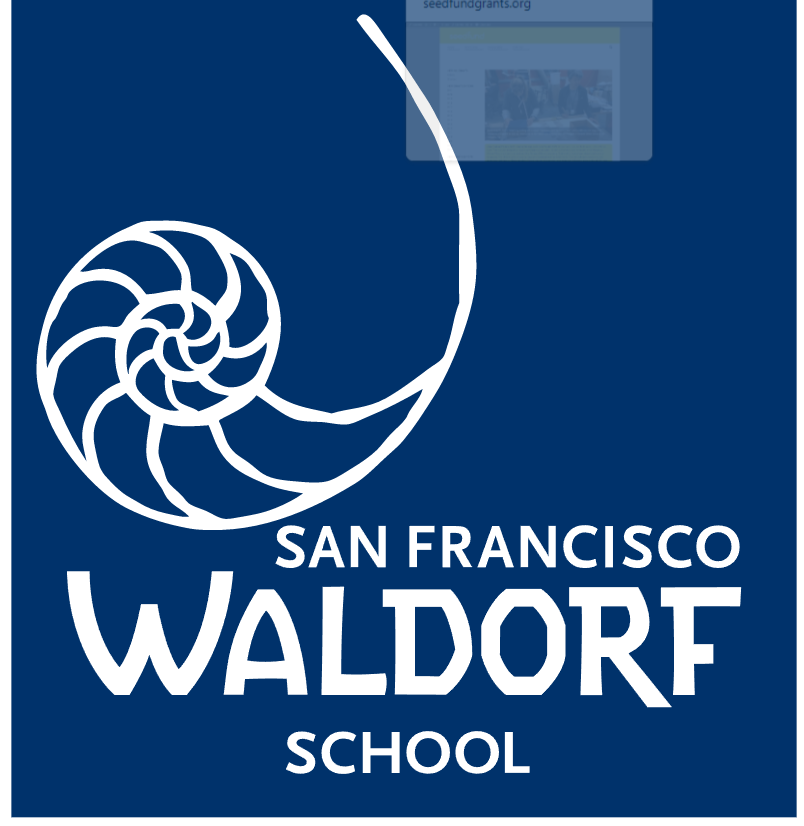
San Francisco Waldorf School
2018 - $34,000 Outdoor Classroom
2016 - $33,000 Outdoor Classroom
2015 - $5,000 Outdoor Classroom
2014 - $7,500 Outdoor Classroom
2013 - $10,000 Outdoor Classroom
2009 - $10,000 Biodynamic Garden Program
2008 - $6,000 Biodynamic Garden Program
2007 - $10,000 High School Capital Campaign
San Francisco Waldorf School is an independent, co-educational, non-sectarian school providing education from Kindergarten through Grade 12. SFWS was founded in 1979 as an independent school within the rich Waldorf tradition whose mission is to educate students using an approach that fosters independent thought and a sense of personal responsibility. The Waldorf curriculum, designed by Austrian philosopher and scientist Rudolf Steiner in 1919, is based on a thorough study of child development, so that the subjects taught meet not only the cognitive developmental needs of the students, but also their physical, emotional, and spiritual needs. There are over a thousand Waldorf schools around the world, each operating independently, but held together by a common understanding of human development and a recognition of the value of artistic work and meaningful social interaction.High School capital campaign
San Francisco Waldorf High School’s campus opened in September 2007. As the first school in San Francisco to be awarded the coveted LEED Gold certification, the overall goal of the project was to create an environment that is in harmony with the philosophy of Waldorf Education. Perhaps the greatest reflection of this success is the fact that the building itself will be incorporated into the curriculum as an educational resource for environmental studies. The principals of the Waldorf philosophy and the actual building serve as a teaching tool for students, demonstrating how to become actively involved in today’s social issues.Biodynamic Garden
The Waldorf School Biodynamic Garden was created to grow children's love for the earth, for meaningful labor, and for themselves and their community through infinitely fascinating work as farmers. Located at the Little Sisters of the Poor’s St. Anne’s home, the garden acts as a teaching tool, a healthy food source for the lunchroom and a social hub for the children as well as the residents of St. Anne’s. The participating students, kindergarten through third grade, are toured through the garden to taste what is in season and observe the garden’s changes before splitting up to participate in the upkeep of the garden. With tasks like planting apple trees, building compost and harvesting crops, every child is engaged with the garden directly, discovering the benefits of farming for themselves.Nature Program\The Waldorf School Nature Program creates an overarching program that serves as a model for other urban schools who aspire to “bring nature alive” for students, faculty and the entire community. The program brings younger children out into nature and older students the opportunity to learn more about regional biodiversity. This program will offer an ongoing educational series to facilitate community understanding and support. This series brings a wide variety of speakers to address topics that enhance understanding of environmental education, brought via lectures, workshops and events. The program's goal is to create awareness of issues and initiatives that are relevant in the San Francisco Bay Area.
 Sandor Katz
2011 Fellow
Sandor Katz is the author of The Revolution Will Not be Microwaved: Inside America's Underground Food Movements (Chelsea Green Publishing, 2006) This book is about food activism and people trying to make better choices – people wanting to create better food alternatives for themselves and the people in the communities around them.Katz urges people to challenge their roles as unquestioning consumers of the American food industry. His message is to use everyday ingredients to be a producer and not just consumer of food – and not just ordinary food – but some of the most vibrantly flavorful and health giving foods imaginable. His critique of mega production and celebration of the alternatives empowers people to feel like they can make and cultivate their own food – whatever their circumstances. His long held belief in community gardens, community supported agriculture and community kitchens has inspired many and been an integral part in the underground food movement.
Katz is also the author of The Art of Fermentation: An In-depth Exploration of Essential Concepts and Processes from Around the World (Chelsea Green Publishing, 2012) and Wild Fermentation: The Flavor, Nutrition, and Craft of Live-Culture Foods (Chelsea Green Publishing, 2003). He travels widely teaching people simple fermentation techniques and demystify home fermentation. He has taught hundreds of hands-on fermentation workshops around the US and Australia.
wildfermentation.com
Sandor Katz
2011 Fellow
Sandor Katz is the author of The Revolution Will Not be Microwaved: Inside America's Underground Food Movements (Chelsea Green Publishing, 2006) This book is about food activism and people trying to make better choices – people wanting to create better food alternatives for themselves and the people in the communities around them.Katz urges people to challenge their roles as unquestioning consumers of the American food industry. His message is to use everyday ingredients to be a producer and not just consumer of food – and not just ordinary food – but some of the most vibrantly flavorful and health giving foods imaginable. His critique of mega production and celebration of the alternatives empowers people to feel like they can make and cultivate their own food – whatever their circumstances. His long held belief in community gardens, community supported agriculture and community kitchens has inspired many and been an integral part in the underground food movement.
Katz is also the author of The Art of Fermentation: An In-depth Exploration of Essential Concepts and Processes from Around the World (Chelsea Green Publishing, 2012) and Wild Fermentation: The Flavor, Nutrition, and Craft of Live-Culture Foods (Chelsea Green Publishing, 2003). He travels widely teaching people simple fermentation techniques and demystify home fermentation. He has taught hundreds of hands-on fermentation workshops around the US and Australia.
wildfermentation.com
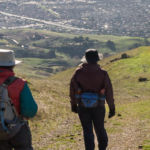
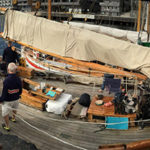
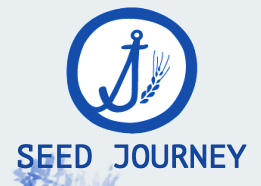
Seed Journey
2017 - $10,000 General Support
2016 - $10,000 General Support
“We can speak of this voyage as return or a re-tracing of a very ancient route combining human and non-human initiative by which wheat was domesticated from the wild and then slowly made its way through gifts, trade, winds, and sea currents, from the highly cultured Middle East to the barbarians of the north...” - Michael Taussig
Seed Journey (2017 - 2020) was a seafaring voyage from Oslo, Norway to Istanbul, Turkey upon an 1895 rescue sailboat. Carrying hand fulls of seeds and a rotating crew of artists, farmers, bakers and researchers, Seed Journey was a process of reverse migration, retracing the path of seed dissemination, and by extension human migration, back to their origins in ancient times. At each port, Futurefarmers gathered local heritage seed custodians, enacted Seed Ceremonies (elaborated seed exchanges) and accepted gifts and grains to add to a growing archive. The project situates grains as emancipatory actors with respect to intellectual property rights pertaining to biological matter.
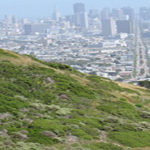

SF Environment
2014 - $10,000 Biodiversity Program
2013 - $10,000 Biodiversity Program
Under the San Francisco Department of the Environment, a Biodiversity Program, led by biodiversity coordinator Peter Brastow, creates programs, plans and strategies for the management and stewardship of San Francisco wildlands, biodiversity and public biodiversity education.
The Biodiversity Program will create a Strategic Biodiversity Action Plan, with a blueprint for the program and San Francisco. It will also create the infrastructure to act as the hub for biodiversity planning, policy-making, coordination and education city-wide.
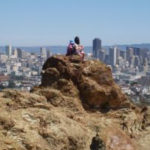
SF Nature Mapping Project
2014 - $5,000 General Support
The Children in Nature Map will be the first interactive map of the SF Nature Mapping Project and the first map tailored to families who want to find places to play in San Francisco’s nature. The map is being created in partnership with the San Francisco Children in Nature Forum and GreenInfo Network.
The SF Nature Mapping Project seeks to connect people to nearby urban nature through online interactive maps. As people move into cities many assume that this means less time that they can spend in nature, but this project challenges that myth by showing clearly where we can access nature in San Francisco.
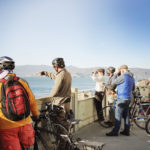

Shaping San Francisco
2019 - $10,000 General Support
2018 - $5,000 General Support
2017 - $5,000 General Support
2016 - $5,000 General Support
2013 - $5,000 General Support
2012 - $5,000 General Support
2010 - $5,000 Ecology Emerges Project Documentation
Serving the City for 25 years, Shaping San Francisco is an ongoing multimedia project in bottom-up history, offering an online archive at FoundSF.org—a place to document, discover, and shape San Francisco history—and public programming sharing the stories of daily life in the City by the Bay. Shaping San Francisco provides access to the City's lost history, with a long-term goal of facilitating its discovery, presentation, and preservation. The project seeks to create a physical and virtual commons where together we make—and understand our place within—history every day
Shaping San Francisco believes that “History is a Creative Act in the Present,” or in other words, each person is an agent of history, and every moment is historical, even if relatively little makes it on to the “historical record.” Shaping San Francisco’s public engagement promotes the idea that history can—and should—be de-professionalized, made into a popular, participatory process. More than just a website, more than just a lecture series, more than a collection of ongoing walking and bike tours, Shaping San Francisco encourages collective investigation of and creation of new shared social histories about the world we cohabitate together.
Shaping San Francisco's work encourages ordinary citizens to see the urban environment around them having been created in by a combination of social and ecological processes over time, within historic economic and cultural contexts; just as important the urban environment is shaped, too, by a ceaseless effort to challenge the meaning and direction of those processes and contexts. Shaping San Francisco has focused from its origins on San Francisco's ecological history, the relentless leveling of its famous hills and the steady filling of the bay to “make land,” which permanently altered the surrounding bay. Shaping San Francisco’s historical investigations of the changing ecology of the City have led to unique and enduring analyses integrating its tradition of dissent with the dramatic (and often catastrophic) changes that dissenters often sought to prevent.
15 seasons of FREE Public Talks provide an informative, engaging cultural forum inviting presenters and audiences to dialogue about issues covering Art & Politics, Historical and Literary Perspectives, Social Movements, and Ecology, emphasizing the intersections of multiple themes across fluid boundaries of disciplines and paradigms. This in-person discussion space is meant as an antidote to historical amnesia, creating a place to change the climate of public intellectualism in San Francisco, and an unmediated place to meet and talk. Most all of the Public Talks are archived online. Historical walking and bicycle tours—and the recent addition of Urban Forums: Walk & Talks and Bay Cruises—bring people together to learn how the City is shaped through the efforts of engaged citizens and from a perspective rooted in its overlooked and forgotten histories, including those of marginalized populations (and species!) who don’t show up in the history books.
Shaping San Francisco fosters academic and community partnerships, incorporating a service learning element to its public programming, offering historic context for the issues currently faced in the urban setting through tours to students and community members. As seasoned tour guides, editors, and educators, the directors are frequently asked to share their expertise through custom tours and classes; they create customized tours each month as well as collaborative projects year-round including teaching, guest-curating, and co-producing projects. Shaping San Francisco is a fiscally-sponsored affiliate of Independent Arts & Media, with whom successful collaborations have been forged over the course of a decade.
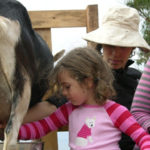
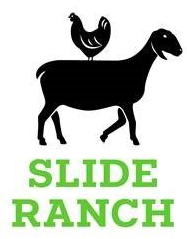
Slide Ranch
2011 - $10,000 Slide Outside Project
2007 - $10,000 General Support
Slide Ranch has provided experiential education with environmental and sustainable agriculture curricula since 1970. Slide Ranch staff operate the farm using a turn of the century farmhouse, old creamery and several outbuildings situated along a scenic coastal bluff. Annually over 8,000 Bay Area residents, many of them children, participate in three primary Slide Ranch programs: Family Programs, Group Programs and Summer Day Camp. Slide Ranch Programs bring learning to life with hands-on education activities on a working farm. More than 170,000 visitors have participated in programs and events at this spectacular coastal site perched above the Pacific Ocean in western Marin County. Slide Ranch inspires visitors to discover the connections between the food we eat and the soil that nourishes the plants and animals. The outdoor classroom ignites ongoing learning and provides a place to reflect on the impact that individual and collective choices have on the environment, food and health.
The Slide Outside Project provides a package of on and off-site services to a targeted set of partners that help low-income students, families and educators access a broader spectrum of services and integrate lessons learned at Slide Ranch into their everyday lives. The program includes a combination of outreach and collaboration, day and overnight programs based at Slide Ranch, Slide Ranch staff visits to program sites, family engagement strategies, and teacher training.
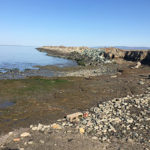
The gravel beach would help provide nature-based protection at Eden Landing. Photo by Dave Halsing
Scouting gravel beach and berm pilot location at Eden Landing. Photo by Dave Halsing
Gravel Beach and Berm Location. Photo credit: Cris Benton
Eden Landing Kayak Launch – under construction. Cris Benton.
Completed viewing platform at historical site of Alvarado Salt Works. Photo: Cris Benton.

South Bay Salt Ponds
2019 - $15,000 Wetlands Restoration
The South Bay Salt Pond Restoration Project encompasses 15,100 acres of former salt ponds around the edge of South San Francisco Bay. It is the largest wetlands restoration project on the West Coast of the United States. The Project began in 2003, when the properties were acquired from Cargill Inc. Funds for the acquisition were provided by federal and state agencies and several private foundations. Those ponds are now part of the California Department of Fish and Wildlife’s (CDFW) Eden Landing Ecological Reserve near Hayward, and the U.S. Fish and Wildlife Service’s (USFWS) Don Edwards San Francisco Bay National Wildlife Refuge at the Bay’s south end. A third agency, the State Coastal Conservancy, plans and administers the Project.
This acquisition was the initial step in a larger campaign to restore 40,000 acres of lost tidal wetlands to San Francisco Bay – important because about 85% of its historic wetland have been lost to fill or alteration. The 50-year Project will be conducted in multiple phases at the Eden Landing, Ravenswood, and Alviso pond complexes.
The Project has three main goals:
The Project is providing critical new habitat for fish, birds and other wildlife, transforming a landscape the size of Manhattan into a thriving wetland ecosystem. The two main types of habitat restoration are:
Tidal marsh - Salt marsh, mud flats and sloughs provide shelter for endangered wildlife such as the salt marsh harvest mouse and Ridgway’s rail; rich feeding grounds for shorebirds; and nursery areas for young.
Tidal marshes are important for human communities too, as they absorb waves and high tides from storms and rising sea levels, protection the infrastructure behind them.
Enhanced managed ponds - The Bay Area serves as a critical stop along the Pacific Flyway for migratory birds, and many bird species became dependent on ponds in SF Bay during the 150 years in which salt has been made here. Enhancing and managing former salt ponds carefully provides appropriate feeding, resting and nesting habitats for shorebirds and waterfowl, both resident and migratory, including the threatened western snowy plover.
The Project adds recreational opportunities along the Bay’s shoreline for millions of people. Our wildlife-compatible public access features include these:
The Restoration Project keeps a careful eye to the risks of flooding from tides, storms, and sea level rise.
With the completion of Phase 1 in April 2016, the Project has
The Phase 2 actions are underway at two of the five planned locations, with others ramping up for construction in 2021. In all, the Phase 2 actions will address another 4,000 acres of habitat restoration, 5 miles of trails, and partnered with up to three external agencies to integrate their flood management needs into the work.
The Phase 2 actions being planned for the Eden Landing Ecological Reserve in Alameda County, include over 2,200 acres of 11 former salt ponds. A mix of fully tidal and muted tidal marsh restoration and managed pond enhancements will be linked to several improved levees and 3 miles of new Bay Trail.
This planned work also includes an innovative pilot project for a Gravel Beach and Berm feature that would be built on the outer, bay-facing side of the Project’s edge. This feature would simultaneously provide roosting and foraging habitat for a mix of shorebirds and protect the existing levee from erosion. This is nature-based shoreline management in action. If the 300-foot pilot project is successful, a 2-mile long version of it would be installed there, returning a large stretch of shoreline to a habitat type that has been lost.
With funding from several sources, including the Seed Fund, this novel feature is midway through its design and environmental permitting phase and could enter into construction late in 2022.
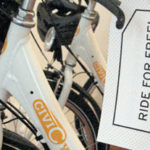

Southern Exposure
2015 - $10,000 General Support
2008 - $10,000 Vapor Exhibition
Located in San Francisco’s Mission District, Southern Exposure (SOEX) has been presenting a diverse, innovative, contemporary art, arts education, and related programs and events for over 34 years. SOEX reaches out to diverse audiences and serves as a forum and resource center to provide extraordinary support to the Bay Area's arts and educational communities. Activities range from exhibitions of local, regional, and international visual artists’ work, education programs, and lectures, panel discussions, and performances. Southern Exposure is dedicated to giving artists—whether they are exhibiting, curating, teaching, or learning—an opportunity to realize ideas for projects that may not otherwise find support.
The exhibition, Vapor, surveyed art, architecture and design that takes our declining air quality as the subject matter, medium and metaphor for creative work. Often inspired by forms of activism, the works reacted to the sources of climate change through the use of technologies – sensors, databases, and communications equipment – that were only recently accessible outside a lab. In this sense, the show's title also referred to the growing means by which this art is being produced, in addition to the ubiquity of greenhouse gases and other air conditions that serve as this art’s medium. Vapor proposed new ways of modeling, testing and finding solutions to the problems of air quality and greenhouse gas emissions.
Spring Street Climate Fund
2023 - $15,000 Zero emission school buses
Addressing climate change is a central challenge of this moment; the actions taken today will help determine the safety and prosperity of billions of people living today and set a framework for generations to come.
New Yorkers are uniquely positioned to have an outsized impact on climate outcomes around the globe. New York is the world’s 11th largest economy; what happens in New York can build markets, reshape industries and incentivize billions of dollars of investment. As a prominent large state, New York’s actions set a precedent that can scale to other states and the country as a whole.
That’s where Spring Street Climate Fund comes in. Spring Street identifies opportunities to win climate policy in New York that can make a difference globally, and partners with grassroots organizations throughout the state to turn ambitious ideas into public policy. Spring Street acts as a force multiplier in the climate movement, helping supercharge the grassroots organizing that can turn New York into a powerful force for progress.
Since its founding in 2021, Spring Street has helped win progress on bold new policies, including:
As part of its mission to identify opportunities for New York to make an outsized difference on climate policy, Spring Street is also working to make New York the first state in the nation to fully transition away from diesel school buses and to clean, zero-emissions school buses statewide.
Diesel school buses are not only a climate change issue - emitting high levels of greenhouse gasses like carbon dioxide - but also a public health and environmental justice issue: the air in a school bus is up to 12 times as toxic as the ambient air outside the bus. This hurts the children breathing the dirty air on their buses, and hurts environmental justice communities where school bus depots are disproportionately located. The challenge is vast, and the opportunity for New York to use its unique leverage to address the problem is immediate and real.
New York has nearly 50,000 school buses in operation across the state, approximately one out of every ten buses nationwide. By transitioning its entire school bus fleet to zero-emissions vehicles, New York can help to bend the cost curve and make electric school buses cheaper for everyone - changing the economics of zero-emissions buses not only for its own school districts but for states across the country.
In 2022, Spring Street supported the successful grassroots campaign to make New York the first state in the country to require the transition of its entire fleet to zero-emissions buses. In its 2022 state budget, New York became the first state in the country to mandate the transition of its entire fleet to zero-emissions buses. Spring Street then supported a public education campaign to secure $500 million in funding to help school districts around the state make the transition to zero-emissions school buses through the Environmental Bond Act.
But the campaign is not yet complete. Winning a law in Albany is not the same as making the change a reality on the ground. Today, Spring Street Climate Fund is partnering with grassroots organizations in New York State to ensure that policymakers and elected leaders remain accountable to the promises they have made to implement a full transition to a zero-emissions bus fleet.
If the effort is successful, full implementation of New York’s school bus law will reduce direct emissions while also building the nation’s first statewide market for zero-emissions buses, reducing the cost of clean school buses not just in New York but for consumers nationwide.
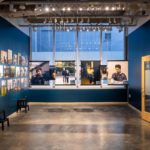
SPUR (formerly San Francisco Planning + Urban Research Association)

SPUR (formerly San Francisco Planning + Urban Research Association)
2023 - $20,000 Transit Oriented Communities
2021 - $15,000 Transit Priority Program
2019 - $10,000 Operational Landscape Units Project
2018 - $20,000 Regional Plan
2017 - $10,000 Operational Landscape Units Project (with SFEI)
2017 - $10,000 Framework for Sea-Level Rise Adaptation
2016 - $15,000 Framework for Sea-Level Rise Adaptation
2014 - $15,000 Fossil Fuel Reduction Report
2010 - 2014 $38,000 Food Systems and Urban Agriculture Program
2007 - $5,000 General Support
Through research, education and advocacy, SPUR works to create an equitable, sustainable and prosperous region. SPUR practices urban policy, developing and advocating for ideas and reforms to bring about systems change. The decisions that shape housing, transportation, land use, economics, food access, sustainability and resilience have significant impacts on people’s lives. SPUR also focuses on governance because it’s how communities organize themselves to achieve collective goals and because SPUR believes in the power of government as a force for good. SPUR works across the nine counties of the Bay Area because the structural systems that shape people’s lives— the housing market, the transportation network, the economy — are regional. SPUR does deep work in San Francisco, San José and Oakland because policies set in the region’s three biggest cities have widespread impact on most Bay Area residents and because local context is critical for effective policy. SPUR believes that community and individual well-being are healthiest when a society achieves equity, sustainability and prosperity. Equity because systemic racism continues to create unjust and unacceptable outcomes for many members of our community. Sustainability because human well-being depends on a healthy and thriving natural environment. And prosperity because meeting individual and collective needs requires resources. SPUR conducts its work through research, education and advocacy because these tools have the power to change minds and shape outcomes. The organization believes that profound systems change requires addressing beliefs, relationships and policies, and SPUR works at all three of these levels. SPUR grounds its work in a spirit of inquiry and a big-tent perspective that engages partners and communities across the region.
SPUR has many key goals related to each of the organization's major policy areas, including:
Planning: Add new jobs and housing where they will support equity and sustainability, and make neighborhoods safe and welcoming to everyone.
Housing: Make housing affordable for everyone.
Transportation: Make it fast, easy and inexpensive to get around without driving alone.
Sustainability + Resilience: Eliminate carbon emissions and make communities resilient to climate change.
Economic Justice: Enable all people to participate in the region’s thriving economy and attain economic security.
Good Government: Support a high-functioning public sector that serves the collective good.
Food + Agriculture: Create healthy, just and sustainable food systems, and put an end to food insecurity.
SPUR has accomplished many things over the course of its 100+ year history. The organization shaped some of the most important planning and urban policy issues in the region, including planning for the BART system, establishing the Golden Gate National Recreation Area and the Bay Conservation and Development Commission, proposing San Francisco’s Affordable Housing Trust Fund and more. Recent achievements of the organization in 2020, include:
Impact Report attached; our most recent annual report was online only--it is available here: https://www.spur.org/about/annual-reports/2020
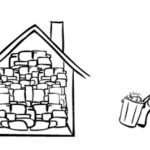
Story of Stuff Project/Annie Leonard
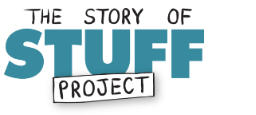
Story of Stuff Project/Annie Leonard
2011 - $3,000 General Support
The Story of Stuff is a twenty minute animation on the way we make, use and throw away consumer goods. With over 15 million views and counting, The Story of Stuff, is one of the most watched environmental-themed online movies of all time.
The Story of Stuff Project was created by Annie Leonard to leverage and extend the film’s impact. It works to amplify public discourse on a series of environmental, social and economic concerns and facilitate the growing Story of Stuff community’s involvement in strategic efforts to build a more sustainable and just world. Their on-line community includes over 150,000 activists and they partner with hundreds of environmental and social justice organizations worldwide to create and distribute their films, curricula and other content. Their latest movie, The Story of Change, has just been released.
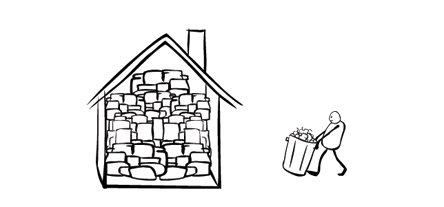
2011 - $3,000 General Support
The Story of Stuff is a twenty minute animation on the way we make, use and throw away consumer goods. With over 15 million views and counting, The Story of Stuff, is one of the most watched environmental-themed online movies of all time.
The Story of Stuff Project was created by Annie Leonard to leverage and extend the film’s impact. It works to amplify public discourse on a series of environmental, social and economic concerns and facilitate the growing Story of Stuff community’s involvement in strategic efforts to build a more sustainable and just world. Their on-line community includes over 150,000 activists and they partner with hundreds of environmental and social justice organizations worldwide to create and distribute their films, curricula and other content. Their latest movie, The Story of Change, has just been released.


Streetsblog
2023 - $12,000 General Support
2021 - $12,000 General Support
2019 - $10,000 General Support
2018 - $8,000 General Support
2017 - $8,000 General Support
2017 - $8,000 General Support
2016 - $8,000 General Support
2011 - $8,000 General Support
Streetsblog is a non-profit daily news source, online community and political mobilizer for the Bay Area’s Livable Streets movement. Streetsblog frames the public debate on transportation and planning issues, creating momentum for more sustainable streets. A team of local writers collaborates with writers throughout California and Nationally to provide full coverage of transportation reform, urban planning and the Livable Streets movement locally and nationwide.
Streetsblog began in 2006 as a single local blog covering transportation and land use issues in New York City. The experiment proved a dramatic success, and it showcased the potential for focused advocacy journalism to empower overlooked constituencies and to usher in a reform-minded transportation policy agenda - SF.Streetsblog was launched in January 2009. The blog quickly became an influential voice and a mobilizer for the local transportation reform movement. Today, it reaches nearly 70,000 direct monthly readers, and plays a key role in the Bay Area’s Livable Streets movement. Their work is published on SF Gate and Bay Citizen. Streetsblog’s drumbeat of pedestrian, bicycle and transit stories have helped keep these important issues on the radar of supervisors and policy makers at City Hall and the San Francisco Municipal Transportation Agency.
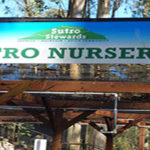
Sutro Stewards
2014 - $5,000 Living Seed-Bank Project
Sutro Stewards brings to life local open space areas, biodiversity, and the benefits that indigenous plant species provide to wildlife. They enable thousands of volunteers to help transform a sixty-one acre open space in the heart of San Francisco into a destination for exploration, recreation and stunning views.
The Sutro Stewards Nursery team is gathering locally genetic plants to place into a "living seed-bank" gardens. This "living seed-bank" provides seeds and cuttings in large quantities, allowing successful field planting projects. This project minimizes habitat loss by reintroducing species to new suitable sites.
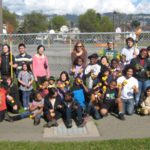
Suzanne Cockrell, California College of the Arts Engage Class
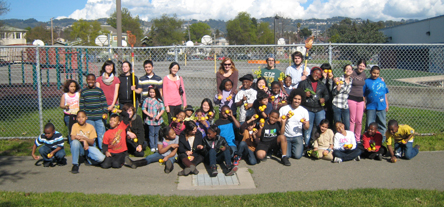 Suzanne Cockrell, Engage Class at California College of the Arts
2011 - $1,125 Garden at Emerson Elemenary School, Oakland
This grant was used to fund the design and building of a small orchard and pollinator garden at Emerson K-5 Public Elementary School located in Oakland’s Temescal District. The orchard and garden are a community project which was part of an undergraduate Community Arts/Diversity Studies course at California College of the Arts (CCA). The CCA students led by artist, Suzanne Cockrell, mentored thirty five 4th graders to plan and implement a garden for the school community. Students germinated seeds for the pollinator garden, learned the botanical parts of a fruit tree and how fruit grows, foraged and tasted fruit from neighborhood trees, and helped sheet mulch and plant the orchard in their schoolyard. The project developed a culture of stewardship for the orchard and through special assemblies, curriculum and harvest celebrations. The students and school families will nurture and care for their orchard over time.
Suzanne Cockrell, Engage Class at California College of the Arts
2011 - $1,125 Garden at Emerson Elemenary School, Oakland
This grant was used to fund the design and building of a small orchard and pollinator garden at Emerson K-5 Public Elementary School located in Oakland’s Temescal District. The orchard and garden are a community project which was part of an undergraduate Community Arts/Diversity Studies course at California College of the Arts (CCA). The CCA students led by artist, Suzanne Cockrell, mentored thirty five 4th graders to plan and implement a garden for the school community. Students germinated seeds for the pollinator garden, learned the botanical parts of a fruit tree and how fruit grows, foraged and tasted fruit from neighborhood trees, and helped sheet mulch and plant the orchard in their schoolyard. The project developed a culture of stewardship for the orchard and through special assemblies, curriculum and harvest celebrations. The students and school families will nurture and care for their orchard over time.
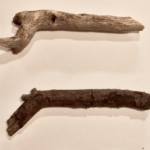
Ted Purves and Suzanne Cockrell
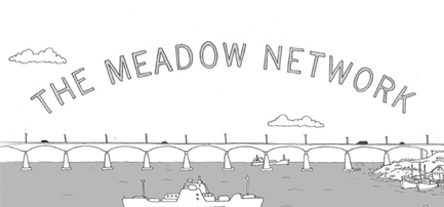
Ted Purves and Suzanne Cockrell
2009 - $1,750 The Meadow Network Newspaper
The Meadow Network project, which was started in 2009, is rooted in a broad series of interviews with city residents from diverse backgrounds. What traditions of growing, preserving, festival and bartering do they hold on to? How would they see these as manifesting in the cities that they reside in and their everyday life? What would future urban green space come to resemble? The interviews were conducted at city farms, open markets, gardening stores and public parks.
The interviews accompanied by photographs, drawings and maps have been compiled into free newspapers. Three issues have been completed to date, and two more issues are currently in planning.
PDF versions of the newspapers can be downloaded at
http://fieldfaring.wordpress.com/the-meadow-network/
Susanne Cockrell and Ted Purves work collaboratively under the rubric of fieldfaring to create social art projects that investigate the overlay of urban and rural systems upon the lives of specific communities. They ask questions about the nature of people and place as seen through social economy, history and local ecology. The collaboration began with a two and a half year public project (2004-2007), Temescal Amity Works, which facilitated and documented the exchange of backyard produce, conversation, and collective biography within the Temescal Neighborhood of Oakland, CA.
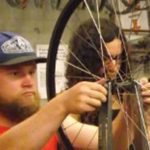

The Bike Kitchen
2011 - $3,000 General Support
San Francisco’s Bike Kitchen teaches people of all ages and backgrounds how to repair bicycles. Through bike repair and bicycle related projects, the Bike Kitchen promotes personal development and provides leadership opportunities. Operating as a cooperative shop, they provide affordable ways to acquire and maintain a bike, offer youth programs, encourage re-use and recycling, and work with community groups to get more people on bicycles. The Bike Kitchen is a 501(c)(3) non-profit run by volunteers.
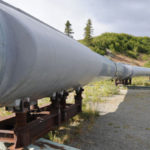
The Center for Land Use Interpretation

The Center for Land Use Interpretation
2008 - $5,000 Petroscape Program
The Center for Land Use Interpretation (CLUI) is a research and education organization interested in understanding the nature and extent of human interaction with the earth’s surface, and in finding new meanings in the intentional and incidental forms that we individually and collectively create. They believe that the man made landscape is a cultural inscription that can be read to better understand who we are, and what we are doing.
The organization was founded in 1994, and since that time it has produced dozens of exhibits on land use themes and regions, for public institutions all over the United States, as well as overseas. CLUI publishes books, conducts public tours, and offers information and research resources through its library, archive, and website.
Petroscape
Petrochemical products coat the surfaces that surround us, stuff the products we buy, build our food, move ourselves and our goods, and run the American machine. We all know that, yet we know so little about it. Improving the understanding of the physical form of this landscape, and its relationship to us, is the subject of this ongoing program.
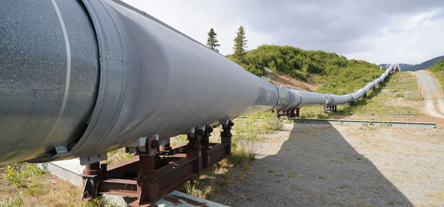
2008 - $5,000 Petroscape Program
The Center for Land Use Interpretation (CLUI) is a research and education organization interested in understanding the nature and extent of human interaction with the earth’s surface, and in finding new meanings in the intentional and incidental forms that we individually and collectively create. They believe that the man made landscape is a cultural inscription that can be read to better understand who we are, and what we are doing.
The organization was founded in 1994, and since that time it has produced dozens of exhibits on land use themes and regions, for public institutions all over the United States, as well as overseas. CLUI publishes books, conducts public tours, and offers information and research resources through its library, archive, and website.
Petroscape
Petrochemical products coat the surfaces that surround us, stuff the products we buy, build our food, move ourselves and our goods, and run the American machine. We all know that, yet we know so little about it. Improving the understanding of the physical form of this landscape, and its relationship to us, is the subject of this ongoing program.
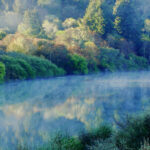
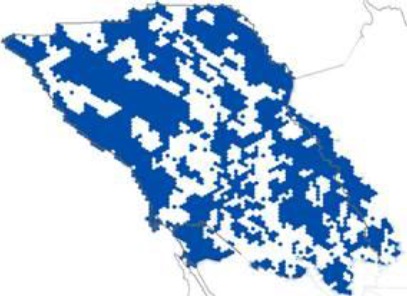

TOGETHER Bay Area (formerly Bay Area Open Space Council)
2015 - $10,000 General Support
TOGETHER Bay Area (formerly Bay Area Open Space Council) is a regional coalition of nonprofits, public agencies, and Indigenous Tribes working together for climate resilient lands – including lands that are natural, working, rural, and urban. The health of these lands is integral to a thriving Bay Area and the health of all of the people and communities in our 10 county region. TOGETHER connects, convenes, and catalyzes action for a just and equitable society where we live in relationship with the land that sustains us now and will sustain future generations.
This coalition stands on the shoulders of the Bay Area Open Space Council. The Council was formed in 1990, helped form the Bay Area Program of the California Coastal Conservancy in 1997, launched the Conservation Lands Network in 2011 and CLN 2.0 in 2019, convened the annual Open Space Conference and dozens of Gatherings, and helped form relationships across the region.
The Conservation Lands Network (CLN) is a regional conservation strategy for the San Francisco Bay Area, with a bold but achievable goal of conserving 50% of the Bay Area’s ecosystems by 2050 and a science-based pathway for achieving it. It features decision making tools that support strategic investments in land protection and stewardship.
The CLN focuses on conservation in areas that represent the region’s biodiversity and support ecological function across the nearly 5 million acres that comprise the 10 Bay Area counties. Updated in November 2019, CLN 2.0 equips the Bay Area to respond to climate change, connect landscapes, and connect upland and bayland conservation.
The CLN was launched in 2005 by the Bay Area Open Space Council and continues with TOGETHER Bay Area in order to leverage data, tell stories, and make the case for resilient lands.

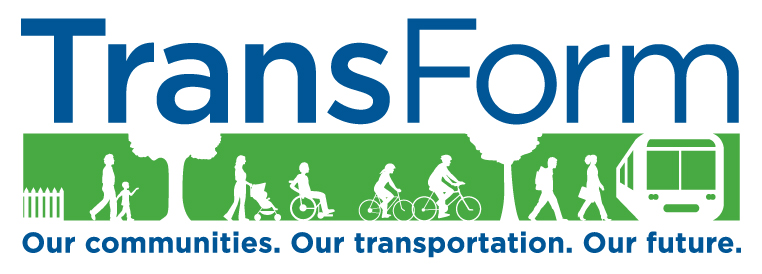
TransForm
2023 - $15,000 Survive and Thrive Transit
2019 - $15,000 General Support
2016 - $10,000 General Support
2015 - $10,000 General Support
For nearly eighteen years TransForm has helped envision and advocate for affordable, walkable neighborhoods with a wide variety of transportation choices to connect residents to health care, schools, shopping and work. The Innovative Cities project plans to integrate new mobility options, such as car-sharing and bike sharing, into community development, with special consideration given to Oakland and San Jose. The GreenTRIP Connect program is developing a web-based interactive map that documents the economic, health and environmental benefits of on-site car sharing and bike sharing with free memberships, and free transit passes for residents.
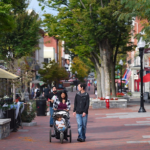

Transportation for America
2023 - $15,000 Reduce VMT/zero emissions vehicles report
Smart Growth America (SGA) envisions a country where no matter where you live, or who you are, you can enjoy living in a place that is healthy, prosperous, and resilient. SGA works across the nation with elected officials at all levels, real estate developers, chambers of commerce, transportation and urban planning professionals, and community members to improve everyday life for people across the country through better development. SGA’s team includes experts in land use, real estate development, transportation, and economic development.
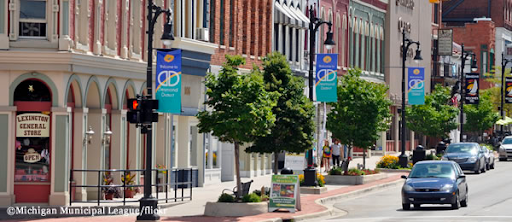
SGA currently focuses on three specific priorities: Climate change and resilience, advancing racial equity, and creating healthy communities. Solving huge challenges like climate change, affordable housing, the need for vibrant local economies, or how to affordably connect people to jobs and services requires an interdisciplinary approach across a span of interrelated areas: housing, zoning, planning, land use, economic development, transportation, and others.
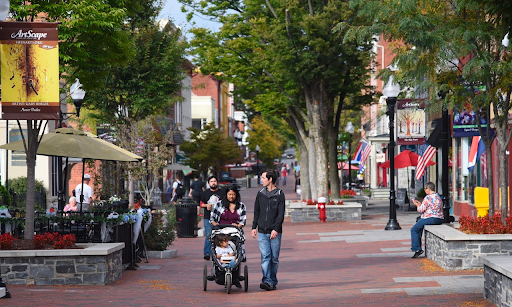
At the core of SGA’s overall approach is empowering communities through direct technical assistance, powerful advocacy, and thought leadership to realize our vision of livable places, healthy people, and shared prosperity.
We are known for path breaking reports like:
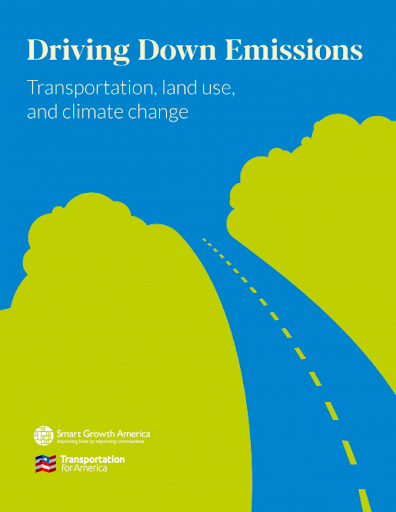
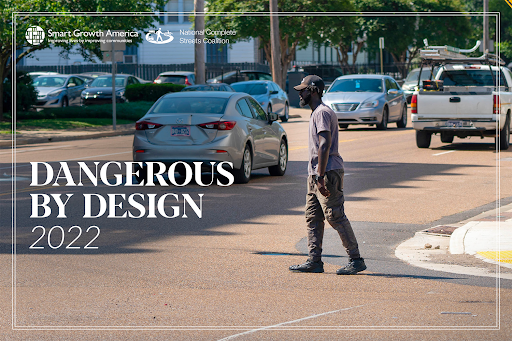
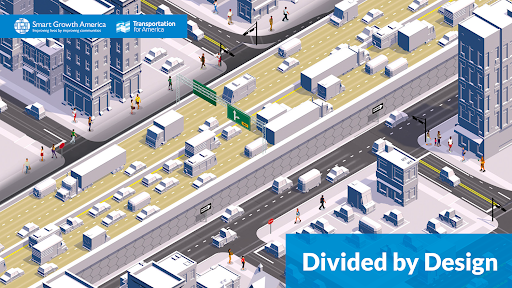
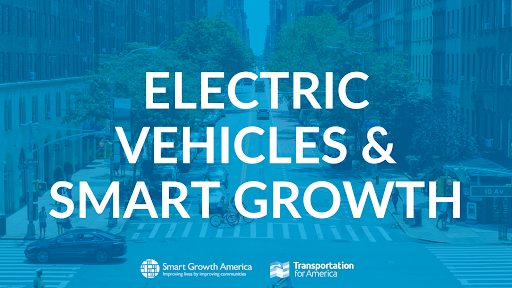
The organization also comprises a number of sub-brands, including Transportation for America, which focuses on creating a transportation system that connects people to jobs and essential services no matter how they travel, how much money they earn or their physical abilities. Our transportation priorities are to:
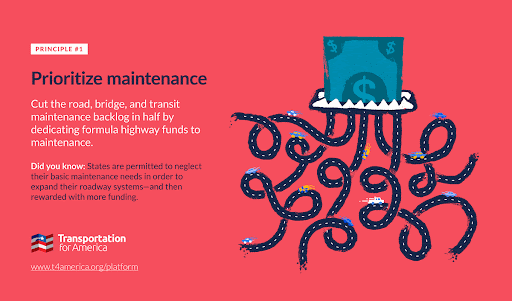
Transportation for America currently partners with the Clean Vehicles Coalition to manage the Coalition for Helping America for Rebuild and Go Electric (CHARGE) to decarbonize the transportation sector through both electrification and improving the efficiency of the transportation system to require less driving.
Transportation for America is currently examining the question: What balance of fleet conversion and reducing driving is needed to keep emissions low enough to stave off catastrophic global climate change? To answer this question, we will:

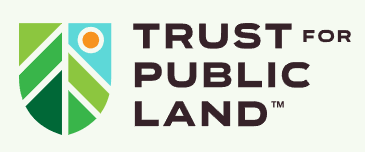
Trust for Public Land
2022 - $20,000 Green Schoolyards Oakland
2021 - $20,000 India Basin
2018 - $20,000 India Basin Waterfront Park
2017 - $20,000 Parks for People Project: India Basin, San Francisco
2017 - $20,000 Innes Avenue Project
2016 - $20,000 Innes Avenue Project
2015 - $20,000 Innes Avenue Project
The Trust for Public Land (TPL) is dedicated to helping local communities with their conservation needs by raising funds, conducting research, designing and renovating parks, playgrounds, trails and gardens, as well as acquiring and protecting land. With over 30 offices across the nation, TPL works to provide access to nature for everyone and has completed over 5,000 conservation projects nationwide.
Locally, TPL is developing a plan to transform the 900 Innes Avenue property from an industrial brownfield into a vibrant community park featuring climate-smart infrastructure. Redeveloping the property is an important step in creating a more resilient shoreline that is adapted for sea level rise. 900 Innes will create green space and alternative transportation options for the under-served residents of Bayview/Hunters Point.
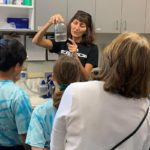
Turtle Island Restoration Network
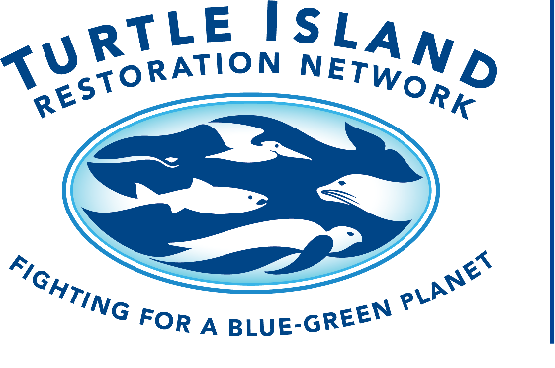
Turtle Island Restoration Network
2019 - $10,000 10,000 Redwoods Project
Turtle Island Restoration Network (TIRN) has been a leading advocate for the world’s ocean and marine wildlife for more than 30 years. Over decades, TIRN has worked tirelessly to create long-lasting positive change based on science to help protect numerous marine species including sea turtles, whale sharks, and coho salmon.
With humble beginnings as an all-volunteer grassroots effort, TIRN has continued to grow and help affect change throughout the world. Today, TIRN responds rapidly to environmental threats to the ocean, inland watersheds, and marine wildlife.
Programs span across the globe, including the coastal waters of the Galapagos Islands, the sandy beaches of Galveston, Texas and the redwood forests of California, to protect sharks, coho salmon, marine mammals, and seabirds from a myriad of threats including industrial overfishing, destruction of coastal and riverine habitat, and the threat of climate change from fossil fuel projects. With TIRN’s Salmon Protection And Watershed Network (SPAWN) initiative, the organization engages in on-the-ground protection and restoration of endangered coho salmon and threatened steelhead in the Bay Area and the environment on which we all depend. SPAWN uses a multi-faceted approach to accomplish its mission, including habitat restoration, conservation research and monitoring, science-based advocacy, grassroots empowerment, public and environmental education, media campaigns and collaboration with other organizations and agencies who share our vision.
Through its work, hundreds of thousands of sea turtles and other marine species have been saved through grassroots empowerment, consumer action, strategic litigation, hands-on restoration, environmental education, and by promoting sustainable local, national and international marine policies.
The critical work TIRN has influenced is witnessed across the globe and has contributed substantial and measurable change for the environment, wildlife and people.
To save 50,000 sea turtles annually, TIRN helped shut down a Mexican sea turtle slaughterhouse and convinced Mexico to stop all legal turtle slaughter and join the Endangered Species of Wild Fauna and Flora Convention on Foreign Trade (CITES).
TIRN’s role in reforming regulations and policies helped close 250,000 square miles of the Pacific Ocean to protect sea turtles and marine mammals from harmful fishery practices.
The organization’s work restored over 100,000 square feet of crucial creekside habitat for wild coho salmon, an issue close to the organization’s headquarters in the San Francisco Bay Area.
These are just a few examples of the significant changes TIRN has affected in its commitment to acting as wise, willing, and able stewards of life in the earth’s oceans and on its lands.
A network of thousands of supporters, volunteers, and pro bono professionals help TIRN accomplish its mission of protecting marine wildlife and the ocean and inland watersheds that sustain them.
With an extensive history of caring for the state and health of the planet, TIRN has had an influential effect for over three decades. Today, it remains true to its original vision and is able to respond rapidly to environmental threats to our ocean, streams and marine wildlife.
TIRN will not be slowing down and will continue to work for the planet and look forward to a bright future for our blue-green planet.
The 10,000 Redwoods Project is a science-based, multi-faceted program to plant thousands of redwood trees and other native forest and riparian vegetation to address (1) climate change by sequestering carbon; (2) critically endangered salmon recovery through habitat restoration; and (3) improved water quality through creek bank stabilization and filtering run-off. The 10,000 Redwoods Project provides a textbook demonstration of how we simultaneously improve the ecosystem services that are vital to both wildlife and humans by protecting and enhancing critical habitat.
The 10,000 Redwoods Project addresses the global issue of climate change by creating a carbon sink to fight climate change through local, hands-on action and education by:
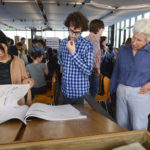
Jane Wolff UF 2013 - Jane Wolff’ holding an early prototype card from Bay Lexicon. Bay Lexicon exists as an exhibit in the Bay Observatory, and will be available as a book in the fall of 2021, through McGill-Queens Press, Montreal Canada.
Jason Groves holding the Anthropocene Viewer. The viewer was designed by Smudge Studio with the intention of providing the file free for download from their website. Groves utilized the viewer in a lecture and made copies for the Bay Observatory.
Jason Groves UF 2015 - Jason Groves interacting with guests at the Atlas Tables in the Bay Observatory during an evening program.
Rene Yung UF 2018 - Rene Yung working with museum preparator, Courtney Scott in the Exploratorium machine shop on an interpretive installation for the Bay Observatory on the culture politics, history and discrimination of Chinese shrimp fishing in San Francisco Bay
Vincent Medina Louis Trevino (Ohlone Cafe) UF 2021 - Vincent Medina during the Ricketts Symposium Boat Tour describing Ohlone territorial areas in the East Bay.
Urban Fellows
Jane Wolff – 2013 is an associate professor at the Daniels Faculty of Architecture, Landscape, and Design at the University of Toronto, Canada. Her work explores cultural landscapes dealing with the hybrid ecologies formed by interactions between environmental processes and human intervention. Jane began working with the Exploratorium in 2008 as an artist-in-residence where she began research for the development of a visual dictionary exploring the landscape visible from the Bay Observatory at the Exploratorium’s new home at Piers 15 and 17. She became the first Urban Fellow in 2013 and from her initial research developed Bay Lexicon, a field guide to San Francisco’s shoreline and a work of activist scholarship. It is a case study in the development of a nuanced vocabulary for observing San Francisco Bay using drawing and writing to define complex landscape terms. Bay Lexicon exists both as a physical artwork, in the Bay Observatory and will be published in 2021, by McGill-Queens University Press. Jane and was instrumental in contributing many of the early concepts for the Bay Observatory working closely with staff and participated in numerous talks, workshops and planning sessions. With Matthew Booker and Susan Schwartzenberg, Jane collaborated on the concept and development of the - Bay As It Is Symposium after Ed Ricketts, 2017
Matthew Booker – 2014 is an environmental historian and author of, Down By the Bay, San Francisco Between the Tides. He is Associate Professor of History at North Carolina State University, where he founded the Visual Narrative research program. Matthew’s fellowship launchedwith an advisor & local colleague gathering that included a visit with Jane Wolff. Matthew and Jane shared a strong interest in ways we could strengthen our ability to address contemporary Bay Area environmental issues of climate change and sea level rise as well as ways to further engage historical, social and political issues in our museum context. Matthew deepened our understanding of the human connection to the Bay – how people in the 19th and early 20th century considered the Bay as a commons - and the rocky transition into the corporate control of the Bay’s resources. Matthew engaged with staff and did research in the Observatory. He also brought scholars and potential funders into our realm broadening our circle of friends and colleagues. He advised us on a new visualization for our topographic table called Changing Shorelines – a history of sea level change in the Bay Area, from 18,000 years ago with future projections of sea level rise. Matthew authored, Observing San Francisco Bay, essay # 3, 2016. His public talks included, The Edible Bay, A History of Our Relationships with Local Foods, Intimacies of Time and Place, Reading San Francisco Bay, with Jane Wolff. Matthew and Jane were the principle designers of the Bay As It Is Symposium, after Ed Ricketts in 2017.
Jason Groves – 2015 is a Germanic scholar (University of Washington, Seattle) whose work uses 19 and 20th century German thinkers, who through their literary writings sought to open up the imagination to a geological time scale. He explores how this work might help us better understand our place in life on Earth and our unique human response-ability for the planet. Jason worked with the Observatory team throughout the summer of 2015. He developed a pathway through the Exploratorium culminating in the Bay Observatory exploring the anthropocene as could be expressed in specific exhibits, views and found objects and experiences. Jason profoundly connected to the staff and contributed much to our transition from the local landscape to considering “deep” time (geologic time) and the human impact on the environment. He proclaimed that the Bay Observatory be renamed - the Anthropocene Observatory. Jason participated in several events and curated several talks including, Can Poetry Save the Bay.
Pireeni Sundaralingam - 2016 is a cognitive scientist, researcher, poet and playwright who was a principal advisor on Human Potential for the Museums of the United Nations. Pireeni began her fellowship in the summer of 2016 by organizing a public program with 100 Japanese youth (on a scholarship program to the US) who had experienced the earthquake, tsunami and the nuclear accident in Fukushima in 2011. Designated as Youth Ambassadors learning to find hope after disaster – this program brought American and Japanese youth together in a series of presentations, workshops, poetry and dialogue to consider ways to persevere in this age of climate uncertainty. Pireeni further curated a series of panels and programs on the importance of language and observation in organizing human actions regarding climate change. She participated in numerous programs during her Fellowship and authored, Observing the Observer: The Observatory as incubator for Resilience, as essay # 8.
Sara Dean - 2017 is a designer and architect in the Bay Area. She is co-founder of IF/THEN Studio, a collaborative community platform in Berkeley. She is also Chief Designer at Modern Empathy, a universal-design line of homes. Her work considers the implications of emerging digital technologies on public engagement and urban life in the Anthropocene. Dean worked with the Exploratorium in two capacities: one as an Urban Fellow and another as an artist in a project entitled Artistic Practice Toward Urban Resilience (APUR). These combined efforts produced the Climate Compass project that will be launched in 2021. The Climate Compass is a large decal installed on the ground. Standing on the Compass, one may face north, towards the shore, or the hills, and see the predictions for sea level rise at that site. Climate data from RiSER (a project of the University of California, Berkeley) is combined with this installation to bring climate science more directly into the public conversation. This project was in conjunction with BART and the San Francisco Department of Recreation and Parks. Climate Compass installations will eventually be at four BART stations that are at particular risk for sea level rise, as well as at the foot of Market Street and on the Embarcadero in front of the Exploratorium.
Rene Yung - 2018 is an internationally exhibiting artist, designer, writer, and thinker, whose poetic and incisive works fluidly cross disciplines to address social and cultural issues in the globalized environment. Yung’s fellowship centered on researching the historic shrimp fishing community that once thrived on the margins of SF Bay in the late 19th and early 20th century. Her investigation concentrated on ways to bring this forgotten history into the regional discussion of sea level rise. This work led to an installation—and now public exhibit—for the Bay Observatory on the stories of the Chinese shrimpers who struggled to make a living despite discrimination and racism. Rene is passionate about bringing cultural history into sea-level rise adaptation planning, and has participated in numerous discussions with Observatory staff, our professional colleagues and the other Urban Fellows. Yung’s Retracing the Chinese Shrimp Fishery of San Francisco Bay was published in Fall 2019 as the 10th essay in the Fisher Bay Observatory essay series. She is the founder and executive director of Chinese Whispers, http://chinese-whispers.org.
mak- ‘amham/Ohlone Café, Vincent Medina and Louis Trevino 2021 Vincent and Louis are the founders of the Ohlone Café. They are both members of traditional Ohlone communities. Vincent is Cochenyo and a member of the Muwekma Ohlone Tribe, and Louis is a member of the Rumsen Ohlone community. Both work to revive their cultural traditions and languages. The Ohlone café is a pop-up restaurant specializing in traditional foods. The menu changes seasonally with ingredients gathered by Native people in Ohlone territory. Vincent and Louis begin their fellowship in the spring of 2021 and will be working both with the Bay Observatory and the Living Systems Galler
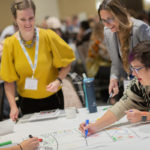
Urban Sustainability Directors Network

Urban Sustainability Directors Network
2021 - $15,000 Nexus Program
2018 - $10,000 Climate Equity Leaders Program
2017 - $10,000 General Support
2016 - $10,000 General Support
2015 - $10,000 General Support
USDN is the primary network through which local government sustainability and climate practitioners access mission-critical resources and collaborate to advance their work. As of early 2021, over 230 communities and 1700 practitioners participate from across the US and Canada. As a member-led network, USDN enables groups of cities and counties to inspire and learn from each other, solve shared challenges, and engage in collective action to achieve impact in their communities. By bringing members and field partners together, USDN broadens, informs, and synthesizes perspectives on crucial issues and catalyzes new partnerships.
Programming focuses on three key areas: building practitioners’ capacity, accelerating action and innovation, and influencing enabling systems. Members highly value the support they receive through USDN and report that the network is critical to their success. From our annual member impact survey in December 2020:
Two overarching strategies guide USDN programming:
The Nexus Project is one illustration of where USDN’s core strategies and programming focus areas converge and come to life. The Nexus is step-by-step guidance to help local government practitioners who are trying to fundamentally transform the traditional approach to climate planning and practice. It focuses on recognition of current power structures and outlines how to shift power to communities (particularly marginalized communities) as part of any process.
Part of what is unique about the Nexus Project is that members learn to operationalize equity and work across department and technical silos in a supported process. The project provides 1:1 coaching for local government practitioners through USDN staff, and also brings in community partner coaches for government practitioners and community partner organizations to help them work together better. This holistic and multilayered approach is transforming how government practitioners approach their work and how communities and government can collaborate to build more equitable and sustainable communities.
"We have transformed our work on climate to lead across the nexus as a result of the USDN Innovation Fund Grant - we have learned significantly from our peers in this space. The direct training and support from Baja [Resilience Director and Nexus Project Staff Lead] has helped us to build crucial interdepartmental support and relationships with other departments and jurisdictions, especially with the County. We're working to transform the countywide approach to their All Hazard Mitigation Plan because of Baja's technical support." -- USDN member
USDN is grateful to the SEED Fund for its support of the Nexus Project.
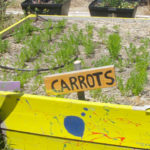
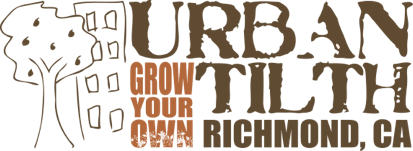
Urban Tilth
2009 - $5,000 General Support
Urban Tilth cultivates agriculture in West Contra Costa County to help the community build a more sustainable, healthy and just food system. Working with schools, community-based organizations, government agencies, businesses, and individuals, Urban Tilth aims to develop the capacity to produce 5% of Contra Costa County’s own food supply.
Operating on the belief that environmental restoration is inextricably connected to economic and social restoration, they are committed to training and employing local people, working collaboratively within community, establishing cross sector coalitions, engaging in local policy decisions and growing food locally and organically using the principles of permaculture to take into consideration waste reduction as well as water and soil conservation, preservation and restoration.
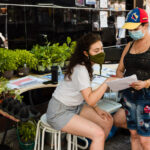
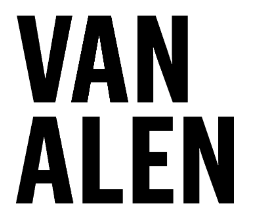
Van Alen Institute
2018 - $10,000 Climate Council
2011 - $5,000 Life at the Speed of Rail Publication
2009 - $10,000 Manhattan 2409
2008 - $5,000 David Benjamin and Soo-in Yang, Living City
Van Alen Institute is an independent nonprofit architectural organization that promotes inquiry into the processes that shape the design of the public realm.
For over a century, the Van Alen Institute has cultivated a fellowship of design practitioners and scholars, awarded excellence in design, and fostered dialogue about the evolving role of architecture in the public realm. The Institute’s community of fellows, members, participants and public audiences is an integral part of that dialogue, shaping and expanding our definition of ‘public architecture’ and its impact on contemporary civic life.
Living City: A Public Interface to Air Quality in New York
Living City is a full-scale prototype building skin designed to breathe in response to air quality. During their fellowship term, David Benjamin and Soo-in Yang developed one of the first architecture prototypes to link local responses in a building to a distributed network of sensors throughout the city. With Living City, Benjamin and Yang confront the air as the most public and politicized of spaces in the city—shared by all but invisible, often divisible, and intensely debated and controlled. Using New York City as a research lab, they propose an architecture that functions as a public interface to air quality, creating a platform for an ecology of building skins where individual buildings receive, share and respond to data as part of a collective network. For more information about Living City, visit www.thelivingcity.net.
Eric W. Sanderson, Manhattan 2409
Eric W. Sanderson’s Mannahatta project envisions the long-term future of Manhattan as an ecosystem in the context of its rich ecological and social history. Sanderson uses his extensive research and documentation of the diverse ecological landscapes of Mannahatta to reflect on where New York has come from and speculates on how sustainability can be built into the structure and practice of New York over the next 400 years. During his fellowship term at Van Alen Institute, Sanderson pursued the research and writing of a brief for a design competition on the future sustainability in New York City in stages approximately 50, 150 and 400 years from now, prompted by sustainable characteristics of Mannahatta. As part of this work, Sanderson shared the data resources and ecological concepts of the Mannahatta Project with the design community at large, and he organized a public roundtable with leading thinkers in urban sustainability and ecology to discuss and debate the ecological themes that Mannahatta raises in contrast to the city today.
Life at the Speed of Rail
How will high-speed rail change American life in the coming decades? This multimedia competition seeks the visions of the architectural design community, planners, graphic designers, artists—anyone who wants to contribute to the discussion surrounding high-speed rail. In this Call for Design Ideas, entrants are asked to produce projects and narratives picturing the wide-ranging impacts that a new transportation network will have on the nation’s communities, whether urban or rural, rail-riding or car-centric, heartland or borderland. By collecting these ideas and images of a transformed America—be they specific, pragmatic, or speculative—we’ll better understand the hopes and fears of our current moment and be better equipped to decide whether and how we build this new infrastructure.


Veggielution
2010 - $3,000 Support for Cold Storage Construction
Veggielution is a two acre non-profit community farm dedicated to creating a more sustainable food system in San Jose, California. Veggielution works to empower people to change the way they think about food by getting their hands in the soil, connecting with the land, and tasting the fruits of their labor. In low-income communities, it isn’t just about the personal choice to eat healthier – as that choice often isn’t available. By fostering positive social interactions between all those who participate in their community farm, participants feel as though they are a part of a larger farm community, which is centered on the land that they work, the food that they share, and the understanding that they are all dependent on each other and the natural environment that sustains us.


Walk San Francisco
2023 - $15,000 Climate Justice in the Bayview
2022 - $10,000 General Support
2021 - $10,000 20mph Speed Limit in the Tenderloin: Data Study
2016 - $10,000 Green Connections
2014 - $10,000 Vision Zero
2013 - $10,000 General Support
2012 - $6,000 General Support
San Francisco can and should be the safest, most walkable city in the United States. Yet every day, at least 3 people on average are hit by cars while walking in our city.
Walk San Francisco exists to change this. Walk San Francisco (Walk SF) was founded in 1998 by a small group of volunteers united by the belief that the city’s streets and sidewalks should be safe and welcoming for all.
Today, Walk SF is known as a tireless advocate in pushing for – and winning – life-saving changes across the city. Some defining wins include: 15 MPH speed zones around 181 schools; San Francisco’s second-in-the-nation commitment to Vision Zero; the removal of private vehicles from Market Street; the tax on Uber and Lyft; and groundbreaking changes to some of the city’s most dangerous streets.
Walk SF also founded and supports San Francisco Bay Area Families for Safe Streets, a group of traffic crash survivors and the loved ones of people who have been killed or injured in traffic crashes. Members offer emotional support and work together to win changes to prevent more lives from being destroyed by traffic violence. Each November, Families for Safe Streets and Walk SF hold World Day of Remembrance for Road Traffic Victims
In addition, Walk SF works to increase the number of children safely getting to school on foot, bicycle, scooter, and transit as part of the San Francisco Safe Routes to School Partnership. Walk SF also brings together the voices of the 30+ community-based organizations, nonprofits, and civic groups that make up the Vision Zero Coalition, plus leads the Senior and Disability Work Group. And throughout the year, Walk SF offers a variety of walks to both explore the pure joys of exploring the city on foot and the challenges faced due to unsafe streets.
In 2019, Walk SF launched its first-ever three-year strategic plan. The long-term goals outlined in it are to: 1) end pedestrian traffic deaths and severe injuries, and 2) increase the number of trips people take on foot.
As part of the strategic plan, Walk SF prioritized both what it works on and how it will work. Crash data shows that San Francisco’s residents living in communities of concern suffer the most from traffic violence. These are communities with the most low-income people, immigrants, communities of color, seniors, children, and people with disabilities. That is why while Walk SF works in the interest of all pedestrians in San Francisco, Walk SF prioritizes its efforts on communities and/or geographies where issues of equity are most at play.
Walk SF also focuses its outreach and education in communities and populations that have disproportionately been impacted by traffic violence and often not engaged in the community process. Walk SF works hard to ensure a community’s voice is authentically brought forward to guide advocacy efforts, and build coalitions across diverse communities. That’s why Walk SF goes much deeper in its community engagement and advocacy work in neighborhoods like the Tenderloin, where traffic violence is a daily reality for the nearly 40,000 people who live there.
Walk SF’s vision is for a San Francisco where everyone – of every age and ability – can get around safely. And the benefits of making this vision a reality ripple far beyond the precious lives that will be saved. When it is safe and inviting for many more people to walk in San Francisco, it also means reducing climate emissions. It means thriving neighborhood businesses and greater health. It means changing the fact that people of color are more likely to live, work, and walk on dangerous streets. It means stronger and more connected communities.
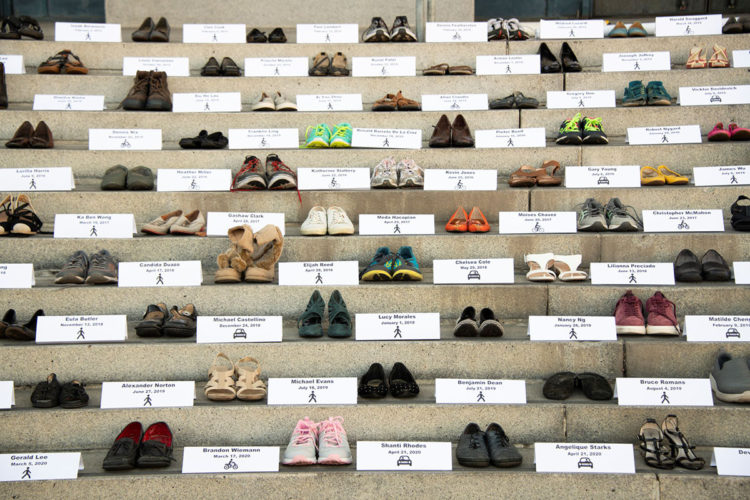
A memorial to the lives lost in traffic crashes in San Francisco since January 2014. From the 2020 World Day of Remembrance for Road Traffic Victims. Photo by William McLeod with permission from Walk SF.
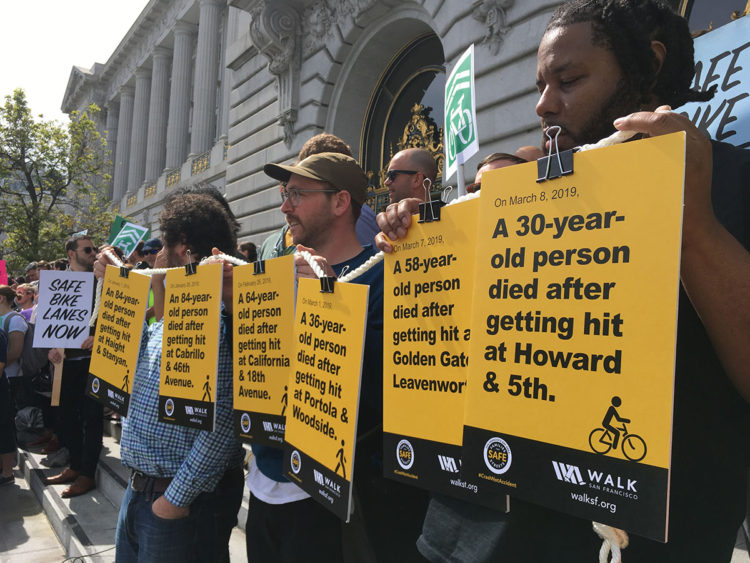
At a March 2019 action on the steps of City Hall to shine a light on recent traffic fatalities. Photo by Walk SF.
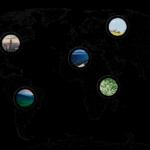

What is Missing?
2016 - $10,000 What Is Missing? Project
2015 - $10,000 What Is Missing? Project
2014 - $10,000 What Is Missing? Project
Maya Lin is an artist and environmentalist. She established the What Is Missing? project to create, through science-based artworks, an awareness about the present mass extinction of species due to habitat degradation and loss, and to emphasize that by protecting and restoring habitats, carbon emissions can be reduced and species & habitats protected. Designed as Maya Lin’s last memorial, the What Is Missing? project takes place in multiple sites and forms dedicated to creating a connection between people and the species and places that have disappeared or are predicted to become extinct.
This project is a call to action and helps participants and viewers reimagine the human relationship to nature. It creates hope by showing individuals what they can do to make a difference through their own consumer choices. The What Is Missing? project is made up of sound and media sculptures, traveling exhibitions, video installations, a physical and digital book and a website. Part of the website is devoted to introducing Greenprint for the Future, which when completed will help visitors examine their land use and resource consumption patterns and will demonstrate how changing these practices can effectively help the planet.
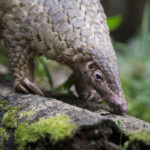

World Wildlife Foundation
2019 - $5,000 Amazon Rainforest Relief
In 1961, a small group of ardent naturalists and conservationists created the World Wildlife Fund (WWF) to “conserve the world’s fauna, flora, forests, landscape, water, soils, and other natural resources.” Until that time, conservation had been largely the domain of scientists. The group launched a public appeal to save the black rhino, whose numbers had dwindled to less than 2,500 animals. Thanks to persistent conservation actions across Africa, black rhino numbers have doubled from their historic low 20 years ago.
With a 60-year history of results, a foundation grounded in science, and a global network, WWF is dedicated to addressing conservation challenges on a grand scale. WWF works in partnership with others across multiple sectors and industries to protect the world’s most important ecosystems and their species and habitats; strengthen local communities’ ability to conserve natural resources; transform markets and policies; and mobilize millions of people to support conservation. WWF is organized around six goals—Climate, Forests, Freshwater, Oceans, Sustainable Food, and Wildlife—that support its mission and foster innovation.
Headquartered in Washington, DC, WWF-US is an independent affiliate of the international WWF
Network and plays an important role in WWF’s conservation programs all over the world. WWF
works in 100 countries and has 1.2 million members in the United States and more than five million supporters globally.
WWF partners with a wide range of groups and individuals to protect iconic wildlife, conserve vast land and waterscapes, and promote community livelihoods and economies. Thanks to the commitment of donors, members, and partners, WWF tackles solutions that build a better tomorrow for both people and nature. Most recently, WWF:
WWF is grateful to the Seed Fund for supporting the Emergency Amazon Fire Fund. In 2019, more than 27,000 square miles of the Brazilian Amazon and 19,300 square miles of Bolivia burned. Communities—as well as jaguars, tapirs, and other threatened wildlife—lost their homes, as volunteers worked arduously to extinguish fires with little to no training and only basic equipment. WWF raised more than $1.4 million that helped furnish firefighting equipment—including gloves, protective goggles, machetes, chainsaws, water pumps, hoses; and even food, water, and medical supplies–for impacted communities. The Fund also provided communication radios and GPS, car rentals, and fuel to deliver supplies in remote areas, as well as equipment and training to monitor ongoing fires and provide alerts to those at risk. To mitigate the threat of future fires, local organizations, communities, and key partners used WWF funding to launch fire awareness campaigns and convene fire management and prevention workshops.